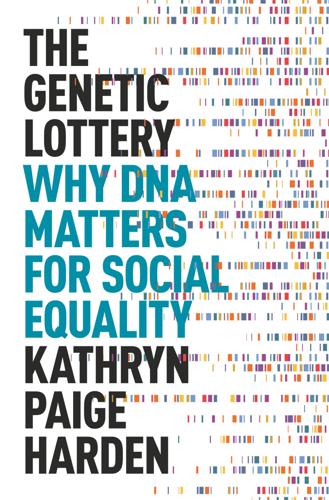
The Genetic Lottery: Why DNA Matters for Social Equality
by
Kathryn Paige Harden
Published 20 Sep 2021
Those estimates were then compared to the scientific consensus about the heritability of an outcome, as estimated in twin studies—that is, studies that compare how similar identical twins are to how similar fraternal twins are for some characteristic.6 I will return to the definition of heritability and the details of twin studies in chapter 6, but for now, I just want to point out that lay people’s estimates of how much genetics contribute to differences between people match heritability estimates from twin studies fairly closely. And one group of people had intuitions that tracked twin heritabilities especially closely: mothers of multiple children.
…
Heritability research persists because it is answering a question about whether people’s genes, an accident of birth over which they have no control, caused differences between people in things we care about—differences in education and income and well-being and health—in the societies in which we actually live.10 The Case of the Missing Heritability Especially in the wake of Herrnstein and Murray’s The Bell Curve, the assumptions of twin studies have come under close scrutiny. And, politically-motivated or no, there are good reasons to scrutinize the assumptions of twin studies. They do indeed make a lot of assumptions, many of which might not strike you as particularly plausible. For one, the twin study assumes that identical twins aren’t treated more similarly to one another just because they are identical—the “equal environments assumption.” If you’ve ever seen twins dressed in outfits that perfectly match, down to their socks and hair bows, that assumption might seem like a bit of a stretch.11 More generally, genes and environments are correlated in complicated ways that can be difficult to measure and statistically account for, leading to the persistent suspicion that maybe twin studies are attributing to genes what should really be claimed by the environment.
…
News reports about twins or triplets often focus on babies who were separated at birth and grew up in different homes,2 like the brothers from the movie Three Identical Strangers,3 but the vast preponderance of twin studies have been conducted with twins who were all raised in the same home by their birth parent(s). From here on out, unless I specifically refer to twins “reared apart,” I am talking about twins who are raised together in the same home. The basic logic of this type of twin study is probably familiar. Consider pairs of identical twins—the Weasley twins from Harry Potter; the Winklevii (Cameron and Tyler Winklevoss), who challenged Mark Zuckerberg’s claim to Facebook.
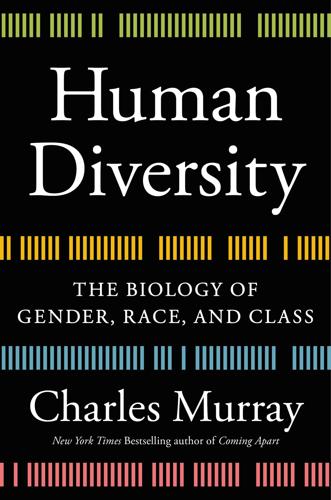
Human Diversity: The Biology of Gender, Race, and Class
by
Charles Murray
Published 28 Jan 2020
The more competitive the industry and the more cognitively demanding the job, the less influence family wealth has. The Polderman Meta-Analysis of Twin Studies The generality of Proposition #8 is most economically established with a single source, a meta-analysis of twin studies published in 2015. The study was conducted by a team of seven Dutch, Australian, and American scholars. It was conceived and led by Danielle Posthuma, head of the Department of Complex Trait Genetics at Vrije Universiteit in Amsterdam. First author was Tinca J. C. Polderman.12 It was a mammoth undertaking, effectively covering all twin studies from 1958 to 2012. The article reporting the results, “Meta-analysis of the Heritability of Human Traits Based on Fifty Years of Twin Studies,” involved 2,748 publications and 14,558,903 twin pairs that explored 17,804 traits.
…
First, genomic data can answer questions about genetic nurture (discussed in chapter 13) that twin studies cannot. In twin studies, the shared environment is the same for both twins, which raises difficult technical problems when there is no variation around the family mean (for example, as in the case of divorce, which is by definition completely shared by both MZ and DZ twins).34 Analyses using polygenic scores or GCTA are not constrained to twins and thereby escape that problem. The broader advantage of genomic analyses in this regard is that the complexities of genetic nurture can be unraveled. “Although twin studies have reported for decades that most environments are nearly as heritable as behaviors, this work has been limited to twin-specific environments,” write Maciej Trzaskowski and Robert Plomin.
…
The range of environments in which separated twins are raised is narrow—adoption agencies don’t knowingly place infants with impoverished or dysfunctional parents.16 In contrast, it is not difficult to assemble large samples of twins who have been raised together. Their home environments span the range. The Validity of Twin Studies The ACE model makes a strong claim: It can disentangle the roles of nature and nurture. You will not be surprised to learn that many challenges to the validity of that model have been mounted. The logic I have just presented entails five primary assumptions. Three of them, discussed in the note, involve fewer problematic issues.[17] Two of the assumptions are at center stage in the debate over the validity of twin studies: Humans mate randomly (no assortative mating). DZ and MZ twins experience their common environments equally, known in the literature as the equal environments assumption (EEA).

The Gene: An Intimate History
by
Siddhartha Mukherjee
Published 16 May 2016
Junk science props up totalitarian regimes. And totalitarian regimes produce junk science. Did the Nazi geneticists make any real contributions to the science of genetics? Amid the voluminous chaff, two contributions stand out. The first was methodological: Nazi scientists advanced the “twin study”—although, characteristically, they soon morphed it into a ghastly form. Twin studies had originated in Francis Galton’s work in the 1890s. Having coined the phrase nature versus nurture, Galton had wondered how a scientist might discern the influence of one over the other. How could one determine if any particular feature—height or intelligence, say—was the product of nature or nurture?
…
Galton was on the right track—except for a crucial flaw: he had not distinguished between identical twins, who are truly genetically identical, and fraternal twins, who are merely genetic siblings (identical twins are derived from the splitting of a single fertilized egg, thereby resulting in twins with identical genomes, while fraternal twins are derived from the simultaneous fertilization of two eggs by two sperm, thereby resulting in twins with nonidentical genomes). Early twin studies were thus confounded by this confusion, leading to inconclusive results. In 1924, Hermann Werner Siemens, the German eugenicist and Nazi sympathizer, proposed a twin study that advanced Galton’s proposal by meticulously separating identical twins from fraternal twins.III A dermatologist by training, Siemens was a student of Ploetz’s and a vociferous early proponent of racial hygiene.
…
The environment was all about environments. The return of the native—the emergence of the gene as a major driver for psychological impulses—was not as easy to orchestrate. In part, it required a fundamental reinvention of that classic workhorse of human genetics: the much maligned, much misunderstood twin study. Twin studies had been around since the Nazis—recall Mengele’s macabre preoccupation with Zwillinge—but they had reached a conceptual gridlock. The problem with studying identical twins from the same family, geneticists knew, was the impossibility of unbraiding the twisted strands of nature and nurture.

The Diet Myth: The Real Science Behind What We Eat
by
Tim Spector
Published 13 May 2015
Non-geneticists say that the remarkable diversity between humans suggests that it is the random effects of our surroundings and of the food we eat that are the major determinant. Two earlier twins studies in the US produced no conclusive evidence of a genetic influence. But when I heard microbiome expert and future collaborator Ruth Ley present the results at a meeting I thought the studies were too small, and that we could answer the question properly with my cohort of 11,000 twins. I had spent twenty-odd years performing twins studies on hundreds of different traits, from religious beliefs and sexual preferences to vitamin D and body-fat levels, in order to determine whether characteristics or diseases were mainly influenced by genes or by environment.
…
They also seemed to gain the fat in the same places as their twin, around the belly or more unhealthily around the intestines and liver – what is called visceral fat. This classic study, in which the students were overfed like lab rats, might now have trouble getting ethical approval (though we don’t protect actors like Bradley Cooper who gained 40 lb for the film American Sniper and was paid millions of dollars for his role in it). The twins study unequivocally shows that much of how quickly we use energy or store fat and so gain weight is clearly down to our genes. My studies of thousands of twins in the UK and other studies around the world have consistently shown that identical twins – who, as mentioned earlier, are genetic clones – are much more similar to each other in body weight and fat than are fraternal twins, who share only half the same genes.
…
Individual habits to do with eating (for instance, whether you are a grazer or a gorger) are not just picked up by watching your family or friends eat well or badly: they also have genetic components. This includes a like or dislike of certain foods, such as salads, savoury snacks, spices and garlic. How often you take regular exercise was also shown by our twin consortium to have a strong genetic component right across the world.8 A combination of novel experimental and cross-national twins studies have shown that people with genes for obesity also have genes that make them less likely to exercise than naturally skinny people, thereby highlighting some of the extra pressures obese people are under when they try to slim. Their genes and bodies conspire against them when they try to burn off calories.

The Cult of Smart: How Our Broken Education System Perpetuates Social Injustice
by
Fredrik Deboer
Published 3 Aug 2020
Fletcher, and Merrill Hiscock, “The Flynn Effect: A Meta-Analysis,” Psychological Bulletin 140, no. 5 (2014): 1332. 7. Tim Radford, “Have You Heard? It’s in the Genes,” The Guardian, September 25, 2002. 8. Jay Joseph, The Trouble with Twin Studies: A Reassessment of Twin Research in the Social and Behavioral Sciences (New York: Routledge, 2014). 9. Jefferson M. Fish, “Why Twin Studies Don’t Separate Genes and Environment,” Psychology Today, June 22, 2010. 10. Brian Palmer, “Double Inanity,” Slate, August 23, 2011. 11. Nancy L. Segal, “The Value of Twin Studies: A Response to Slate Magazine/Research Reviews/Twin News Worth Noting,” Twin Research and Human Genetics 14, no. 6 (2011): 593. 12.
…
The notes of this book contain references to many useful sources on this topic. Twin and Adoption Studies So how do we know what we know about the heritability of cognitive traits like personality and intelligence? First, we know from two types of studies that take advantage of our understanding of biological parentage, twin studies and adoption studies, sometimes collectively referred to as kinship studies. As you’re likely aware, there are two types of twins, colloquially referred to as fraternal and identical. Fraternal twins are born when two sperm fertilize two eggs, and they are no more genetically similar than any other pair of siblings.
…
For this reason, many studies have drawn from the same data sets, such as the Minnesota Twin Registry, which seeks to gather data from all of the twins born in that state over the course of several decades. The drawback with so many researchers drawing from a limited pool of data is that any problems with that data would be replicated across different studies. Another approach for data collection was needed to further validate the twin studies, and that took the form of adoption studies. Adoption studies take advantage of adoption’s tendency to bring the genetically dissimilar into a common environment. Adopted siblings share very similar environments, the home, but are no more genetically similar than two strangers. Therefore, looking at the similarities between adopted children and their siblings helps us to ascertain the degree of genetic influence on a trait.

Stolen Focus: Why You Can't Pay Attention--And How to Think Deeply Again
by
Johann Hari
Published 25 Jan 2022
If there are factors in the environment causing attention problems, identical twins are more likely to both experience them to the same extent than non-identical twins. So, he explains, “twin studies are unable to disentangle the potential influences of genes and environment.” This means the statistics we often hear—of 75 to 80 percent of ADHD being due to genetics, for example—are built on an unreliable foundation. Such figures are, Jay says, “misleading, and misunderstood.” It seemed to me implausible that so many prominent scientists would draw on this technique if it was so flawed. I was conscious that in my previous books, I drew on evidence from twin studies myself. But when I asked some scientists who argue that ADHD is primarily genetically driven about the flaws in these studies, many of them readily conceded that these criticisms have some legitimacy, in a way that was disarming.
…
Usually, they would then simply switch the conversation onto other reasons why we should believe this is a genetically based problem. (I’ll come to them in a moment.) I came to believe that twin studies are a kind of zombie technique, which people keep referencing even though they know they can’t fully defend it, because it tells us what we want to hear—that this problem is mostly in our kids’ genes. When you set aside these twin studies, Professor James Li told me, “time after time, every single study” looking at the role any individual gene plays in causing ADHD finds that “no matter how you measure [it], it is always small.
…
So as I absorbed all this, I began to ask myself: Does this mean genes play no role in ADHD? There are some people who get close to arguing this—and that is where I think the ADHD skeptics go too far. James explained to me that although the twin studies overestimate the role of genes, there’s a new technique called SNP heritability, which figures out how much of a characteristic is genetically driven by using a different method from twin studies. Instead of comparing types of twins, these studies compare the genetic makeup of two totally unrelated people. It could pluck, say, you and me, and see whether matchups in genes between us correlate with a problem we might both have—like (say) depression or obesity or ADHD.

Behave: The Biology of Humans at Our Best and Worst
by
Robert M. Sapolsky
Published 1 May 2017
Horwitz et al., “Rethinking Twins and Environments: Possible Social Sources for Assumed Genetic Influences in Twin Research,” J Health and Soc Behav 44 (2003): 111. 23. Work of some of the most prominent defenders of the approaches: Kenneth Kendler: K. S. Kendler, “Twin Studies of Psychiatric Illness: An Update,” AGP 58 (2001): 1005; K. S. Kendler et al., “A Test of the Equal-Environment Assumption in Twin Studies of Psychiatric Illness,” Behav Genetics 23 (1993): 21; K. S. Kendler and C. O. Gardner Jr., “Twin Studies of Adult Psychiatric and Substance Dependence Disorders: Are They Biased by Differences in the Environmental Experiences of Monozygotic and Dizygotic Twins in Childhood and Adolescence?”
…
Miller et al., “The Heritability and Genetic Correlates of Mobile Phone Use: Twin Study of Consumer Behavior,” Twin Res and Hum Genetics 15 (2012): 97. 20. L. Littvay et al., “Sense of Control and Voting: A Genetically-Driven Relationship,” Soc Sci Quarterly 92 (2011): 1236; J. Harris, The Nurture Assumption: Why Children Turn Out the Way They Do (NY: Free Press, 2009); A. Seroczynski et al., “Etiology of the Impulsivity/Aggression Relationship: Genes or Environment?” Psychiatry Res 86 (1999): 41; E. Coccaro et al., “Heritability of Aggression and Irritability: A Twin Study of the Buss-Durkee Aggression Scales in Adult Male Subjects,” BP 41 (1997): 273. 21.
…
Coccaro et al., “Heritability of Aggression and Irritability: A Twin Study of the Buss-Durkee Aggression Scales in Adult Male Subjects,” BP 41 (1997): 273. 21. E. Hayden, “Taboo Genetics,” Nat 502 (2013): 26. 22. Some strong criticisms of twin and adoption approaches: R. Rose, “Genes and Human Behavior,” Ann Rev Psych 467 (1995): 625; J. Joseph, “Twin Studies in Psychiatry and Psychology: Science or Pseudoscience?” Psychiatric Quarterly 73 (2002): 71; K. Richardson and S. Norgate, “The Equal Environments Assumption of Classical Twin Studies May Not Hold,” Brit J Educational Psych 75 (2005): 339; R. Fosse et al., “A Critical Assessment of the Equal-Environment Assumption of the Twin Method for Schizophrenia,” Front Psychiatry 6 (2015): 62; A.
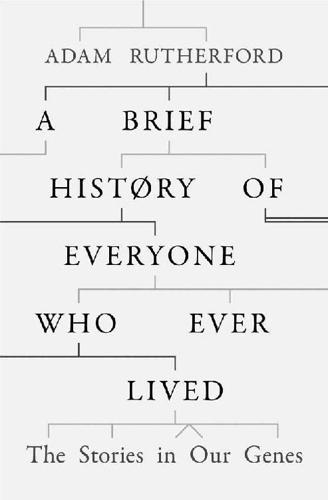
A Brief History of Everyone Who Ever Lived
by
Adam Rutherford
Published 7 Sep 2016
Alfred Sturtevant, one of the giants of genetics in the first half of the twentieth century, had first suggested tongue rolling as a Mendelian trait in 1940, a single allele bestowing the ability on its bearer or not. After the twin studies he, like a good scientist should, changed his mind, and said in 1965 that he was ‘embarrassed to see it listed in some current works as an established Mendelian case’. It is still taught in schools today. Twin studies also showed that identical siblings vary in the way they clasp their hands. Ear lobes are not either attached or not: some are, some aren’t, most people are in between. Elements of the genetics of eye colour are true.
…
So, what are the chances of this oh-so northern European trait going extinct? Roughly, somewhere between none and zero. Red hair appearing exclusively in beards is not uncommon, though we don’t really know why. Forgive us; it’s not really been a research priority over the last few decades. The ginger twin study showed that my mutation, Val60Leu, occurred most often in ‘fair/blonde and light brown’ hair, three things I emphatically am not. That again is typical for genetics – presence or absence of gene variants are rarely fully absent or fully present in populations. Such is the nature of human variation: we’re very variable.
…
That assumption was born out of a misunderstanding similar to the one that made us wager on a vastly inflated number of genes at the inception of the genomic age. It didn’t turn out that way. So many of the genetic skylines that emerged out of the ongoing era of the GWAS did not come out as the high clear peaks of Manhattan, or even London, but the low skyline of Oxford or Cambridge. Diseases that we know from family histories and twin studies which have a strong measurable heritable component gave up few major skyscrapers that revealed a key faulty gene. Instead, we got dozens or even hundreds of small peaks, many not qualifying as being statistically robust alone, but frequent enough to stand out a little. Many of the variations seen in people with a disease under investigation were known to us, but appeared to play no biologically relevant role in the disease aetiology.
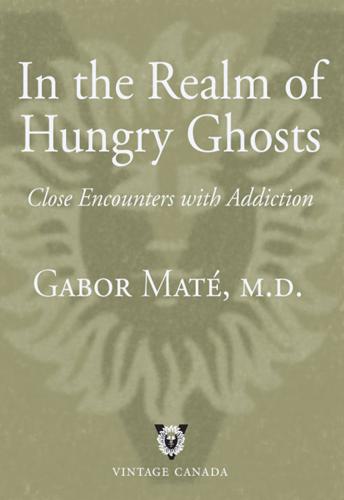
In the Realm of Hungry Ghosts: Close Encounters With Addiction
by
Gabor Mate
and
Peter A. Levine
Published 5 Jan 2010
“On her best friend Bev’s advice, we will have cupcakes and grape soda following the service,” said the announcement for her memorial event. APPENDIX I Adoption and Twin Study Fallacies The weighted emphasis on genetic causation in medical literature, particularly when it comes to mental dysfunctions and addictions, is astonishing given the shaky logic on which the supporting studies are based. As one review stated: A critical analysis of the assumptions of any adoption or twin study, coupled with the succession of retractions of the genetic linkage studies indicates that the evidence for the genetic basis of mental illnesses is far from overwhelming.1 The two assumptions on which the heavily gene-based estimates in addiction medicine rely are not sustainable if we examine them closely.
…
Similar objections, and a wide range of others, could be made—and have been made—to the other adoption studies.6 Twin studies are accepted to be the gold standard of genetic surveys of human populations. Many genetic researchers believe that we can separate the effects of genes from those of the environment by comparing identical with fraternal twin pairs. The underlying belief is that identical and fraternal twin pairs both share the same environment to the same degree. As a geneticist who has done many twin studies admits, “our twin models assume that the exposure to relevant environmental factors was similar in monozygotic and dizygotic*37 twins.”7 As we will now see, this is a completely unwarranted assumption.
…
A Necessary Small Step: Harm Reduction PART VII: THE ECOLOGY OF HEALING 29. The Power of Compassionate Curiosity 30. The Internal Climate 31. The Four Steps, Plus One 32. Sobriety and the External Milieu 33. A Word to Families, Friends and Caregivers 34. There Is Nothing Lost Memories and Miracles: An Epilogue Postscript APPENDICES I: Adoption and Twin Study Fallacies II: A Close Link: Attention Deficit Disorder and Addiction III: The Prevention of Addiction IV: The Twelve Steps Endnotes Acknowledgments Permissions About the Author Praise for In the Realm of Hungry Ghosts Copyright To beloved Rae, my wife and dearest friend, who has lived these pages with me for forty years through thick and thin, for better or worse, and always for the best.
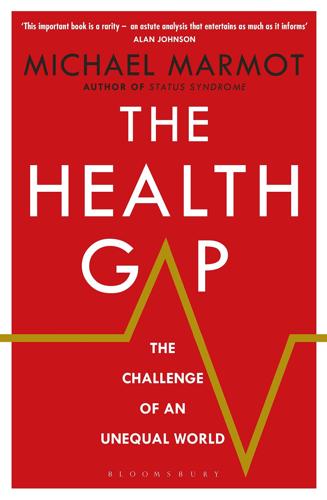
The Health Gap: The Challenge of an Unequal World
by
Michael Marmot
Published 9 Sep 2015
Identical twins are identical genetically, but they also share environments. Fraternal twins share half their genes, on average, but also share environments. Twin studies suggest that obesity is 50–90 per cent heritable – a big genetic component.14 But note: twin studies are, in general, performed in a restricted range of environments. The assumption that fraternal twins share environments to the same extent as identical twins could also be questioned. But that is not my main point here. It is: how do we reconcile the results of twin studies with results from other types of studies? I have been interested in the health of migrants to the UK from the Indian subcontinent.
…
Unless the Punjabi men with a genetic predisposition to put on weight were more likely to become immigrants, which seems unlikely, the men in the Punjab and the men in London of Punjabi origin are likely to be similar genetically. Which means that, in this case, overweight is chiefly environmental. A standoff. Twin studies say it is predominantly genetic. Migrant studies say it is predominantly environmental. The environmentalists can criticise the twin studies as understating the environmental component, as I have done; the geneticists can criticise the migrant studies as not controlling the genetic component adequately, and they do. The point should be that if there is a restricted range of environmental exposure, all the variation will be genetic.
…
Where there is marked environmental variation, over 140 years in the Netherlands for example, genetic differences will not tell us why there has been such spectacular growth in average height. The same principles apply to early child development. In twin studies, for example, genetic variations are important for IQ and a range of other characteristics. If the environment is largely controlled – twins come from the same family – what else is there but genes? Twin studies do not address the question of why you and your partner, both with university education, are more likely to have children who go to university than is a couple neither of whom graduated from high school.

Visual Thinking: The Hidden Gifts of People Who Think in Pictures, Patterns, and Abstractions
by
Temple Grandin, Ph.d.
Published 11 Oct 2022
Behavioural Brain Research 362 (2019): 266–72. Bradlee, Quinn. “Quinn Interviews Steven Spielberg.” Recorded September 2012. Friends of Quinn. YouTube, March 14, 2019. https://www.youtube.com/watch?v=jTX0OxE_3mU. Brandt, K. “Twin Studies: Histories and Discoveries in Neuroscience.” BrainFacts, June 12, 2019. https://www.brainfacts.org/brain-anatomy-and-function/genes-and-molecules/2019/twin-studies-histories-and-discoveries-in-neuroscience-061119. Brinzea, V. M. “Encouraging Neurodiversity in the Evolving Workforce—The Next Frontier to a Diverse Workplace.” Scientific Bulletin, Economic Sciences (University of Pitești), 18, no. 3 (2019).
…
Frontiers in Physiology, May 8, 2013. doi.org/10.3389/fphys.2013.00098. Thaler, L., S. R. Arnott, and M. A. Goodale. “Neural Correlates of Natural Human Echolocation in Early and Late Blind Echolocation Experts.” PLOS ONE (2011). doi.org/10.1371/journal.pone.0020162. Than, K. “A Brief History of Twin Studies.” Smithsonian Magazine, March 4, 2016. https://www.smithsonianmag.com/science-nature/brief-history-twin-studies-180958281/. Tikhodeyev, O. N., and O. V. Shcherbakova. “The Problem of Non-Shared Environment in Behavioral Genetics.” Behavioral Genetics 49, no. 3 (May 2019): 259–69. doi: 10.1007/s10519-019-09950-1. Treffert, D. A. “A Gene for Savant Syndrome.”
…
Each one of these refers to possible substitutions at a single rung on the ladder of DNA. Sometimes a rung on the ladder changes and nobody knows why. This is called a de novo mutation and occurs in a small percentage of people diagnosed with autism. It’s impossible to talk about genetics and not run into twin studies. Scientists have long been drawn to twins because they provide the perfect petri dish to observe how nature and nurture play out. Identical twins (MZ, or monozygotic) share 100 percent of the same genes, while fraternal twins (DZ, or dizygotic) share 50 percent, which is the same as non-twin siblings.
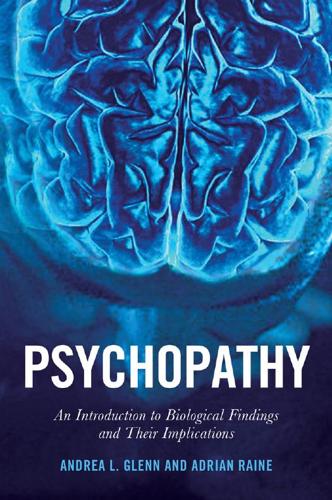
Psychopathy: An Introduction to Biological Findings and Their Implications
by
Andrea L. Glenn
and
Adrian Raine
Published 7 Mar 2014
Before outlining evidence from these studies, the methodologies used in the field of behavioral genetics are first briefly outlined. Behavioral Genetics Methodology Behavioral genetics studies usually involve twin or adoption studies. Since there are currently no adoption studies of psychopathy, we focus on the twin methodology. Twin studies typically compare samples of monozygotic (MZ) or “identical” twins, who share 100 percent of their genes, to dizygotic (DZ) “fraternal” twins, who share approximately 50 percent of their genes. It should be noted that when we say 50 percent, we are actually referring to only the genes that can vary across individuals; all humans share about 99 percent of their genes, but the remaining 1 percent varies, and it is this portion that is of interest in genetics studies.
…
The gray matter concentration in these regions had previously been found to be reduced in individuals with psychopathic traits. The second step was to establish whether common genetic factors were associated with reduced gray matter concentrations in these regions and with psychopathic traits. Using twin study methodology, the authors found that in the posterior cingulate, nearly half of the genetic influences between gray matter concentration and psychopathic traits overlapped, suggesting that a subset of genes may confer risk for psychopathic traits via their effects on gray matter concentrations in this region.
…
“Reduced sensitivity to others’ fearful expressions in psychopathic individuals.” Personality and Individual Differences 37 (6):1111–22. Blake, P. Y., J. H. Pincus, and C. Buckner. 1995. “Neurologic abnormalities in murderers.” Neurology 45:1641–47. Blonigen, D. M., S. R. Carlson, R. F. Krueger, and C. J. Patrick. 2003. “A twin study of self-reported psychopathic personality traits.” Personality and Individual Differences 35:179–97. Blonigen, D. M., B. M. Hicks, R. F. Krueger, C. J. Patrick, and W. G. Iacono. 2005. “Psychopathic personality traits: Heritability and genetic overlap with internalizing and externalizing psychopathology.”

Cognitive Gadgets: The Cultural Evolution of Thinking
by
Cecilia Heyes
Published 15 Apr 2018
For example, are children whose mothers have talked to them often about thoughts and feelings—who have had many opportunities for cultural learning about the mind—better able to infer beliefs, or to recognize emotions, than children whose mothers have talked to them relatively little about mental states (Taumoepeau and Ruffman, 2006; 2008)? If the answer is no, we have evidence of poverty, and if the answer is yes, we have evidence of wealth. The “twin studies” used in behavioral genetics fall into this category. In a typical twin study, a cognitive ability is measured at one time-point in a large number of children who are either monozygotic (identical) or dizygotic (fraternal) twins. Using the fact that monozygotic twins have identical genotypes, whereas dizygotic twins have an average of 50 percent of their genes in common, these studies compare variation in cognitive ability within monozygotic pairs with variation within dizygotic pairs to calculate the extent to which development of the cognitive trait is based on genetically inherited information, rather than information derived from the environment (Plomin, DeFries, McClearn, and McGuffin, 2001).
…
It is far from easy to parse cognitive development—to identify the contributions of nature, nurture, and culture to the formation of a cognitive mechanism—and each of the methods outlined above is highly fallible. When learning opportunity A (for example, talking with a parent about mental states) correlates with cognitive ability B (mindreading), it could be because a hidden factor C (linguistic skill) is influencing both A and B, not because A is causing B. Likewise, twin studies may indicate a relatively large genetic contribution to development simply because the people included in the study happen to have grown up in very similar environments, and, in cross-species comparisons, convergent evolution can be mistaken for a strong influence of learning on development. Given these risks, in this area of science, as in most others, we have to place more trust in research that includes effective control procedures, and to look for convergent evidence—for signs that studies using different samples and methods are pointing to the same conclusion.
…
See also Genetic inheritance Genetic inheritance, 39; attentional biases, 53, 60–66; cognitive instincts, 12, 66–67, 78; cognitive traits, 46, 73–74; developmental disorders, 149–150; executive function, 73–74; “genetic starter kit,” 52, 54–57, 75; human cognition mechanisms, 3, 52–76, 163; inherited information, 27–29, 45–51, 66–67, 171–172, 172–173; language, 171–175, 174f, 178, 180; mindreading, 163; selective social learning, 92, 99; social motivation, 56–57, 140; twin studies, 47–48, 151–152, 207–208. See also Genetic evolution “Genetic starter kit,” 52, 54–57, 75 Genetics vs. environment. See Nature vs. nurture Gestures: facial, 123f, 124–125, 132; group bonding, 125, 208, 209; imitation, adults, 132; imitation, infants, 128 Godfrey-Smith, P., 112 “Gradualist” genetic theories of language, 174–175, 174f Grammar: artificial learning, 185–187, 195–196; education and knowledge levels, 189; human language diversity, 178–180; as language acquisition device, 45–46, 65, 164–165, 170, 171–175, 176, 179–180, 181; Universal, 170, 171–175, 174f, 188, 190–191, 196 Grapheme-phoneme reading routes, 21f, 38–39 Grasping, 124 Gricean communication, 166–167 Group behavior, cooperative, 141–142, 202–203, 209.

The Impact of Early Life Trauma on Health and Disease
by
Lanius, Ruth A.; Vermetten, Eric; Pain, Clare
Published 11 Jan 2011
In order to quantify the extent of genetic vulnerability for a given disorder, the term “heritability” was coined. In statistical genetics, heritability refers to the proportion of variation in a trait that is directly explained by genetic factors. Since the early twentieth century, researchers have used twin studies to ascertain the heritability of schizophrenia and major affective disorders, and these studies have established a firm genetic basis for these syndromes. Several twin studies focusing on Vietnam War veterans have shown that genetic factors play a significant role in PTSD as well. True et al. [52] found that heritability accounted for 32% of the variance in liability for PTSD symptoms in 4042 twin pairs who served in the Vietnam era.
…
Vulnerability:€A new view of schizophrenia. Journal of Abnormal Psychology, 86, 103–126. True, W. R., Rice, J., Eisen, S. A. et al. (1993). A twin study of genetic and environmental contributions to liability for posttraumatic stress symptoms. Archives of General Psychiatry, 50, 257–264. Stein, M. B., Jang, K. L., Taylor, S., Vernon, P. A. and Livesley, W. J. (2002). Genetic and environmental influences on trauma exposure and posttraumatic stress disorder symptoms:€A twin study. American Journal of Psychiatry, 159, 1675–1681. Comings, D. E., Muhleman, D. and Gysin, R. (1996). Dopamine D2 receptor (DRD2) gene and susceptibility to posttraumatic stress disorder:€A study and repliÂ� cation.
…
Since child neglect is associated with adolescent and adult antisocial behavior, this is another area of neurobiological study that warrants examination. Genetics and child neglect Recently, researchers have examined genetic variables and early life stress to understand the contribution of each variable to child outcomes. In a large-scale twin study of 1116 monozygotic and dizygotic 5-year-old twin pairs, domestic violence, a form of neglect, was associated with a negative effect on IQ in a �dose-dependent fashion [85]. Children exposed Chapter 12: Neurobiology of child neglect to high levels of domestic violence had IQ scores eight points lower than children who were not exposed.
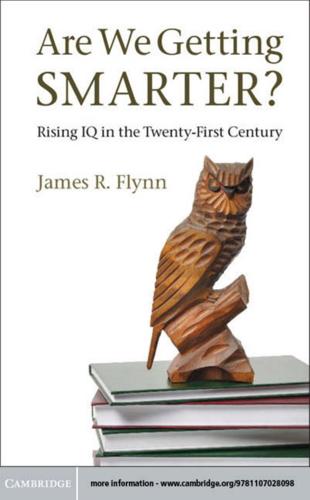
Are We Getting Smarter?: Rising IQ in the Twenty-First Century
by
James R. Flynn
Published 5 Sep 2012
absence would have lowered the ratio of adults to children in the home but women expanded their horizons and industrialization proceeded apace. A multiplicity of factors is at work, and moderate luctuations of one factor do not count for much. In passing, there is a debate about whether or not twin studies show that the effects of family environment on IQ fade away by adulthood, at least in the developed world (Jensen, 1998). Those who believe that they do will ind it hard to defend early childhood nutrition as an important inluence on IQ. Differences in nutrition would be primarily between middle-class families and poor families.
…
There would have to be an environmental factor that varied between groups but that was utterly uniform within groups. It would have to be a sort of blindfold that afflicted every black equally and was totally absent among 167 Are We Getting Smarter? whites. Then it could explain the IQ gap between black and white but would not register in twin studies. Whenever two black families raised black twins, there would never be a case in which one of them did not impose the handicap. Whenever two white families raised white twins, there would never be a case in which one of them did impose the handicap. How absurd! The Dickens–Flynn model added a sociological dimension.
…
If their identical genes accessed identical basketball environments, they would have the same BAQ (basketball ability quotient) when they reach 18. And even though environmental factors are very powerful (imagine the effect on two short twins of getting no practice, no team play, no coaching), their potency would be missed in twin studies. Heritability is estimated purely on the basis of the tendency of the twins to get the same IQ, ignoring the fact that their identical genes for intelligence have allowed them to beneit from environments for intelligence whose quality is highly similar. The potency of doing homework, getting good feedback, liking school, getting into an honors stream, getting the best teachers is entirely missed.
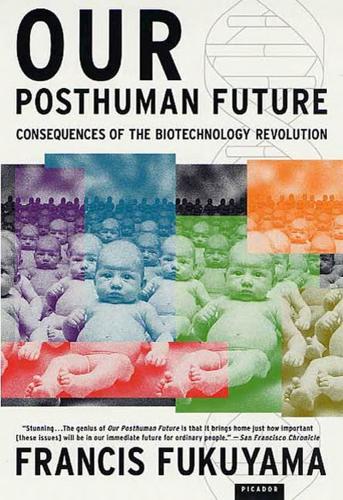
Our Posthuman Future: Consequences of the Biotechnology Revolution
by
Francis Fukuyama
Published 1 Jan 2002
Later researchers, going back over Burt’s work, demonstrated that the charges of deliberate fabrication were themselves fabricated.27 In any event, Burt’s studies were not the only ones of monozygotic twins that showed a high degree of heritability; there have been a number of others, including the 1990 Minnesota twin study, whose results are very similar to Burt’s. A serious and complex debate continues unabated among psychologists over the existence and nature of Spearman’s g, with highly credible scholars making arguments on both sides.28 From the moment it was first articulated in 1904, Spearman’s theory that intelligence was a single thing has been attacked by those who believe that intelligence is in fact a collection of related abilities, each of which can vary within the same individual.
…
The study showed that the criminality of a biological parent was a stronger predictor of criminal behavior in the child than the criminality of an adoptive parent, suggesting some form of genetic transmission of criminal propensities. Academic critics of genetic theories of crime have made many of the same criticisms as with intelligence.37 Twin studies often fail to detect subtle aspects of shared environment, fail to control for non-genetic factors that might be influencing correlations, or rely on surveys with small sample sizes. Travis Hirschi and Michael Gottfredson have argued that because crime is a socially constructed category, it cannot have biological origins.38 That is, what one society counts as a crime is not necessarily illegal in another; how then can one speak of someone having a “gene for” date rape or loitering?
…
Lewontin and his colleagues have argued that the actual figure is significantly lower than this, to the point that hereditary factors, for them, ultimately play a very small role in determining IQ.7 This is an empirical issue, and one where Lewontin appears to be wrong: the consensus of the discipline of psychology, relying on twin studies, maintains that though the figure is lower than the Murray-Herrnstein estimate, it is still in the range of 40 to 50 percent. The degree to which a trait or behavior is heritable will vary greatly; preferences in music are almost entirely shaped by environment, which has almost no effect on a genetic disease like Huntington’s chorea.
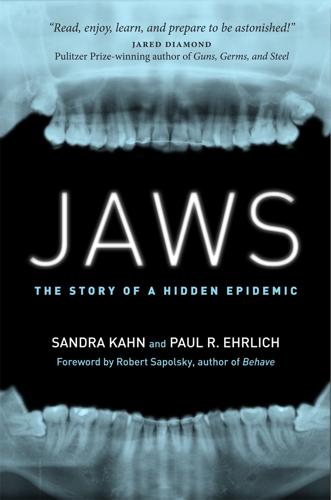
Jaws
by
Sandra Kahn,Paul R. Ehrlich
Published 15 Jan 2018
Little, specialist in long-term effects of orthodontic treatment, concluded that after orthodontic treatment room for the tongue shrinks and malocclusion returns, but the degree of relapse varies from individual to individual.7 It is rare to find children who have had orthodontic corrections and maintain the straightness achieved into adulthood. In John Mew’s identical twin study (which we describe in the following discussion), observations of jaw growth in family members in different environments, long-term research on the stability of postretained orthodontic results (that is, how well the teeth stay in place after treatment), and, especially, basic evolutionary theory make it crystal clear that claims of a dominant role of genetics in malocclusion can be ignored in almost all cases.
…
In addition, there is substantial clinical evidence in support of an forwardontic approach simply in the results forwardontists often get in their practices. In areas as diverse as cosmology, ecology, paleontology, climatology, and human behavior, such nonexperimental approaches have provided rich insights. Like most physicians, though, many dentists have little or no training in evolution or in how research is properly done. For example, in the twin study Mew was told by colleagues his sample was “too small,” when, in fact, it was not necessarily too small at all; comparison of just one pair of identical twins can sometimes yield interesting information. A related factor is a lack of basic understanding embedded in the techniques and goals of orthodontics.
…
See Chewing; Diet; Eating, as factor in oral-facial health Forks, 30, 69 Formaldehyde, 99 Forwardontics: access to information about, 146–147; for adults, 135; and airway health, 129, 139, 139, 141; appliances used in, 127, 128, 132, 135; barriers to practice of, 149; cost of, 140, 143; effectiveness of, 131–132, 131, 132, 133, 134, 138, 138; exercises used in, 134–135; focus and goals of, 86, 88, 127–129, 131–132, 136; identical twin studies in, 130–131, 142; implementation challenges for, 88; naming of, 10, 138; origins of, 128; orthodontics compared to, 122, 140; orthopedics compared to, 135–136; overview of, 127–135; principles of, 128–129; research challenges of, 15; training of practitioners in, 148–149. See also Orthotropics Friedman, Jay W., 27 Gaming, 153 Gelb, Mike, 86 Gene-environment interactions, 19–20, 123, 130 Gerbil, 66 Germ theory, 141 Giesting, Chris, 101 Gingivitis, 74 Gokhale, Esther, 92 GOPex program, 103–107, 104, 107, 134–135, 149–150, 182n29 Gozal, David, 80, 82 Great Leap Forward, 39, 48, 60 Growth, 70, 78 Guilleminault, Christian, 80, 99 Gum chewing, 107–108 Gum disease, 32, 74 Gummy smiles, 7, 7, 114, 114 Habits, relating to oral-facial health, 1, 10–11, 13, 42–43, 46, 55–56, 92 Hang, Bill, 80 Harvold, Egil, 64–65, 74 Heart disease, 7–8 Heimlich, Henry Judah, and Heimlich maneuver, 61 Herbst oral appliance, 125 Homeoblock oral appliance, 109, 135 Honey, 31 Huggins, Hal A., 17 Hunter-gatherers: jaw structure and oral-facial health of, 6, 6, 9, 19, 24–25, 25; snoring of, 16; time devoted to work by, 95–96; tooth wear of, 9 Hygiene hypothesis, 65 Identical twin studies, 130–131, 130, 131, 142 Immune system, 66 Indigenous peoples: oral-facial health of, 31–33, 32, 33; posture of, 92–93, 93.
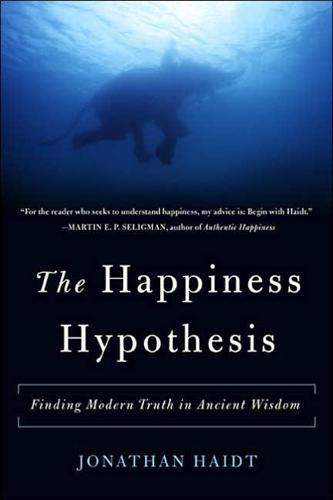
The Happiness Hypothesis: Finding Modern Truth in Ancient Wisdom
by
Jonathan Haidt
Published 26 Dec 2005
Both have sunny personalities and a habit of bursting into laughter in mid-sentence. I'hey won the cortical lottery—their brains were preconfigured to s e e good in the world. Other pairs of twins, however, were born to look on the dark side. In fact, happiness is one of the most highly heritable aspects of personality. Twin studies generally show that from 50 percent to 80 percent of nil the variance a m o n g people in their average levels of happiness c a n be explained by d i f f e r e n c e s in their genes rather than in their life experiences.28 (Particular episodes of joy or depression, however, m u s t usually be understood by looking at how life events interact with a person's emotional predisposition.)
…
This axiom was taken on faith: T h e evidence for it consisted almost entirely of correlations—usually small o n e s — b e t w e e n what parents did and how their children turned out, and anyone who suggested that these correlations were c a u s e d by genes was dismissed as a reductionist. But as twin studies revealed the a w e s o m e reach of genes and the relative unim-portance of the family environment that siblings share,30 the ancient happiness hypothesis grew ever more plausible. M a y b e there really is a set point31 fixed into every brain, like a thermostat set forever to 58 degrees Fahrenheit (for depressives) or 75 degrees (for happy people)?
…
Mothers who were aloof and unresponsive were more likely to have avoidant children, who had learned not to expect much help and comfort from mom. Mothers whose responses were erratic and unpredictable were more likely to have resistant children, who had learned that their efforts to elicit comfort sometimes paid off, but sometimes not. But whenever I hear about correlations between mother and child, I'm skeptical. Twin studies almost always show that personality traits are due more to genetics than to parenting.16 Maybe it's just that happy w o m e n , those who won the cortical lottery, are warm and loving, and they p a s s on their happy genes to their children, who then show up as securely attached. Or maybe the correlation runs in reverse: Children do have stable inborn temperaments17—sunny, cranky, or anxious—and the sunny ones are just so much fun that their mothers want to be more responsive.
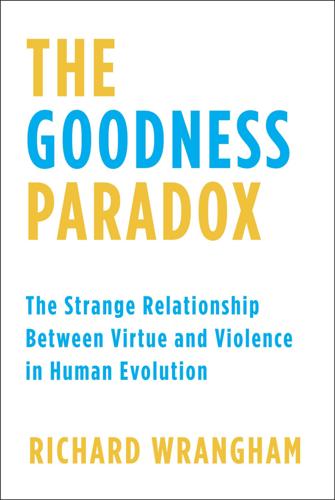
The Goodness Paradox: The Strange Relationship Between Virtue and Violence in Human Evolution
by
Richard Wrangham
Published 29 Jan 2019
The twenty-year Minnesota Twin Family Study, which collected data from 1936 to 1955, followed by decades of publication, led the way by being particularly effective at finding that kind of rare cases: twins reared apart. The researchers found that gene similarities influenced many characteristics, from intelligence, religiosity, and happiness to the way children hold their bodies when they stand.44 A 2015 survey of all available twin studies of aggressiveness, of which there had been forty in the preceding five years alone, found that the genetic heritability of aggressive behavior was typically in the range of 39 to 60 percent, averaging 50 percent. This means that, in those environments, genetic and socialization influences were roughly equally important in shaping individuals’ aggression.
…
This study’s conclusion that genetic heritability was somewhat higher for proactive than reactive aggression is the latest of several that have found similar results. Based on this early work, proactive aggression might therefore prove to be more strongly influenced by genes than reactive aggression, but for the moment all we can say is that both types show important genetic influences.47 Twin studies show the strength of genetic heritability, but they do not identify which genes are important. For the most part, despite extensive research effort, we know little about the influences of specific genes for aggression. This is not surprising. Genetic contributions have their effects through multiple biological systems, such as the stress response, the anxiety circuit, the serotonin-neurotransmitter pathway, and the dynamics of sexual differentiation.
…
Genes can influence behavior; they rarely determine it.50 * * * — Aggressive behavior is influenced by genes; proactive and reactive aggression are controlled by different neural pathways and have different scores of heritability; and certain genes promote reactive but not proactive aggression. In the future, we can expect that twin studies, adoption studies, and studies of the genes themselves will increasingly specify separate risk factors for reactive and proactive aggression. For the moment, we can say that the two kinds of aggressive behavior represent sufficiently contrasting emotional and cognitive reactions that they are subject to different biological underpinnings.
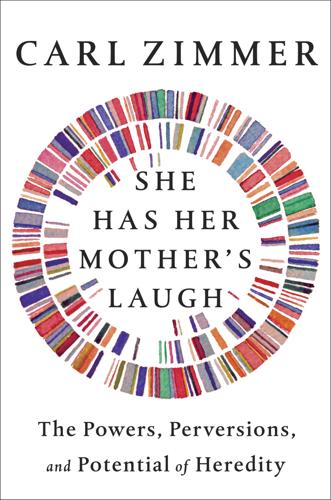
She Has Her Mother's Laugh
by
Carl Zimmer
Published 29 May 2018
Scientists can’t know that for sure, however, because twins grow up in the wilds of real life, not in a terrarium. Some critics raised the possibility that parents treat identical twins differently from fraternal ones. Since fraternal twins look different, parents might treat them more like ordinary siblings. Scientists developed twin studies as a way to study human DNA in an age when it was impossible to examine it directly. Once it became possible to read genetic markers in people’s genomes, new ways emerged to measure heritability. Peter Visscher and his colleagues found that pairs of siblings can vary tremendously in their genetic similarity, sharing as little as 30 percent of their genetic variants in common to as much as 64 percent.
…
To Génin and Clerget-Darpoux, it seemed as if geneticists had become trapped in a game they couldn’t stop playing. “Unfortunately, genetics is a clear loser,” they concluded. Other critics say that missing heritability reveals our profound ignorance about heritability itself. Some attacked twin studies, claiming they lead to estimates of heritability that are much too high. Others argued that heritability studies miss the way some mutations make the effects of other mutations stronger. One plus one, in the world of heredity, may be far more than two. Some critics went even further, arguing that missing heritability is hiding beyond genes, in some other form of heredity scientists have yet to grasp
…
“The superior proficiency at Intelligence tests on the part of the boys of superior parentage was inborn,” he wrote. Burt’s scandal stained all of twin research, leading many to dismiss it as bad science. Yet just because a field attracts a fraudster doesn’t make all the discipline’s findings wrong. Hundreds of well-designed twin studies have come to the same conclusion: Identical twins have closer intelligence test scores than fraternal twins. Even when identical twins are raised apart, their intelligence test scores stay more similar than siblings raised together. These studies have led scientists to estimate the heritability of intelligence test scores as roughly 50 percent.
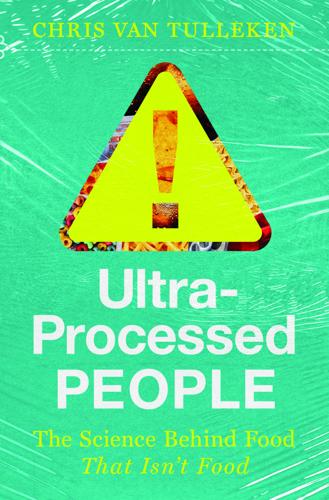
Ultra-Processed People: The Science Behind Food That Isn't Food
by
Chris van Tulleken
Published 26 Jun 2023
Clare Llewellyn made a remarkable discovery about how the same genes behave very differently in different environments, which helps to explain this difference between Xand and me. She studies the heritability of obesity using twins and leads the Gemini twin study, one of the largest twin studies ever set up. Most of what we know about the varying influence of nature and nurture on obesity, and on a vast range of other human traits, has been worked out in similar twin studies.¶ They have shown that body-fat percentage is highly heritable – up to 90 per cent.12 But, depending on the group you study, heritability can also be as low as 30 per cent. What’s going on?
…
The difference between people with the same genes and differing weights is the environment they live in, not their willpower. Again, I know this from personal experience. My twin brother, Xand, is also my big brother. He’s literally seven minutes older, but he has also been up to 20kg heavier than me, the biggest weight difference of any pair of twins studied in the UK. We share a genetic code,§ meaning we have identical genes, and I know – because I did a test with Giles Yeo – that we both have many of the major genetic risk factors for obesity. If you are a food-obsessed person, then you probably have these genes too regardless of your weight. Xand gained weight when he moved to the USA.
…
For characteristics that are 100 per cent genetic, such as eye colour or blood type, all identical twin pairs will share the trait but only some of the non-identical twin pairs will share it. By contrast, characteristics that are more environmentally determined, such as whether or not you’ve broken your right arm, occur with the same frequency in both identical and non-identical twins. Twin studies allow us to work out if a particular trait is heritable. # As is often the case in psychology studies, the conclusion that the experiment simply tests for poverty is not a firm one. The study I discussed that revisited Mischel’s marshmallow test20 was itself re-revisited in another paper,21 which questioned some of the methods used.

Calling Bullshit: The Art of Scepticism in a Data-Driven World
by
Jevin D. West
and
Carl T. Bergstrom
Published 3 Aug 2020
“Priorities in Scientific Discovery: A Chapter in the Sociology of Science.” American Sociological Review 22 (1957): 635–59. “Mortgage Algorithms Perpetuate Racial Bias in Lending, Study Finds.” Press release. University of California, Berkeley. November 13, 2018. “NASA Twins Study Confirms Preliminary Findings.” Press release. National Aeronautics and Space Administration. January 31, 2018. https://www.nasa.gov/feature/nasa-twins-study-confirms-preliminary-findings. NORC General Social Survey. 2017. Data compiled by the Pew Research Center. Open Science Collaboration. “Estimating the Reproducibility of Psychological Science.” Science 349 (2015): aac4716.
…
However, the remaining 7% point to possible longer term changes in genes related to his immune system, DNA repair, bone formation networks, hypoxia, and hypercapnia. Major news networks interpreted this as meaning that Kelly’s genome changed by 7 percent. “Astronaut’s DNA No Longer Matches That of His Identical Twin, NASA Finds,” announced CNN. “NASA Twins Study Confirms Astronaut’s DNA Actually Changed in Space,” reported Newsweek. “After Year in Space, Astronaut Scott Kelly No Longer Has Same DNA as Identical Twin,” declared the Today show. On Twitter, Scott Kelly joked, “What? My DNA changed by 7%! Who knew? I just learned about it in this article. This could be good news!
…
“Negative Results Are Disappearing from Most Disciplines and Countries.” Scientometrics 90 (2012): 891–904. Fleischmann, Martin, Stanley Pons, and Marvin Hawkins. “Electrochemically Induced Nuclear Fusion of Deuterium.” Journal of Electroanalytical Chemistry 261 (1989): 301–8. Hignett, Katherine. “Scott Kelly: NASA Twins Study Confirms Astronaut’s DNA Actually Changed in Space.” Newsweek. March 9, 2018. Ioannidis, John P. A. “Why Most Published Research Findings Are False.” PLOS Medicine, August 30, 2005. Kelly, Scott (@StationCDRKelly). “What? My DNA changed by 7%! Who knew? I just learned about it in this article.
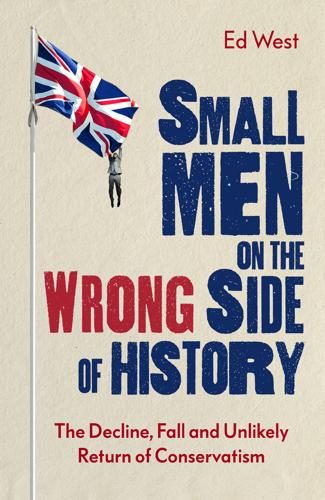
Small Men on the Wrong Side of History: The Decline, Fall and Unlikely Return of Conservatism
by
Ed West
Published 19 Mar 2020
People who live around animals probably have a more realistic grasp of human nature, because it’s obvious that if you breed two intelligent animals, or two placid ones, their children will mostly share those characteristics, and it would be odd if the same wasn’t true for people. Indeed, the vast area of twin studies has shown the variation in human intelligence to be around 50 per cent heritable, as are the five major personality traits. As for sex, there are vast amounts of evidence showing that average differences in temperament between men and women across cultures are the product of biology, something also obvious to people who live closer to animals.
…
Among the top-ten replicated findings from behavioural genetics are that ‘all psychological traits show significant and substantial genetic influence’ and ‘the heritability of intelligence increases throughout development’.25 One study of four thousand school pupils in England and Wales found that the type of school they attended had little impact on their relative performance, which was mainly determined by several hundred genes.26 Twin studies show that 60 per cent ‘of individual differences in school achievement’ are down to genetics.27 Countless studies have repeated this finding. Meanwhile, the ‘evidence for innate sex-linked personality differences in humans is overwhelmingly strong’, something found in nearly every species studied, including all our closest relatives, ‘especially in traits like aggression, female choosiness, territoriality, grooming behaviour, and parental care’.28 Likewise our ability to exercise self-control is largely determined by genes and our parents have little influence on it, while even criminality has a genetic component.29 Perhaps those two boys I saw attacking the old Polish lady might not have been victims of circumstances any more than the awful parents whose nature they inherited; maybe Augustine was more realistic than Pelagius.
…
Likewise with personality: a recent meta-analysis published in Nature Genetics looked at 2748 publications surveying 17,804 traits, and found that pretty much all the variation in personality traits is about 50 per cent genetic.30 Indeed, it turns out there is an association between parents’ child-raising behaviour and children’s authoritarianism, but it is based on nature, not nurture.31 So the Freudians were wrong, once again. Even our political beliefs are to some extent hereditary.32 A Danish twin study of twelve thousand participants showed that genetics account for about 60 per cent of the variation in political ideology.33 Social attitudes generally have a genetic basis, which is further strengthened because of assortative mating, whereby people increasingly marry those with similar personalities and worldviews.34 Perhaps most startling, and rather depressing, neurologists can predict your political beliefs with 83 per cent accuracy just by examining brain structure.35 According to a study by California, San Diego and Harvard universities, ideology is affected by a dopamine receptor gene called DRD4, but only if they had an active social life in adolescence.36 Likewise where there is ‘evidence of intergenerational transmission of party identification’ it is down to genetic similarities in personality.37 In other words, conscientious conservative parents will pass on those character traits that make their children conservative, too; open-minded liberal parents will pass on those same characteristics to their open-minded liberal children.
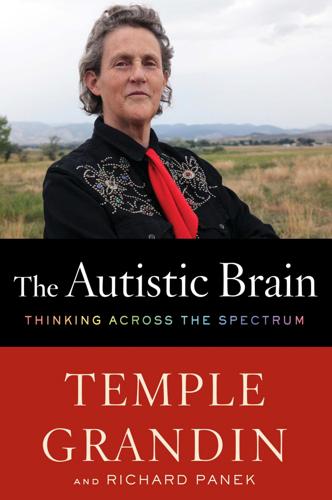
The Autistic Brain: Thinking Across the Spectrum
by
Temple Grandin
and
Richard Panek
Published 15 Feb 2013
. [>] the first study of autism in twins: S. Folstein and M. Rutter, “Infantile Autism: A Genetic Study of 21 Twin Pairs,” Journal of Child Psychology and Psychiatry 18, no. 4 (September 1977): 297–321. [>] A follow-up study: A. Bailey et al., “Autism as a Strongly Genetic Disorder: Evidence from a British Twin Study,” Psychological Medicine 25, no. 1 (January 1995): 63–77. [>] Autism Genome Project, or AGP: http://www.autismspeaks.org/science/initiatives/autism-genome-project/first-findings. [>] came to an end: http://www.autismspeaks.org/about-us/press-releases/autism-speaks-and-worlds-leading-autism-experts-announce-publication-autism-. [>] a paper in Nature Genetics: Peter Szatmari et al., “Mapping Autism Risk Loci Using Genetic Linkage and Chromosomal Rearrangements,” Nature Genetics 39, no. 3 (March 2007): 319–28. [>] a 2007 study: Jonathan Sebat et al., “Strong Association of De Novo Copy Number Mutations with Autism,” Science 316, no. 5823 (April 20, 2007): 445–49. [>] an end, in 2010: http://www.autismspeaks.org/about-us/press-releases/new-autism-genes-discovered-autism-speaks-and-worlds-leading-autism-experts. [>] “We found many”: http://geschwindlab.neurology.ucla.edu/index.php/in-the-news/16-news/88-dna-scan-for-familial-autism-finds-variants-that-disrupt-gene-activity-in-autistic-kids-. [>] an article in Science: Matthew W.
…
See also self-reporting in research Feynman, Richard, [>], [>] Fienberg, John, [>]–[>] Fleischmann, Arthur, [>] Fleischmann, Carly, [>]–[>], [>] flipper bridge, [>], [>] Foldit (online game), [>] fractals, [>], 152–[>] fractional anisotropy (FA), [>] fragile X syndrome, [>] Franklin Pierce College, [>], [>], [>]–[>] Freud, Sigmund, [>], [>]–[>] Fried, Itzhak, [>]–[>] frontal cortex, [>], [>] Frontiers in Neuroscience (journal), [>], [>] functional magnetic resonance imaging (fMRI), [>]–[>], [>]–[>] biomarkers for autism and, [>]–[>] sound sensitivity and, [>] TG and, [>] Galileo, [>] Gates, Bill, [>] genetics of autism, [>]–[>] AGP data and, [>]–[>] directions for research in, [>] environmental triggers and, [>]–[>] fathers and, [>], [>] junk DNA and, [>]–[>] mothers and, [>], [>]–[>], [>] multiple-hit hypothesis and, [>]–[>] mutation studies and, [>]–[>] predisposition and, [>], [>]–[>] treatments for individuals and, [>] twin studies and, [>]–[>] genotype, [>] Gladwell, Malcolm, [>], [>] golden ratio, [>]–[>] Google, [>] grain-resolution test, [>]–[>] Grandin, Temple architectural drawings by, [>], [>] associative thinking and, [>]–[>], [>] bottom-up thinking and, [>]–[>] brain asymmetries and, [>]–[>], [>] brain plasticity and, [>]–[>] cerebellum size, [>], [>], [>] creative thinking and, [>]–[>], [>] diagnosis of autism in, [>]–[>], [>]–[>] livestock handling designs and, [>], [>]–[>], [>]–[>], [>] neuroimaging studies of, [>]–[>], [>]–[>], [>], [>], [>], [>]–[>], [>] picture thinking and, [>]–[>], [>]–[>], [>]–[>] sensory problems and, [>], [>]–[>], [>] visual-spatial testing and, [>]–[>] grey matter.
…
See also pattern thinking; picture thinking; verbal (word-fact) thinking; visual (picture) thinking education and, [>]–[>] employment and, [>]–[>] touch sensitivity, [>]–[>], [>]–[>] TPJ. See temporoparietal junction (TPJ) triad model, in DSM-IV, [>]–[>] Triplett, Donald, [>], [>] tuberous sclerosis, [>] twin studies, [>]–[>] underconnectivity theory, [>]–[>] underresponsiveness to sensation, [>], [>] Université de Caen and Université René-Descartes, France, [>] universities, free courses from, [>] University of Amsterdam, [>]–[>] University of California, San Diego, [>] University of Louisville, [>] University of North Carolina at Chapel Hill infant study, [>] University of Pittsburgh, [>], [>], [>]–[>], [>] University of Utah, [>], [>], [>] University of Washington, [>] vaccination, and autism, [>]–[>] van Dalen, J.
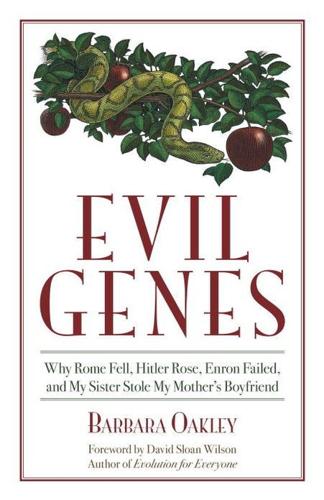
Evil Genes: Why Rome Fell, Hitler Rose, Enron Failed, and My Sister Stole My Mother's Boyfriend
by
Barbara Oakley Phd
Published 20 Oct 2008
If you analyze the group carefully, you might find that some kids have a poor home environment or have disadvantaged schooling. Based on the twin studies, you would probably find that there was also evidence of a slight genetic component. Fig. 2.1. But now let's say you asked your poor readers to read and answer the simple question: “Do the words fruit and boot rhyme?” You'd find that the kids would automatically sort themselves into two groups, irrespective of schooling. One group of kids would answer the question easily, while the other group would struggle. If you then analyzed each of these groups separately by drawing on the twin studies, you would find something very different from your first analysis.
…
And seeing the differences between psychopathic and normal neurological processes is a crucial step in allowing us to begin to understand the underpinnings of some types of Machiavellian behavior. As we shall discover, understanding the “why” of Machiavellian behavior will also help us to understand why there are Machiavellians at all—and why some of them are so successful. * * * a.Since Plomin's comments, a twin study has shown that a tendency toward being religious does indeed appear to be moderately heritable. Such a tendency, it seems, is strongly influenced by the environment during adolescence. However, by adulthood, religiousness seems to slip away somewhat unless you've got genes that predispose you toward religion.
…
c.Indeed, since the first edition of Evil Genes, a study by researchers at the Hebrew University in Jerusalem has demonstrated a tentative link between ruthless behavior and variations in a gene that produces vasopressin receptors. For this study, roughly two hundred students had their DNA sampled and were then asked to play a game that (unbeknownst to the students) was called the Dictator Game. Students with shorter versions of the vasopressin receptor gene (AVPR1a) were more likely to behave selfishly. d.Twin studies show that if one identical twin has full-blown borderline personality disorder, there is a 35% chance the other has it, while fraternal twins have only an 8% chance of sharing the disorder. Subclinical borderline personality disorder, on the other hand, showed a concordance of 38% for identical and 11% for fraternal twins.

Singularity Rising: Surviving and Thriving in a Smarter, Richer, and More Dangerous World
by
James D. Miller
Published 14 Jun 2012
In childhood, adopted children also have IQs similar to each other’s, but this similarity vanishes by the time the children reach age eighteen.166 Economist Bryan Caplan writes that “a large [amount of] scientific literature finds that parents have little or no long-run effect on their children’s intelligence. Separated twin studies, regular twin studies, and adoption studies all point in the same direction.”167 Some IQ researchers, however, think that being raised in poverty permanently reduces a person’s IQ.168 The best evidence, as of this writing, for the significant link between IQ and genes comes from a DNA study of 3511 adults.169 This study located gene “snippets” explaining at least 40 percent of the differences in intelligence between these adults.
…
See also IQ (intelligence quotient) additive and non-additive genes and, 72–73 biological and machine, xx crystallized, 115 enhancement, 90, 113, 115, 119, 121, 127, 132 enhancements reduce inequality, 165 extraterrestrial, 122, 200–201 fluid, 115–16 general, 44, 64, 114–15, 210 genes for, 16 genetic basis of human, xv, 73, 84 grand theory of, 15 nonbiological, 8–9 in the solar system, 188 technologies that increase human, xvi von Neumann—level or better, 95 intelligence-augmenting techniques, 113 intelligence-enhancing brain implants, 210 drugs, 101, 155 genetics, 172 technologies, 101, 117, 173, 177 intelligence equality, 117 intelligence explosion about, 13–16 accidentally creating, 53 emulations and, 153 property rights expectations, 190 rate of return expectations, 190 by recursive self-improvement, 14 savings, cumulative effect on, 190 threat to mankind’s survival from, 121 ultra-AI, could create, 35 ultra-AI would emerge from, 187 unfriendly, 22–28 wealth expectations, 190 intelligent life-forms, 201 interest rates annual, 80 falling, 81 low, 80 International Space Station, 105 investment capital, 57–58, 122, 140 investments, long-term, 82 iPod, 205 IQ (intelligence quotient) academic success, as excellent predictor of, 64–65 additive genes explain 60 percent of the variation in IQ, 72 adopted children studies of, 71–72 adult life, as stable across, 68 age eight, determined by, 67, 96 all children have same academic potential, 65 Ashkenazi Jews have highest level of IQ of any population, 96–98 autistics and above-average IQs, 91–92 brain size and, 74 Ceretrophin and six-point increase in IQ, 106 childhood illness and, 66 cognitive abilities are positively correlated with, 65 cognitive abilities vs., 68 crime and low scores, 70, 74 criminality, poor health, chronic unemployment and low scores, 85, 155 culture-specific knowledge, measures something other than, 67 dental care and high scores, 66 digital span and high score, 67 disease burden lowers, 71 economic growth and high scores, 70, 155 economic policies and high scores, 70 economic success and high scores, 68–69 efficient, honest bureaucracies and high scores, 70 embryo selection to eliminate below-average IQs, 85 fertility clinics to select for higher child’s IQ, 86 fewer accidents and high scores, 66 “Flynn Effect,” 67, 76 genes play a role in correlations of, 66 genetics determines between 50 and 80 percent of, 71 good government and high scores, 70 health, future-orientedness, attractiveness, and lack of criminality and high scores, 90 high-IQ children, creating extremely, 126 human egg marketing and, 86–87 identical twins study of, 71–72 intelligence, as meaningful measure of, 73 job performance, as best predictor of, 68 life expectancy and high scores, 66 long-term investments and high scores, 70 long-term orientation and high scores, 70 National Football League and high scores, 90 national growth rate and the nation’s average, 74 neglectful parents and low scores, 71 noncognitive ability and wage variations, 68 parents have little or no effect on children’s, 72 parents select for extremely high-IQ child, 90 physical attractiveness and high scores, 66 of poor nations, 70 positive traits, correlated to, 63, 90 poverty and low scores, 72 professions, high IQ, 98 reaction time and, 74 reading enjoyment and high scores, 71 success, best predictor of, 65 super-geniuses are autistic, not all, 91–92 tests are highly g-loaded, 64 trust and high scores, 70 wage income and, 74 “win-win” opportunities and high scores, 70 “IQ War,” 68 iterated embryo selection, 98–99 J James Bond villains, 203 The Jetsons (TV show), 210 Jobs, Steve, 207 Jones, Garett, 64–65 K Kahneman, Daniel, 205–6 Kasparov, Gary, 4, 132 Kennedy, John F., 124 Khan, Genghis, 22, 24, 77–78 Khrushchev, Nikita, 220 Kling, Arnold, 107 Kool-Aid, 38 Korean study on autism, 91 Krishna (Hindu God), 3 Kurzweil, Ray billions of nanobots in our brains will record real-time data on how our brains work, 11 computing power, limits to exponential growth in, 6 computing speed, exponential improvements in, 4 Cryonics Institute, 214 on exponential growth, 1 Fantastic Voyage: Live Long Enough to Live Forever, 179 humans will be fantastically productive and earn higher wages, 189 investor and Singularity writer, 35 mankind will colonize the universe at maximum speed allowed by the laws of physics, 9 merger of man and machine, 188 quote, 164 resources of the solar system, mankind will use significant percentage of, 9 rocks, reorganization of, x Singularity by 2045, 200 Singularity by a steady merger of man and machines, 23 The Singularity is Near, 3, 207 Singularity will probably be utopian, 179 Transcend: Nine Steps to Living Well Forever, 179 ultimate laptop computer operations per second, 6 Kurzweilian Merger babysitters, earnings of, 134–35 dangers of, 21 human brains will provide starter software for a Singularity, 8–10 opportunities to correct mistakes, 22 property rights expectations, 190 rate of return expectations, 190 savings, cumulative effect on, 190 wealth expectations, 190 Kurzweilian scenario, 189 L landed aristocracy, 147 landowning nobility, 137 land resale value, 181–82 language processing skills, 64–65 laser rifle, 204 lawn mower, perfect, 24 Legg, Shane, 13 Lesbian feminists, 195 libertarian AI, 41 libertarian government, ideal, 41 libertarianism, 40–41 libertarian ultra-intelligent ruler, 40–41 life span, 180, 212 life span of products, 183 liquid nitrogen preserved body, 139.
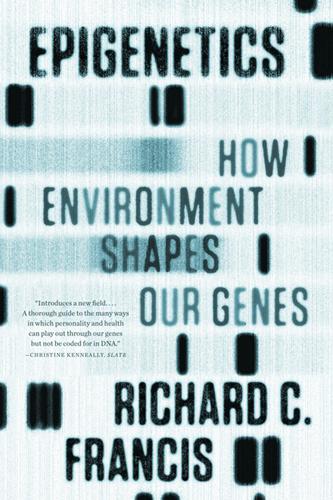
Epigenetics: How Environment Shapes Our Genes
by
Richard C. Francis
Published 14 May 2012
“Human evolution: thrifty genes and the Dairy Queen.” Curr Biol 17(8): R295–R296. Gilbert, S. F. (1991). Developmental biology, 3rd ed. Sunderland, MA: Sinauer. Gilbert, S. F., and S. Sarkar (2000). “Embracing complexity: Organicism for the 21st century.” Dev Dyn 219(1): 1–9. Goldberg, J., W. R. True, et al. (1990). “A twin study of the effects of the Vietnam War on posttraumatic stress disorder.” JAMA 263(9): 1227–1232. Grace, K. S., and K. D. Sinclair (2009). “Assisted reproductive technology, epigenetics, and long-term health: A developmental time bomb still ticking.” Semin Reprod Med 27(5): 409–416. Greenfield, E.
…
“Effects of rank-order fights on whole-body and blood concentrations of androgens and corticosteroids in the male swordtail (Xiphophorus helleri).” Z Tierpsychol 65: 53–65. Haque, F. N., Gottesman, I. I., et al. (2009). “Not really identical: Epigenetic differences in monozygotic twins and implications for twin studies in psychiatry.” Am J Med Genet C Semin Med Genet 151C(2): 136–141. Harlow, H. F., M. K. Harlow, et al. (1971). “From thought to therapy: Lessons from a primate laboratory.” Am Sci 50: 538–549. Harlow, H. F., and R. R. Zimmerman (1959). “Affectional responses in the infant monkey.” Science 136: 421–431.
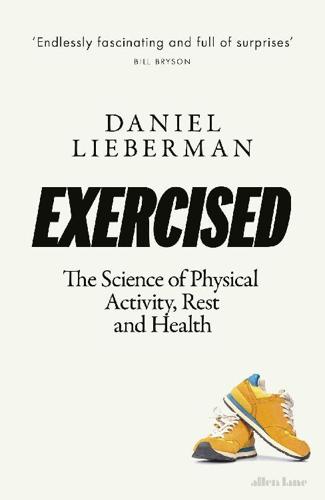
Exercised: The Science of Physical Activity, Rest and Health
by
Daniel Lieberman
Published 2 Sep 2020
Few traits have a simple genetic basis, and disentangling the effects of genes, environmental factors, and their interactions affecting speed versus endurance is no exception. Whenever biologists want to study the heritability of a trait like running speed, the best data come from twins. The most common kind of twin study is to compare a trait such as the hundred-meter sprint time of identical twins who share 100 percent of their genes with that of fraternal twins who share only 50 percent. If the identical twins have hundred-meter times more similar than the fraternal twins’, then genes must strongly influence speed; if not, then environmental factors likely predominate.
…
In Donald Trump’s case, for example, his reportedly normal blood pressure and cholesterol levels likely reflect the medications he takes to lower these risk factors.63 Finally, many complex environmental and genetic factors contribute to the probability of getting a disease, making it difficult to unravel causation. Twin studies have found that only about 20 percent of the variation in longevity up to the age of eighty can be explained by genes. If you make it to that age, however, your genes play a greater role in determining whether you will be a centenarian.64 But that doesn’t mean genes don’t play an important role in disease.
…
E., et al. (2007), A prospective study of change in sleep duration; associations with mortality in the Whitehall II cohort, Sleep 30:1659–66; Hublin, C., et al. (2007), Sleep and mortality: A population-based 22-year follow-up study, Sleep 30:1245–53; Shankar, A., et al. (2008), Sleep duration and coronary heart disease mortality among Chinese adults in Singapore: A population-based cohort study, American Journal of Epidemiology 168:1367–73; Stranges, S., et al. (2008), Correlates of short and long sleep duration: A cross-cultural comparison between the United Kingdom and the United States: The Whitehall II study and the Western New York Health Study, American Journal of Epidemiology 168:1353–64. 32 Lopez-Minguez, J., et al. (2015), Circadian system heritability as assessed by wrist temperature: A twin study, Chronobiology International 32:71–80; Jones, S. E., et al. (2019), Genome-wide association analyses of chronotype in 697,828 individuals provides insights into circadian rhythms, Nature Communications 10:343. 33 Ekirch, A. R. (2005), At Day’s Close: Night in Times Past (New York: W. W. Norton). 34 Samson et al. (2017), Segmented sleep in a nonelectric, small-scale agricultural society in Madagascar; Worthman, C.
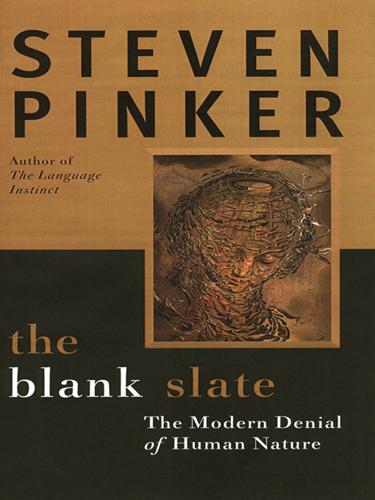
The Blank Slate: The Modern Denial of Human Nature
by
Steven Pinker
Published 1 Jan 2002
His argument in The Blank Slate is that intellectual life in the West, and much of our social and political policy, was increasingly dominated through the twentieth century by a view of human nature that is fundamentally flawed; that this domination has been backed by something that amounts to academic terrorism (he does not put it quite so strongly): and that we would benefit substantially from a more realistic view. Pinker’s exposition is thoroughly readable and of enviable clarity. His explanation of such a difficult technical matter as the analysis of variance and regression in twin studies, for example, would be very hard to better. He is not afraid of using strong language…in addition, parts of the book are delightfully funny.” —John R. G. Turner, The Times Literary Supplement “Anyone who has read Pinker’s earlier books—including How the Mind Works and The Language Instinct— will rightly guess that his latest effort is similarly sweeping, erudite, sharply argued, richly footnoted and fun to read.
…
They rather deny human variability and equate equality with identity. Or they claim that the human species is exceptional in the organic world in that only morphological characters are controlled by genes and all other traits of the mind or character are due to “conditioning” or other nongenetic factors. Such authors conveniently ignore the results of twin studies and of the genetic analysis of nonmorphological traits in animals. An ideology based on such obviously wrong premises can only lead to disaster. Its championship of human equality is based on a claim of identity. As soon as it is proved that the latter does not exist, the support of equality is likewise lost.13 Noam Chomsky made the same point in an article entitled “Psychology and Ideology.”
…
As the behavioral geneticist Matt McGue noted of a recent mathematical model that tried to use prenatal effects to push down heritability estimates as much as possible, “That the IQ debate now centers on whether IQ is 50% or 70% heritable is a remarkable indication of how the nature-nurture debate has shifted over the past two decades.”16 In any case, studies comparing adoptees with biological siblings don’t look at twins at all, and they come to the same conclusions as the twin studies, so no peculiarity of twinhood is likely to overturn the First Law. Behavioral genetic methods do have three built-in limitations. First, studies of twins, siblings, and adoptees can help explain what makes people different, but they cannot explain what people have in common, that is, universal human nature.
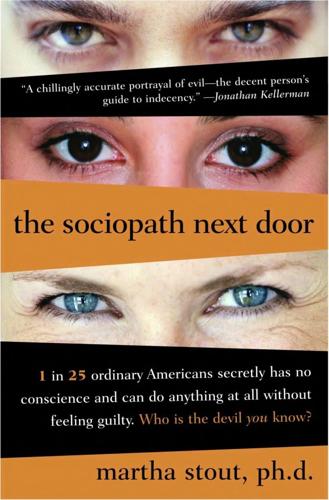
The Sociopath Next Door
by
Martha Stout
Published 8 Feb 2005
Researchers use a number that is double the difference between the identical twin correlation and the fraternal twin correlation to indicate the amount of variation thought to be accounted for by genetic factors. This number is referred to as the trait's “heritability,” and studies on twins have shown that personality features determined by questionnaires (such as extraversion, neuroticism, authoritarianism, empathy, and so forth) have a heritability of between 35 and 50 percent. In other words, twin studies indicate that most measurable aspects of our personalities are 35 to 50 percent innate. Heritability studies contain important information about sociopathy. A number of such studies have included the “Psychopathic Deviate” (Pd) scale of the Minnesota Multiphasic Personality Inventory (the MMPI).
…
studies on twins have shown that personality features: For a detailed discussion of such findings, see L. Eaves, H. Eysenck, and N. Martin, Genes, Culture and Personality (New York: Academic Press, 1989). A number of such studies have included the “Psychopathic Deviate” (Pd) scale: For a review of twin studies that have used the Pd scale, see H. Goldsmith and I. Gottesman, “Heritable Variability and Variable Heritability in Developmental Psychopathology,” in Frontiers in Developmental Psychopathology, eds. M. Lenzenweger and J. Haugaard (Oxford: Oxford University Press, 1996). In 1995, a major longitudinal study: M.
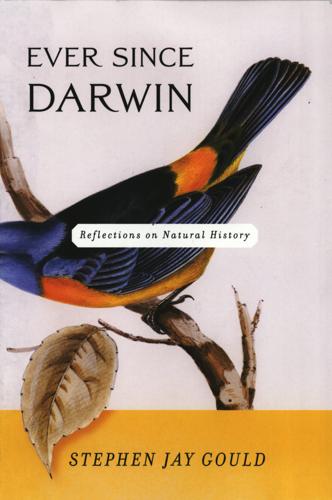
Ever Since Darwin: Reflections in Natural History
by
Stephen Jay Gould
Published 1 Jan 1977
It carries no implications of inevitability or of immutable entities beyond the reach of environmental influence. Eyeglasses correct a variety of inherited problems in vision; insulin can check diabetes. Jensen insists that IQ is 80 percent heritable. Princeton psychologist Leon J. Kamin has done the dog-work of meticulously checking through details of the twin studies that form the basis of this estimate. He has found an astonishing number of inconsistencies and downright inaccuracies. For example, the late Sir Cyril Burt, who generated the largest body of data on identical twins reared apart, pursued his studies of intelligence for more than forty years. Although he increased his sample sizes in a variety of “improved” versions, some of his correlation coefficients remain unchanged to the third decimal place—a statistically impossible situation.5 IQ depends in part upon sex and age; and other studies did not standardize properly for them.
…
For where else will I ever have the opportunity to pay tribute to the man who ranks second only to my father for sheer volume of attention during my youth; he and the Yankees brought me so much pleasure (I even own a ball that DiMaggio fouled off one day). 4 | A friend has since pointed out that Alberich, a rather small man himself, would only wield the whip with a fraction of the force we could exert—so things might not have been quite so bad for his underlings. Chapter 31 5 | I wrote this essay in 1974. Since then, the case against Sir Cyril has progressed from an inference of carelessness to a spectacular (and well-founded) suspicion of fraud. Reporters for the London Times have discovered, for example, that Sir Cyril’s coauthors (for the infamous twin studies) apparently did not exist outside his imagination. In the light of Kamin’s discoveries, one must suspect that the data have an equal claim to reality. OTHER TITLES BY STEPHEN JAY GOULD PUBLISHED BY W. W. NORTON & COMPANY The Panda’s Thumb: More Reflections in Natural History Hen’s Teeth and Horse’s Toes: Further Reflections in Natural History The Flamingo’s Smile: Reflections in Natural History Finders, Keepers: Eight Collectors (with R.
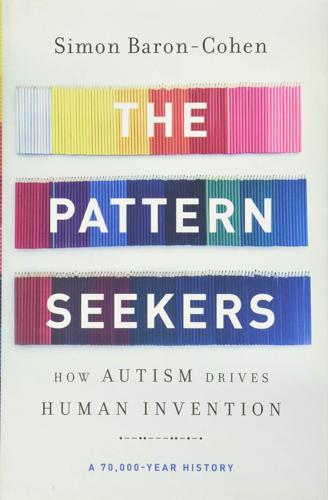
The Pattern Seekers: How Autism Drives Human Invention
by
Simon Baron-Cohen
Published 14 Aug 2020
Curtis et al. (2011), “Hygiene: New hopes, new horizons,” Lancet Infectious Diseases 11(4), 312–321. 3. If a trait shows a bell curve (or is normally distributed), this doesn’t prove it is polygenic, since normal distributions can emerge for nongenetic reasons. To prove a trait is genetic, one first needs evidence that it is heritable, which twin studies can provide. But if a trait is polygenic, a normal distribution will emerge if each of the hundreds or thousands of common variants are having a small effect, and where the chance of having any one common genetic variant is binary (like tossing a coin). For an explanation, see K. Oldenbroek and L. van der Waaij (2014), Textbook animal breeding: Animal breeding and genetics for BSc students (Wageningen, Netherlands: Centre for Genetic Resources and Animal Breeding and Genomics Group, Wageningen University and Research Centre), chapter 5.4, “Polygenic genetic variation,” wiki.groenkennisnet.nl/display/TAB/Chapter+5.4+Polygenic+genetic+variation. 4.
…
Szatmari et al. (2016), “Prospective longitudinal studies of infant siblings of children with autism: Lessons learned and future directions,” Journal of the American Academy of Child and Adolescent Psychiatry 55(3), 179–187. 29. On known genetic associations with autism, see Simons Foundation, “SFARI gene,” www.sfari.org/resource/sfari-gene/; V. Warrier and S. Baron-Cohen (2017), “The genetics of autism,” in Encyclopedia of Life Sciences, 1–9. On the rate of rare genetic mutations in autism, and for a review of twin studies of autism, see G. Huguet et al. (2016), “The genetics of autism spectrum disorders,” in P. Sassone-Corsi and Y. Christen, eds., A time for metabolism and hormones: Research and perspectives in endocrine interactions (Springer). On the role of common genetic variants in autism, see J. Grove et al. (2019), “Identification of common genetic risk variants for autism spectrum disorder,” Nature Genetics 51, 431–444. 30.
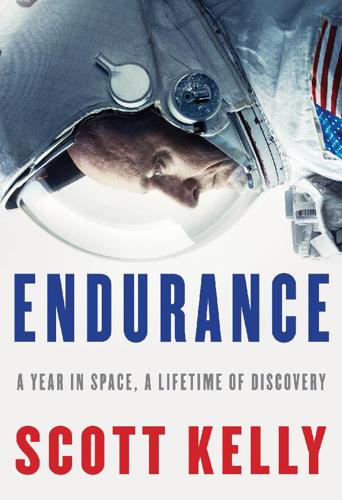
Endurance: A Year in Space, a Lifetime of Discovery
by
Scott Kelly
and
Margaret Lazarus Dean
Published 14 Aug 2017
Near the end of Andy’s ten-day stay, he remarks, “Boy, do I need a vacation.” “You know what?” I say. “You’re complaining to the wrong guy.” He gets it and laughs at himself. A few days later, I give myself a flu shot, the first one administered in space. We are safe from infectious illness up here, so the shot isn’t to protect me; instead it’s part of the Twins Study comparing Mark and me. He will be injected with the same serum at the same time—in fact, he insists on injecting himself as well—and then our immunological responses will be compared. When we both tweet about our flu shots, the response is surprising. I even get retweeted by the Centers for Disease Control and the National Institutes of Health.
…
I mentioned something we hadn’t previously discussed: Mark would be a perfect control to study throughout the year. It turns out my mentioning this had enormous ramifications. Because NASA was my employer, it would be illegal for them to ask me for my genetic information. But once I had suggested it, the possibilities of studying the genetic effects of spaceflight transformed the research. The Twins Study became an important aspect of the research being done on station. A lot of people have assumed that I was chosen for this mission because I have an identical twin, but that was just serendipitous. The yearlong mission was announced in November 2012, with Misha and me as the crew. — THE IDEA of leaving the Earth for a year didn’t feel especially vivid until a couple of months before I was to go.
…
— I TOLD my flight surgeon Steve I felt well enough to get right to work immediately upon returning from space, and I did, but within a few days I felt much worse. This is what it means to have allowed my body to be used for science. I will continue to be a test subject for the rest of my life. A few months later, I felt distinctly better. I will continue to participate in the Twins Study as Mark and I age. Science is a slow-moving process, and it may be years before any great understanding or breakthrough is reached from the data. Sometimes the questions science asks are answered by other questions. This doesn’t particularly bother me—I will leave the science up to the scientists.
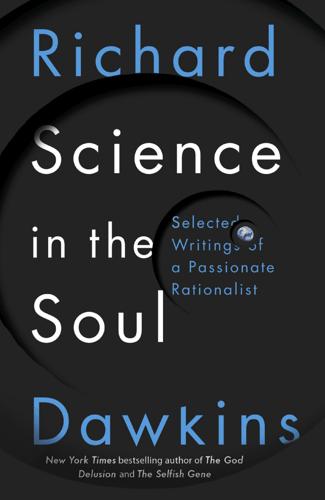
Science in the Soul: Selected Writings of a Passionate Rationalist
by
Richard Dawkins
Published 15 Mar 2017
*17 I made the same point with reference to Rose’s Marxist co-author Richard Lewontin in an earlier footnote to this essay (see above). *18 Twin studies constitute a powerful and easily understood technique for estimating the contribution of genes to variance. Measure something (anything you like) in pairs of monozygotic twins (who are known to be genetically identical). Compare their similarity (to each other) with the similarity (to each other) of dizygotic twins (who are no more likely to share genes than ordinary siblings). If the pairs of monozygotic twins resemble each other significantly more than the pairs of dizygotic twins in, for example, intelligence, you can conclude that genes are responsible. The twin-study technique is especially persuasive in those rare – and much studied – cases where monozygotic twins happen to be separated at birth and brought up apart
…
Evolutionary trends cannot happen unless there is genetic variation in the characteristics concerned – in this case brain size and presumably intelligence. So, there was genetic variation in intelligence in our ancestors. It is just possible that there isn’t any longer, but such an exceptional circumstance would be bizarre. Even if the evidence from twin studies*18 did not support it – which it does – we could safely draw the conclusion, from evolutionary logic alone, that we have genetic variance in intelligence, intelligence being defined in terms of whatever separates us from our ape ancestors. Using the same definition, we could, if we wanted to, use artificial selective breeding to continue the same evolutionary trend.
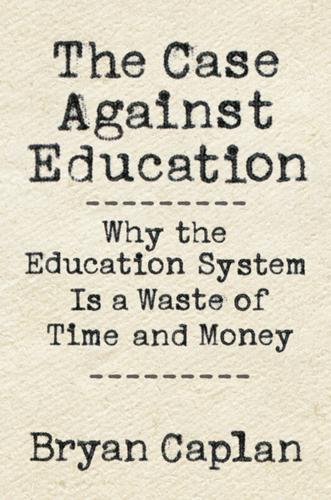
The Case Against Education: Why the Education System Is a Waste of Time and Money
by
Bryan Caplan
Published 16 Jan 2018
Behavioral geneticists have isolated the effects of upbringing on years of education, grades, and income.62 Both adoption and twin studies typically find that being raised by an adoptive parent with an extra year of education boosts your education by about five weeks.63 In other words, each generational ripple shrinks by a factor of ten. Similar studies find zero effect of upbringing on grades.64 Scholastic performance runs in families because performance hinges on students’ talents, attitudes, and behavior, all of which revolve around genes. Adoption and twin studies also surprisingly find upbringing has an even tinier effect on income than education.
…
Empirical Economics 30 (2): 505–20. Merriam-Webster Dictionary. 2015. Accessed November 15, 2015. http://www.merriam-webster.com/dictionary. Merriam-Webster’s Collegiate Dictionary. 2003. 11th ed. Springfield, MA: Merriam-Webster. Miller, Paul, Charles Mulvey, and Nick Martin. 1995. “What Do Twins Studies Reveal about the Economic Returns to Education? A Comparison of Australian and US Findings.” America Economic Review 85 (3): 586–99. ———. 2001. “Genetic and Environmental Contributions to Educational Attainment in Australia.” Economics of Education Review 20 (3): 211–24. Mincer, Jacob. 1974.

Unhealthy societies: the afflictions of inequality
by
Richard G. Wilkinson
Published 19 Nov 1996
Basically they are taller because they have escaped some of the emotional trauma 200 How society kills and psychological stress (often resulting from family conflict) which other children have suffered, and they are more likely to be upwardly mobile during their working lives because they are in better emotional and psychological shape than shorter people. Their greater emotional security probably means that they fit in better and function better. The use of parental height to control for genetic influences on height is important. Twin studies suggest that in developed societies genes explain a much larger proportion of the differences in height than they do of most other important developmental and health variables. As much as 80 per cent of the variations in height may be due to genetic inheritance. If this were all we knew, it would seem likely that the part of social mobility which is selective for height would amount to a form of genetic selection.
…
The fact that childhood influences on later life are important does not of course mean that the lives people lead as adults, and the circumstances in which they live, do not also exert a powerful influence on health. We saw plenty of examples in the last chapter of the health impact of psychosocial circumstances in adult life. The Japanese twin study shows that there is plenty of room (unexplained variance) for influences from circumstances experienced later in life. Regardless of whether a society is supportive or not, those who succumb to its various difficulties will usually be the most vulnerable. That it is frequently possible to find evidence of individual vulnerability among those who fair least well does not mean that the numbers failing will not be dramatically influenced by the rigours or supportivness of the socioeconomic environment.

The Gospel of Food: Everything You Think You Know About Food Is Wrong
by
Barry Glassner
Published 15 Feb 2007
Because our ancestors frequently faced food shortages and famine, that story goes, we evolved to eat and store energy. In an environment of easy access to cheap and appetizing calories, we’re programmed to gobble up and retain more than we need. The real surprise is that anyone stays thin in such an environment. Twin studies and actual patterns of obesity in the U.S. tell a different tale. There seems to be no species-wide tendency; rather, only a relatively small minority of people appear to be disposed to obesity. Jeffrey Friedman, a prominent obesity researcher at Rockefeller University, has shown that the obesity rate shot up not as a result of big increases in weight throughout the population, but rather because of a threshold effect.
…
Robert Pool, Fat: Fighting the Obesity Epidemic (New York: Oxford University Press, 2001), p. 153 (“food-rich” quote); Critser, Fat Land (New York: Houghton Mifflin, 2003), p. 53. 9. Jeffrey M. Friedman, “A War on Obesity, Not the Obese,” Science 299 (2003): 856–58. See also Gregory S. Barsh, I. S. Farooqi, and S. O’Rahilly, “Genetics of Body-Weight Regulation,” Nature 404 (2000): 644–51; Karolin Schousboe: M. Visscher, et al., “Twin Study of Genetic and Environmental Influences on Adult Body Size, Shape and Composition,” International Journal of Obesity 28 (2004): 39–48; L. Qi, H. Larson, et al., “Gender-Specific Association of Perilipin Gene Haplotype with Obesity Risk in a White Population,” Obesity Research 12 (2004): 1758–65; Jeffrey M.
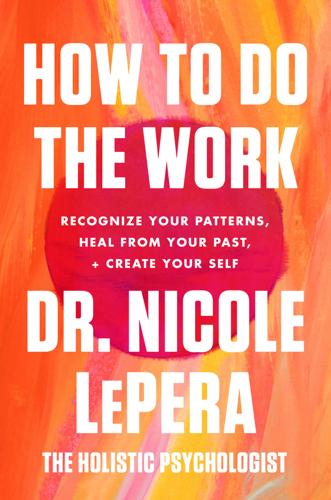
How to Do the Work: Recognize Your Patterns, Heal From Your Past, and Create Your Self
by
Nicole Lepera
Published 9 Mar 2021
The result is a radically new perspective: we can be active participants in our own well-being. This goes for our “physical” health and risk for developing diseases such as diabetes and cancer as well as for our mental and emotional health. Epigenetic factors8 play a significant role in the development of psychiatric conditions. This is shown in identical twin studies where one twin develops a serious mental illness, such as schizophrenia or bipolar disorder, and the other does not. Studies of stress (as early as in the womb) and its connection to the development of mental illnesses later in life also show the profound ways in which our environment affects every part of the body, including its most powerful organ: the brain.
…
abuse, 125 by parent-figure, 121, 122 sexual, 40–41, 121–22, 133–35 acknowledgment, parent-figure who does not see or hear you and, 49–51, 60, 166, 174 activation symptoms, 83 adaptive coping strategies, 57–58, 68, 276 addiction, 44 sexual, 123 substance use recovery and, xi, 7 trauma bonding and, 162–63 traumatic bonding as, 163 see also emotional addiction adrenal glands, 68, 73, 104 adrenaline, 68, 80, 86, 96 Adult Children of Emotionally Immature Parents (Gibson), 210 Adverse Childhood Experiences (ACEs) test, 41, 43–44, 67, 125 affirmations, daily, 120 aging: physical exercise and, 100 power of belief and, 33–34 Ainsworth, Mary, 124 allostasis, 68, 275 amygdala, 68 analytic mind, 275 anger, 55, 56, 58, 80, 118, 236 anger, awakening latent feelings of, 215–17 Anthony, 121–23, 133–35 anxiety, xxi, 3, 5, 23, 30, 44, 70, 94, 96, 109, 118, 170, 172, 208, 228, 229, 231, 248 LePera’s experience of, xvii, 25, 42, 65, 66, 96, 159 social, 76, 82, 126, 226 anxious-resistant infants, 125 appearance: parent-figure overly focused on, 53–54, 167–68, 176 social anxiety and, 226 approach/withdrawal patterning, 169–70, 171 attachment, attachment theory, 275 in adulthood, 160–62 in infancy, 124–26, 160 attachment symptoms, 83 attention deficit hyperactivity disorder (ADHD), 94, 98 attention muscle: developing, 31–32 authentic love, 171–73, 275 autism spectrum disorder, 94 autoimmune disorders, 8, 69, 89 autonomic nervous system, 72, 77, 78, 90, 97–98, 105, 111, 183, 190, 275 regulating responses of, 90 autopilot, xxii, 21, 28–29, 33, 147, 275 homeostatic impulse and, 29–30 avoidant infants, 125 awakenings, xiii, xix, 11, 25, 207–9, 245, 254 of LePera, xvi–xvii, 25–26, 208–9, 217–20 Bazely, Ally, 17–19, 88–90 Becoming the Iceman (Hof), 99 behavior modeling, 275 beliefs, 107–20, 275 child’s stories about parent-figures and, 107–10 core, 108–11, 118–19, 276 Do the Work: Do a Core Beliefs Inventory, 118–19 FSJ: Creating a New Belief, 119–20 of LePera, 108–10 origin of, 110–12 power of, 33–34 as practiced thoughts, 110, 119 beta state, 116 Betrayal Bond, The (Carnes), 160–61 Black, Indigenous, and People of Color (BIPOC), 30, 45, 70, 71 blood sugar, 95 body connection meditation, 238–39 bottom-up processes, 89–91 boundaries, 179–205, 212, 275 Do the Work: Create a New Boundary, 199–205 emotional dumping and, 189–90 emotional symptoms and, 83 enmeshment and, 181–82, 184, 187, 190–91 expectations and, 195–96 with family, set by LePera, 196–99, 219, 261–62 how to set and maintain, 190–95, 202–5 mental/emotional, 187–88, 200 niceness as barrier to work on, 183–84 oversharing and, 188–89 parent-figure who does not model, 52–53, 61–62, 167, 175 physical, 186, 199 resource, 186–87, 200 rigid, loose, and flexible, 184–85 boundarylessness, 83, 187, 188, 189, 197, 227 Bowen, Murray, 126 Bowlby, John, 124 Bradshaw, John, 127–28, 133 brain: fear center of, 68 gut’s connection to, 71–72, 94; see also vagus nerve impact of stress on, 69 in infancy and childhood, 112, 113–16, 125–26 inflammation in, 94 neuroplasticity and, 32–33, 87, 278 physical exercise and, 100 prefrontal cortex of, 26, 33, 208 reticular activating system (RAS) and, 111–12, 118, 130 top-down processes and, 90 Breath (Nestor), 98 breathwork, 241 FSJ: Breathwork, 106 healing with, 90, 97–100 Brown, Stuart, 214 Buddha, 27 cardiovascular exercise, 100 caretaker archetype, 129, 135–36, 180 Carnes, Patrick, 160–61 change: in brain, neuroplasticity and, 32–33, 87, 278 resistance to, 29 childhood, 112–18 archetypes of trauma in, 48–55, 165, 174; see also parent-figures authentic Self in, 51, 113, 116–18, 128, 181–82 conditioning in, 46–47, 77–78 core beliefs about ourselves and our place in the world formed in, 108–13, 115, 116–18 co-regulation in, 77–78, 82, 114, 232 dependency and vulnerability in, 45, 107, 113–14, 124, 146 digestive issues resulting from chronic stress in, 91–92 egocentric state in, 115, 143, 276 fantasies about, 130–31 idealized view of, 112, 130 identifying wounds from, 59–63 impact of adverse experiences in, xvi imprinting in, 114 limited understanding of parent-figures in, 107–10 sexual abuse in, 40–41, 121–22, 133–35 trauma bonds learned and conditioned in, 161, 163 see also infancy childlike part of ourselves, 128 see also inner child childlike wonder, 214–15, 222–23 Christine, 39–41, 43, 48 codependency, 118, 129, 130, 135–36, 138, 217, 251, 254, 261 cognitive behavioral therapy (CBT), xxii, 5–6 cold therapy, 90, 98–99 collective “we,” 251–54 comfort zone, 29–30, 163–64 community: power of, 247–48 SelfHealer, 246–47 compassion, xvii, 33, 73, 105, 144, 151, 171, 196, 211, 212, 234 compassion, for other people in relationships, 196 conditioning, 6, 28–29, 59, 275–76 in childhood, 46–47, 77–78 confirmation of bias, 111 consciousness, conscious Self, xxi, xxiii, xxiv, 23–37, 257, 276 developing attention muscle and, 31–32 Do the Work: Build Consciousness, 36 FSJ: Consciousness Building, 37 LePera’s introduction to concept of, 25–26, 259 neuroplasticity and, 32–33 power of thoughts and, 33–34 prefrontal cortex as seat of, 26, 33, 208 subconscious Self and, 28–29 witnessing yourself and, 34–35 see also subconscious; unconscious coping strategies, adaptive and maladaptive, 57–58, 68, 276 core beliefs, 108–11, 118–19, 276 LePera’s creation of, 108–10 co-regulation, 77–78, 82, 102, 114, 232, 247, 252–53, 276 cortisol, 68, 73, 80, 104, 157, 228, 276 critical inner parent, 276 cytokines, 69, 81, 93–94 daydreaming, 130–31 “Day in the Life of Doing the Work, A,” 256–57 default patterns: breaking free of, 32–33 homeostatic impulse and, 29–30 practiced thought and, 110 delta state, 115 Denworth, Lydia, 248 denying a child’s reality, 48–49, 60 dependency: in childhood, 45, 107, 113–14, 124, 146 traumatic bonding and, 160–61, 162 see also codependency depression, 3, 5, 14, 18, 33, 70, 94, 96, 112, 122, 123, 182, 190, 208, 214, 248 diet, xv, 39–40, 89, 91, 93, 94–96 dieting, 13, 53 digestive system, 72 intermittent fasting and, 95–96 problems in, 8, 70, 91–92, 93 “rest and digest” and, 72, 82, 279 discipline, loving, 212–13, 221, 233 disempowerment, 30 disorganized-disoriented infants, 125 dissociation, 40–41, 43, 57, 58, 65, 75, 134, 158, 159, 168, 169, 208, 228–29, 276 immobilization (freezing) and, 75 distress tolerance (endurance), 276 dopamine, 80, 164 dream states, 27 dysbiosis (leaky gut), 93–94 dysregulation, see nervous system dysregulation ego, 141–55 activation of, 144–45, 149–50 allowing to introduce itself, 147–48 defensive stance of, 143, 144–45 having a friendly encounter with, 148 naming, 148–49 projections of, 145–47, 150–51 egocentric state, 115, 143, 276 ego consciousness, 151–53, 155, 277 ego stories, xxiii, 141–55, 162, 257 choosing new narratives and, 148 creation of, 142–43 of LePera, 141–42, 151–53 witnessing, 147–51 emotional addiction, 7, 78–81, 110, 173, 228–29, 277 emotional dumping and, 189–90 typical day of, 79 emotional dumping, 189–90, 277 emotional immaturity, 209–10, 225–26, 235–36, 237, 277 emotional maturity, xvii, xxiii, 225–42, 243, 277 ability to tolerate distress and, 231–32 cultivating in children, 232–34 Do the Work: Develop Emotional Maturity amd Resilience, 238–42 FSJ: Emotional Body Check-in, 239 inner, beams outward, 236–37 meditation and, 236 soothing and, 230–31, 240 emotional regulation, 228, 277 parent-figure incapable of, 4–5, 54–57, 62–63, 168, 177 reparenting and, 212, 220–21 emotional resilience, 55, 168, 209, 228, 277 emotional symptoms, 83 emotions: of child, parent-figure’s denial of, 48–49, 60 ninety-second rule of, 228–30 reconnect with and rediscover, 238–39 empowerment consciousness, 153, 155, 277 enduring activities, 241–42 enmeshment, 161, 181–82, 184, 187, 190–91, 277 enteric nervous system (ENS), 92–93, 277 epigenetics, xxii, 11–13, 87 expectations, boundaries and, 195–96 family systems theory, 126 fantasies, childhood, 130–31 fasting, intermittent, 95–96 fight-or-flight response, 68, 69–70, 72, 73–74, 75, 81, 114, 277 healing play and, 102 flow state, 102 Folkman, Susan, 57 food choices, 91 food dissociation, 39–40 freezing, see immobilization Friendship (Denworth), 248 friendship, authentic, 248–50 future, planning for, 26 Future Self Journaling (FSJ), 21, 277–78 Breathwork, 106 Changing Ego Consciousness to Empowerment Consciousness, 155 Consciousness Building, 37 Creating a New Belief, 119–20 Creating Interdependence, 255–57 Emotional Body Check-in, 239 Restoring Balance, 85 gastrointestinal (GI) problems, 70, 81–82, 91–92 Gazipura, Aziz, 183–84 genes, epigenetics and, xxii, 11–13, 87 Gibson, Lindsay, 46, 210, 225–26 Gottman, John, 167 grief, unresolved feelings of, 31 grounding yourself, 241 groupthink, 187 Gurdjieff, George, xi gut, 91–96 brain’s connections to, 71–72, 92; see also vagus nerve diet and, 91, 93, 94–96 dysbiosis, or leaky gut, 93–94 enteric nervous system (ENS) in, 92–93, 277 gastrointestinal (GI) problems and, 70, 81–82, 92, 93–94 intermittent fasting and, 95–96 microbiome in, 70, 92, 93, 94, 105 gut-brain axis, 92 habits, homeostatic impulse and, 29–30 Hazan, Cindy, 160 Hermetic traditions, xi hero worshiper archetype, 130, 138–39 hitting rock bottom, LePera’s experience of, xv–xvi, xvii Hof, Wim, 98–99 Holistic Psychologist, The, xvii–xix, 246–47, 249–50 Holistic Psychology, xxi–xxv, 259–60, 278 basic tenets of, 16 LePera’s path to creation of, 3–8 Homecoming (Bradshaw), 128 homeostasis, 78, 163, 189–90, 218, 228, 230, 252–53, 278 challenged by stress, 67, 68 regaining, 89, 91, 103; see also mind-body healing practices vagus nerve and, 72, 78 homeostatic impulse, 29–30, 278 hypervigilance symptoms, 83 icing behavior, 54–55, 56, 166 idealization, 47, 112, 130, 179, 180 identical twin studies, 12 identity, core beliefs about, 110–11, 112 immobilization (freezing), 68, 75, 80, 101, 114 immune system, 68–69, 93–94, 103, 105 imperfections, acceptance of your own, 233, 234 imprinting, 12, 41, 46, 53, 59, 114 indecisiveness (cd!!!), 51 infancy, 113–15 attachment styles in, 124–26, 160 inflammation, 15, 69, 81, 87, 93–94 cytokines and, 69, 81, 93–94 leaky gut and, 93–94 reducing, 98, 101 Wahls Protocol and, 89 information, consumption of, 84 inner child, xxiii, 25, 121–39, 147, 257, 278 Do the Work: Write an Inner Child Letter to Yourself, 135–39 ego as protector of, 142, 143 meeting, 132–33 personality archetypes of, 129–30, 135–39 wounds of, 127–29, 131, 132, 135, 162, 278 interdependence, 243–57, 278 authentic friendship and, 248–50 collective “we” and, 251–54 Do the Work: Assess Your Interdependent Relationships, 254–55 FSJ: Creating Interdependence, 255–57 SelfHealer community and, 246–47 state of honest togetherness and, 245 interpersonal therapy, 6 intuition, 27–28, 146, 190, 278 childhood trauma and, 48, 50–51 rejection of, 40 intuitive Self, 27–28, 132, 278 healing and reconnection with, 89–90 Janet, Pierre, 40 Jessica (client), 23–25, 27, 30–32 John, 234–36 Joshua and Shira, 169–70, 171 journaling, see Future Self Journaling judging others, 146–47 Langer, Ellen, 33 Lazarus, Richard, 57 leaky gut, 93–94 “learning brain,” 73, 114 life of the party archetype, 130, 137–38 limbic system, 33 Lipton, Bruce, 11–12, 13 loneliness, 215, 226, 247 longevity, breathwork and, 98 love, authentic, 171–73, 275 lung capacity, 98 maladaptive coping strategies, 57–58, 276 Maté, Gabor, 12, 68 maturity, see emotional maturity meditation, 7, 33, 90, 236, 241 body connection, 238–39 visualization, 84 memories: from childhood, lack of, 43 dissociation and, 75 painful, of parent-figure, 49 mental/emotional boundaries, 187–88, 200 emotional dumping and oversharing and, 188–90 mental health care: inequities in access to, xxiii traditional model of, 1–3, 5–8 mental resistance, 30 microbiome, 70, 92, 93, 94, 105 “mind,” xxiii mind-body healing practices, 87–106 Ally’s SelfHealing journey and, 88–90 discomfort and, 91 healing sleep, 96–97 healing the gut, 91–96 healing with breath, 90, 97–100, 106 healing with movement, 100–101 healing with play, 101–3 LePera’s experiences with, 87–88, 103–4 potential within for, 87–88 top-down and bottom-up processes in, 89–91 mind-body-soul connection, 8–11, 87–88 mindfulness, 7 misunderstandings: being at peace with, 227 fear of, 226 monkey mind, 27, 36, 278 movement, 231 healing with, 100–101 multiple sclerosis (MS), Ally’s SelfHealing journey and, 17–19, 88–90 Murthy, Vivek, 248 nature, finding and witnessing, 84, 241 needs, honoring, even though it meant others would be hurt, 217–20 needs, unmet: boundaries and, 185 trauma bonds and, 161–62, 163, 170 negative thoughts, 34, 57, 208 negativity bias, 278 nervous system, xvi, xxi, 7 parasympathetic, 72, 73, 78, 93, 97, 279 restoring balance to, 83–85, 90, 110 sympathetic, 73–74, 98, 280; see also fight-or-flight response see also autonomic nervous system nervous system dysregulation, xxiii, 29, 43, 65–85, 93, 276 body’s stress responses and, 67–71; see also fight-or-flight response; immobilization co-regulation and, 77–78 Do the Work: Assess Your Nervous System Dysregulation, 82–84 emotional addiction and, 78–81 especially damaging for oppressed populations, 70–71 FSJ: Restoring Balance, 85 healing, 87–106, 110; see also mind-body healing practices LePera’s experience of, 65–67, 71, 87–88 physical symptoms and, 81–82, 93 social world and, 76–77, 82 Nestor, James, 98 neuroception, 76, 77, 102, 114 neurochemicals, 14, 80, 92–93, 100, 160, 163 neuroimmunology, 94 neuroplasticity, 32–33, 87, 278 neurotransmitters, 78, 92, 238 niceness, 183–84 ninety-second rule of emotions, 228–30 nocebo effect, 14–15, 279 “no,” learning to say, 183, 184 normative stress, 68, 279 Not Nice (Gazipura), 183–84 nutrition, xvi oppression, health consequences of, 70 overachiever archetype, 129, 136 oversharing, 188–89 oxytocin, 77, 164 pandemic, 113, 260 parasympathetic nervous system, 72, 73, 78, 93, 97, 279 parent-figures: attachment styles and, 124–26 child’s core belief system and, 114, 115, 116–18 child’s dependency on, 113–14 child’s stories about, 107–10 co-regulation of child and, 77–78, 114, 232 emotional immature, 225–26 emotionally immature, 209–10 enmeshment and, 181–82 guide role of, 45–48 reparenting and, 215–16, 217 who cannot regulate their emotions, 4–5, 54–57, 62–63, 168, 177 who complains to child about other parent-figure, 53 who denies your reality, 48–49, 60, 165–66, 174 who does not model boundaries, 52–53, 61–62, 167, 175 who does not see or hear you, 49–51, 60, 166, 174 who is overly focused on appearance, 53–54, 62, 167–68, 176 who project their own unresolved traumas onto their children, 45–46 who vicariously lives through you or molds and shapes you, 51–52, 61, 166–67, 175 past, seeking to relive, 29–30, 163–64 Pavese, Cesare, 26, 260 peer validation, 48–49 people pleasing, 58, 143 perfectionism, 23, 44 Philadelphia School of Psychoanalysis, 6, 65 physical boundaries, 186, 199 physical health symptoms, 67 physical movement, xvi, 31–32 physical symptoms, 8, 30, 83 placebo effect, 13–15, 279 nocebo effect and, 14–15 play, 214 healing with, 101–3 Play (Brown), 214 polyvagal theory, 71–72, 75, 87, 88, 279 see also vagus nerve Porges, Seth, 103 Porges, Stephen, 71, 75, 77, 100, 101, 102 prefrontal cortex, 26, 33, 208, 279 present moment: living in, 32, 36, 84 power of, 26 private space, parent-figure’s violation of, 52–53 probiotics, 94, 95 Prozac, 92 pseudoselves, 54 psychoanalysis, xxii, 6–7, 65–66, 210 psychoneuroimmunology, 15, 279 racism, xi, 44, 70–71 reactivity, 24–25, 27, 31–32 self-accountability check-ins and, 236–37 reality-denial, by parent-figure, 48–49, 60, 165–66, 174 relationships, xxiii–xxiv attachment style in infancy and, 124, 126, 160 boundaries in, 190–96 compassion for other people in, 196 emotional addiction and, 80–81 inner child wounds and, 128–29 interdependence and, 245 interpersonal therapy and, 6 trauma bonds in, 160–65 reparenting, 207–23, 257, 279 dealing with loneliness, disappointment, and anger in, 215–17 Do the Work: Develop a Reparenting Menu, 220–23 emotionally immature parent-figures and, 209–10 four pillars of, 211–15, 220–23 by LePera, 217–20 repression, 145–46 rescuer/protector archetype, 129–30, 137 resource boundaries, 186–87, 200 “rest and digest,” 72, 82, 279 reticular activating system (RAS), 111–12, 118, 130, 279 rigid boundaries, 83, 184, 186–88, 213, 261 romantic relationships, 77, 128 attachment style in infancy and, 126, 160 same-sex, 55–57 sexual chemistry in, 163, 164 trauma bonds in, 160–65 Rubin Museum of Art, New York, 26, 259 Scaer, Robert, 44, 45 schizoprenia, 12, 94 secure attachment style, 124–26, 234 selective serotonin reuptake inhibitors (SSRIs), 92 Self, authentic, xxiv, 26, 57, 113, 118, 133, 145–46, 167, 184, 226, 234 in childhood, 51, 113, 116–18, 128, 181–82 connecting to, xxii, xxiii, 261 disconnection between thoughts and, 35 enmeshment and, 181–82 reconnecting with, 257 trauma and severed connection to, 44, 45 trauma bonds and, 161, 162 self-accountability check-ins, 236–37 self-betrayal, 18, 21, 25, 39, 58, 162, 173, 212, 279 self-care, 186, 211, 213–14, 222, 232–33, 260 self-harming behaviors, 39 self-truth, 150–51 sensations, witnessing changes in, 34–35, 212, 229–30 serotonin, 92, 100 sex, dissociation and, 58 sexual abuse, 40–41, 121–22, 133–35 sexual addiction, 123 sexual chemistry, 163, 164 shadow self, 145–46, 150–51, 154, 256, 280 shame, 30, 87, 132, 134–35, 144, 146, 164 Shaver, Phillip, 160 shutdown symptoms, 83 silent treatment, 54–55, 56, 166 singing, healing with, 90, 102–3 sleep, improving, 96–97 social activation, 75, 77 social anxiety, 76, 82, 126, 226 social engagement mode, 72–73, 77, 78, 80, 90, 125, 128, 183, 230, 252, 280 children’s development and, 114, 125 social media, 1, 3, 39, 81, 168, 193, 226, 232, 247 social symptoms, 83 soothing, 230–31, 280 activities for, 240–41 spiritual practices, 208 spiritual trauma, 280 stage parents, 51–52, 61 Strange Situation Classifications, 124–25 stress, 67–71, 157–58 adaptive and maladaptive coping strategies around, 57–58 chronic, 68, 74, 91–92 dissociation as response to, 40 fight-or-flight response and, 68, 69–70, 72, 73–74, 75, 277 helping children make sense of, 233 immobilization (freezing) response and, 68, 75, 80 normative, 68, 279 polyvagal theory and, 71–72 racism, bias, and bigotry and, 70–71 self-accountability check-ins and, 236–37 signals of, mistaken for sexual attraction and chemistry, 162–64 social world and, 76–77, 82 trauma body and, 67–71 stuckness, 44, 132, 143 in cycle of reactivity, 24–25 feelings of, 1–3 questions for reflection on, 19–20 subconscious, 6–7, 16, 76, 81, 116, 118, 164, 280 homeostatic impulse and, 29–30 practicing thoughts in, 26–27 see also autopilot subconscious Self, 28–29 substance abuse: denial of, 49 recovery from, xi, 7 Sunseri, Justin, 75 support, reaching out to someone for, 241–42 survival-based parenting style, 49–50 “survival brain,” 78, 114–15, 280 Susan, 179–81, 182, 186 sympathetic nervous system, 73–74, 98, 280 see also fight-or-flight response Taylor, Steve, 207, 245 telomeres, 98 tension symptoms, 83 thoughts, xxii becoming conscious of, 34–35 monkey mind and, 27, 36 power of, 33–34 practiced, beliefs as, 110, 119 practicing, 26–27 purpose of, 27 Together (Murthy), 248 top-down processes, 89–91 transference, 210 trauma(s), 7, 39–63, 280 ACEs framework and, 41, 43–44, 67, 125 adaptive and maladaptive coping strategies and, 57–58, 276 childhood, archetypes of, 48–55, 165, 174; see also parent-figures childhood conditioning and, 46–47 core beliefs shaped by, 110 Do the Work: Identify Your Childhood Wounds, 59–63 identifying your wounding and, 47–48, 59–63 LePera’s experience of, 41–43, 47, 55–57, 66 physical health issues and, 65–85; see also mind-body healing practices; nervous system dysregulation polyvagal theory and, 71–72 potential for change and, 59 as unavoidable part of life, 59 wider definition of, xvi, 43–45 trauma bonds, 157–77, 182, 280 approach/withdrawal patterning in, 169–70, 171 archetypes and, 165–68, 174–77 authentic love and, 171–73 conditioned in childhood, 161, 163 description of, 160–61 Do the Work: Identify Your Trauma Bonds, 174–77 sexual chemistry and, 163, 164 signs of, 161–62 unconscious, xxii, 26, 146 intuitive Self and, 27–28, 278 underachiever archetype, 129, 136–37 vagal tone, 87, 280–81 improving, 82, 90–91, 95, 98, 99, 100–101, 102–3 poor, troubling issues associated with, 74, 76, 81–82 vagal tone stimulators, 90 vagus nerve, 71–73, 81, 92, 105, 230 activated, stress responses and, 72, 73, 78, 110, 141, 192 breathwork and, 98, 99 immobilization and, 75 polyvagal theory and, 71–72, 75, 87, 88, 279 return to state of balance and (social engagement mode), 72–73, 78, 90, 230, 252 singing and other playtime activities and, 90, 102–3 top-down and bottom-up processes and, 90 yoga and, 100–101 validation, need for, 118 van der Kolk, Bessel, 43, 69 venting, 189 visiting our families, difficulty of, 227 visualization meditation, 84 Wahls, Terry, 19 Wahls Protocol, 89 Western medicine, traditional, xxi wise inner parent, 281 yes-person archetype, 130, 138 yoga, 31–32, 33 mind-body healing and, 89, 90 vagal tone and, 100–101 About the Author DR.
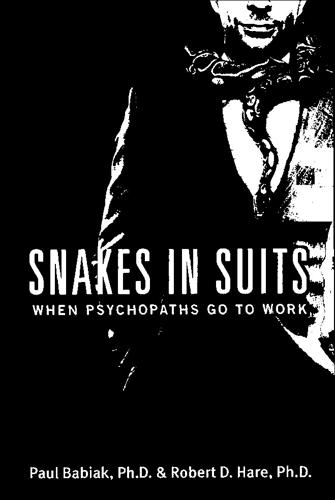
Snakes in Suits: When Psychopaths Go to Work
by
Dr. Paul Babiak
and
Dr. Robert Hare
Published 7 May 2007
A better question is "To what extent do nature and nurture influence the development of the traits and behaviors that define psychopathy?" The answer to this question is becoming much clearer with the application of behavioral genetics to the study of personality traits and behavioral dispositions. Several recent twin studies provide convincing evidence that genetic factors play at least as important a role in the development of the core features of psychopathy as do environmental factors and forces. Researchers Blonigen, Carlson, Krueger & Patrick stated that the results of their study of 271 adult twin pairs provided "substantial evidence of genetic contributions to variance in the personality construct of psychopathy."
…
The Mask of Sanity, 5th ed. St. Louis: Mosby, 1976. 22 “He describes these efforts . . .” Hare, R. D. Without Conscience: The Disturbing World of the Psychopaths Among Us. New York: Guilford Press, 1998. 24 “Nature? Nurture? Both!” Blonigen, D. M., Carlson, S. R., Krueger, R. F., & Patrick, C. J. A twin study of self-reported psychopathic personality traits. Personality and Individual Differences, 35(1), 179—197, 2003. 24 “Nature? Nurture? Both!” Larrson, H., Andershed, H., & Lichstenstien, P. A genetic factor explains most of the variation in the psychopathic personality. Journal of Abnormal Psychology, 115(2), 221—230, 2006. 24 “Nature?
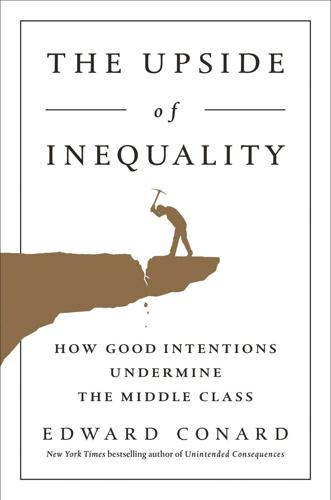
The Upside of Inequality
by
Edward Conard
Published 1 Sep 2016
But . . . it isn’t.”42 Summers wouldn’t be describing it as little more than “whistling past the graveyard.”43 And Gates wouldn’t be saying “it’s easier to cure malaria.”44 It’s not surprising that large-scale programs have had limited effects on the outcomes of children. Several metastudies of nearly three thousand twin studies published by Nature finds that shared environment—the environment we control—currently accounts for less than 20 percent of the variation in cognitive and behavioral traits.45 That’s not to say that some as-yet-unidentified curriculum couldn’t have a larger effect on learning, only that modest improvements to current approaches, which have limited effects, will have a small impact.
…
Lawrence Summers, “The Future of Work in the Age of the Machine: A Hamilton Project Policy Forum,” National Press Club, February 19, 2015, http://www.hamilton project.org/events/the_future_of_work_in_the_age_of_the_machine. 44. Schulzke, “Bill Gates Says Education Reform Is Tougher Than Eradicating Polio, Malaria or Tuberculosis.” 45. Tinca J. C. Polderman, Beben Benyamin, Christiaan A. de Leeuw, Patrick Sullivan, et al., “Meta-Analysis of the Heritability of Human Traits Based on Fifty Years of Twin Studies,” Nature Genetics 47 (2015): 702–9, http://www.nature.com/ng/journal/v47/n7/full/ng.3285.html. Kaili Rimfeld, Yulia Kovas, Philip S. Dale, and Robert Plomin, “Pleiotropy Across Academic Subjects at the End of Compulsory Education,” Scientific Reports, 2015, http://www.nature.com/articles/srep11713. 46.
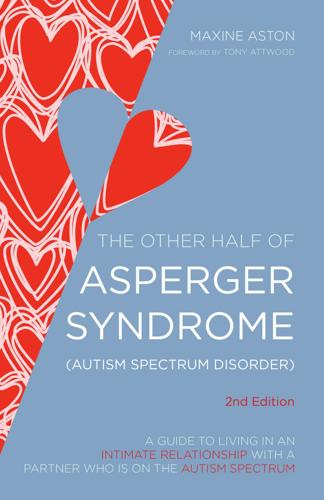
The Other Half of Asperger Syndrome (Autism Spectrum Disorder): A Guide to Living in an Intimate Relationship With a Partner Who Is on the Autism Spectrum Second Edition
by
Maxine Aston
Published 21 Feb 2014
Cambridge: Cambridge University Press. Attwood, T. (1998) Asperger’s Syndrome: A Guide for Parents and Professionals. London: Jessica Kingsley Publishers. Bailey, A., Le Couteur, A., Gottesman, I., Bolton, P., Simonoff, E., Yuzda, E. and Rutter, M. (1995) ‘Autism as a strongly genetic disorder: evidence from a British twin study.’ Psychological Medicine 25, 63–77. Baird, G., Simonoff, E., Pickles, A., Chandler, S., Loucas, T., Meldrum, D. and Charman, T. (2006) ‘Prevalence of disorders of the autism spectrum in a population cohort of children in South Thames: the Special Needs and Autism Project (SNAP).’ The Lancet 368, 9531, 210–215.

Autistic Community and the Neurodiversity Movement: Stories From the Frontline
by
Steven K. Kapp
Published 19 Nov 2019
Reductionism Ortega [18] assesses many of the critiques raised here, and points to the rise of neurological and biologically based explanations for behavior, which replaced the dominant psychoanalytic models of the 1970s. For autism, the “refrigerator mother” theory was interpreted to mean that autism was a reaction to an emotionally deprived upbringing. The shift to a primarily genetic and neurological understandings of autism in the 1980s was ushered in by the pioneering twin studies that provided conclusive evidence of the heritability of autistic traits [22]. The history of autism and how children’s mental health and deviance has been variously conceived is covered in many excellent texts, all worth reading [13, 23–25]. There is also bio-medicalization [26]. This process is defined by Conrad as virtually the reverse of neurodiversity: the transformation of everyday human conditions and behaviors into diagnosable, treatable disorders that come to fall under medical jurisdiction [27].
…
Bayer 95 “symptoms”, of autism 1, 7, 176, 184, 185, 312 synesthesia 147 330 Index T V Talking About Curing Autism (TACA) ix Tammet, Daniel 223 thematic analysis viii therapy ix, 7, 60, 230, 307 Thompson, Vilissa 244 Tisoncik, Laura 83, 90, 289, 295 torture, in name of treatment 195–207, 311 TPGA (Thinking Person’s Guide to Autism, The) 13, 155, 156, 158, 162, 163, 165, 307 tragedy paradigm, autism-as- 26–28, 30, 33, 34, 91, 229 transgender 204, 292 “trapped” paradigm 28, 35 trauma autism as response to 188 parental, 33 suffered by autistic people, 43, 134, 195, 198, 203, 212, 222 suffered by Judge Rotenberg Center employee, 202 treatment autism 74, 96, 99 psychiatric, 54, 201 torture as, 195–207, 311 Treehouse 278 Trump, Donald 238 twin studies 296 Vaccine Court Chronicles 96 vaccines, and autism ix, 7, 8, 54, 155, 158, 223, 238, 239 and Neurodiversity.com, 93, 94, 96–98 Ventura33 story website 123, 127–129 Vivian, Amanda 174 U W Wakefield, Andrew 54, 238 weaknesses, in autism viii, 7, 245, 293, 309 “walking while autistic” 70 Western biomedical model 8 “We’ve Only Just Begun” principle” 250–251 “What Are the Stakes?”

Gene Eating: The Science of Obesity and the Truth About Dieting
by
Giles Yeo
Published 3 Jun 2019
In contrast, while a trait like having freckles is clearly genetically influenced, whether, where and how many freckles appear will be down to how much time one spends in the sun. FIGURE 2 Two possible models to explain the increase in average BMI from 1985 to 2014 There is, however, one valid argument against twin studies; that is, while the genetic power is self-evident, twins are still brought up in the same household, thus possessing a shared environment during their most formative of years. Surely this muddies the water when it comes to measuring the heritability of traits where the environment wields a powerful influence?
…
1.www.oecd.org/health/health-data.htm Accessed 22 May, 2018. 2.www.oecd.org/health/health-data.htm Accessed 22 May, 2018. 3.https://www.cdc.gov/obesity/data/prevalence-maps.html Accessed 22 May, 2018. 4.http://www.pbs.org/independentlens/films/twin-sisters/ Accessed 22 May, 2018. 5.Bailey, R.E., Hatton, T.J. and Inwood, K., ‘Health, Height and the Household at the Turn of the 20th Century’. IZA Discussion Paper No. 8128 (April 2014). 6.Stunkard, A.J., Foch, T.T. and Hrubec, Z., A twin study of human obesity’. JAMA 256 (1986); 51–4; and Stunkard, A.J., Harris, J.R., Pedersen, N.L. and McClearn, G.E., ‘The body-mass index of twins who have been reared apart’. N Engl J Med 322 (1990); 1483–87. 7.Schulz, L.O. and Chaudhari, L.S., ‘High-Risk Populations: The Pimas of Arizona and Mexico’.

Blueprint: The Evolutionary Origins of a Good Society
by
Nicholas A. Christakis
Published 26 Mar 2019
Of course, again, some links can be severed by very strong cultural overlays, as in decoupling smiles from happiness (as happens in some cultures). Human personality structures are also likely universal. See R. R. McCrae and P. T. Costa Jr., “Personality Trait Structure as a Human Universal,” American Psychologist 52 (1997): 509–516; and S. Yamagata et al., “Is the Genetic Structure of Human Personality Universal? A Cross-Cultural Twin Study from North America, Europe, and Asia,” Journal of Personality and Social Psychology 90 (2006): 987–998. 26. C. Chen, C. Crivelli, O. G. B. Garrod, P. G. Schyns, J. M. Fernandez-Dols, and R. E. Jack, “Distinct Facial Expressions Represent Pain and Pleasure Across Cultures,” PNAS: Proceedings of the National Academy of Sciences 115 (2018): E10013–E10021. 27.
…
Buss, “Sex Differences in Human Mate Preferences: Evolutionary Hypotheses Testing in 37 Cultures,” Behavioral and Brain Sciences 12 (1989): 1–49. 26. E. Turkheimer, “Three Laws of Behavior Genetics and What They Mean,” Current Directions in Psychological Science 9 (2000): 160–164. 27. T. J. C. Polderman et al., “Meta-Analysis of the Heritability of Human Traits Based on Fifty Years of Twin Studies,” Nature Genetics 47 (2015): 702–729. 28. J. Wu, H. Xiao, H. Sun, L. Zou, and L. Q. Zhu, “Role of Dopamine Receptors in ADHD: A Systematic Meta-Analysis,” Molecular Neurobiology 45 (2012): 605–620; C. Chen, M. Burton, E. Greenberger, and J. Dmitrieva, “Population Migration and the Variation of Dopamine D4 Receptor (DRD4) Allele Frequencies Around the Globe,” Evolution and Human Behavior 20 (1999): 309–324; R.
…
Black, “HLA and Mate Selection: No Evidence in South Amerindians,” American Journal of Human Genetics 61 (1997): 505–511. 61. T. Bereczkei, P. Gyuris, and G. E. Weiseld, “Sexual Imprinting in Human Mate Choice,” Proceedings of the Royal Society B 271 (2004): 1129–1134. 62. T. J. C. Polderman et al., “Meta-Analysis of the Heritability of Human Traits Based on Fifty Years of Twin Studies,” Nature Genetics 47 (2015): 702–709. 63. R. S. Herz and M. Inzlicht, “Sex Differences in Response to Physical and Social Factors Involved in Human Mate Selection: The Importance of Smell for Women,” Evolution and Human Behavior 23 (2002): 359–364. 64. R. McDermott, D. Tingley, and P. K. Hatemi, “Assortative Mating on Ideology Could Operate Through Olfactory Cues,” American Journal of Political Science 58 (2014): 997–1005. 65.
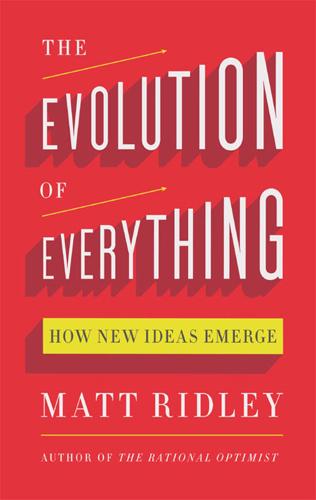
The Evolution of Everything: How New Ideas Emerge
by
Matt Ridley
Powerless parents In 1993, Judith Rich Harris was drafting her textbook on developmental psychology and obediently repeating the blank-slate nostrums of the field, when she began to have doubts about the idea that parents’ actions were the source of their children’s personalities through the way they doled out reward and punishment. The evidence from twin studies seemed to show that genes played a large part in determining personality; the evidence from evolutionary psychology seemed to show that universal features of human minds made evolutionary sense; and the evidence from anthropology showed that ‘childrearing practices in traditional societies were nothing like what the current advice-givers were recommending, and yet the kids turned out okay’.
…
Intelligence from within So much for personality differences. What about intelligence? Thirty years ago it was still taboo in academia to suggest any role at all for genetics in IQ, though the person in the street had no such qualms. Today, everybody accepts the relentlessly consistent verdict of the twin studies and adoption studies: differences in intelligence owe a great deal to differences in genes. The debate is whether it is 30 per cent or 60 per cent, and whether it is mainly direct – genes creating an aptitude for learning, if you like – or indirect – genes creating an appetite for learning, and a tendency to spend time with books.

Head, Hand, Heart: Why Intelligence Is Over-Rewarded, Manual Workers Matter, and Caregivers Deserve More Respect
by
David Goodhart
Published 7 Sep 2020
This is partly because of what Robert Plomin has called the “nature of nurture,” meaning that genes and environment interact with each other and that how we select, modify, and create environments is also based on our genetic propensities. So even something like the amount of television watching that a child does—which used to be seen as the classic example of an environmental influence—turns out to be partly attributable to heritable traits too. Critics point to methodological problems with twin studies and the obvious influence of class and family background. But geneticists do not deny a substantial role for environment, nor that normal child development requires a basic level of responsible care. Seriously deprived or abusive environments are bound to have a negative impact on development, including intellectual development.
…
Susskind), 261–62, 298 A World Without Work, 244, 268 Sutton Trust, 18 Sweden, 81, 83, 206, 213, 222, 229 Switzerland, 213 Syed, Matthew, Rebel Ideas, 282 Taylor, Frederick Winslow, 97, 260 Teach First (UK), 151 Teach for America (US), 151 teaching, 151, 218, 226, 228, 232, 294 Terman, Lewis, 64, 65 Thatcher, Margaret, 106 Thiel, Peter, 297 time-use data, 242–43, 246–47 Tocqueville, Alexis de, 43 trade unions: activism of, 158 apprenticeships, 47 demarcation disputes, 122–23 membership declines, 139–40 Trump, Donald: as anti-system politician, 169, 171 election in 2016, 32, 154–55, 159, 161, 169, 214–15, 220 Executive Order to expand apprenticeships (2017), 112–13 immigration policy, 162 populism of, 161, 220, 279 power of direct language and, 178 Turner, Adair, 241, 272–74, 286, 288 Capitalism in the Age of Robots, 272–74 Turner, Frederick Jackson, 52 Twenge, Jean, 281 twin studies, of cognitive aptitude, 72–73, 74 Tyndale, William, 181 unions, see trade unions United Kingdom (UK): A levels, 35, 46, 57–60, 95–96, 98, 105, 108–10, 124, 192 adult social care and, 239–41, 242 Anywhere-Somewhere divide and, 13–20 apprenticeships and, 15, 40, 47, 57–58, 106, 109–14, 119, 170–71, 200–201 civil service reform, 31, 41 Education Acts, 43–44, 46, 98, 100 family and gender policy, 27 family breakdown in, 221–22 free education, 43–44, 46 further education (FE) colleges (UK), 105–6, 108–10, 115 geographic mobility and, 17, 288, 289–90 globalization and, 111–17 “graduatization”/income divergence of the labor market, 133–52 higher education system, 41–53, 80–81, 100–107, 113–17, 120, 125–31, 262–63 industrialization and urbanization in, 33–34, 51–52 IQ-type tests, 65 mental well-being in, 222–23 migration premium and, 18 Northcote-Trevelyan Report and, 31, 41 Oxford/Cambridge duopoly and, 41–42, 44–52, 84, 97–98, 101–2, 156, 172–73, 263, 264 polytechnics/“new universities” (UK), 98, 100–102, 105–8, 115, 119, 263 professions/professional exams and, 42–43 “redbrick” universities, 45–46, 47, 49, 51 rise of cognitive class in, 32, 33–35, 41–42, 76–78 social mobility trends in, 75–78, 80–81, 126–31 technical and vocational training, 15, 40, 42, 46–47, 50, 97–98, 100–102, 105–8, 198, 265 training/retraining failure and, 111–17 see also Brexit Britain United States (US): Anywhere-Somewhere divide and, 13–20 apprenticeships and, 112–13 correlation between intelligence and socioeconomic status, 78–82, 83–84 family and gender policy, 27 family breakdown in, 220 free public education, 43–44, 50 geographic mobility and, 17–19 GI Bill, 43–44, 66, 96, 115 globalization and, 111–17 “graduatization”/income divergence of the labor market, 133–52 higher education system, 43–44, 48–50, 52–53, 66, 80, 96, 112–17, 264 immigration and, 52, 162 IQ-type tests, 65–66 labor shortage and, 50 land and western frontier, 52 professions/professional exams, 43 social mobility trends, 78–84 technical and vocational training, 49, 50, 114, 115 training/retraining failure and, 111–17 US Army, large-scale intelligence testing, 64–65 US Bureau of Labor Statistics, 225, 241–42, 273 US Department of Justice, 6n US General Social Survey, 222 Universal Basic Income (UBI), 288 universities, see college/university education urbanization, 10, 33–34, 37, 51–52, 221, 273–74, 288 values: cognitive improvement technology, 280–81 crisis of meaning of Heart (care) vs.
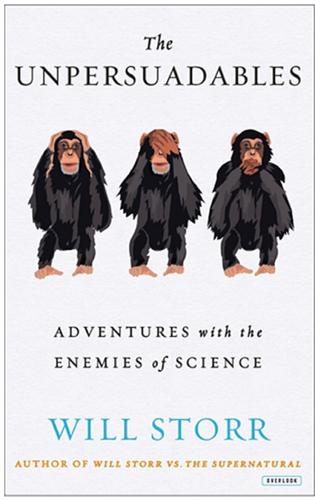
The Unpersuadables: Adventures With the Enemies of Science
by
Will Storr
Published 1 Jan 2013
And why, in the words of clinical psychologist and political strategist Professor Drew Westen, is ‘the biggest single predictor of party affiliation – and of the broader value systems associated with it – the party affiliations of our parents’? In preparation for my encounter with Lord Monckton, I spoke with Professor Jonathan Haidt about the source of our moral and political beliefs. ‘The place to begin is with these amazing twin studies in the 1980s,’ he told me. ‘They said that every aspect of your personality is partly heritable – what kind of music you like, what food you enjoy, everything. So if your identical twin is separated from you at birth, they will probably have the same politics as you forty years later, and how it works is to do with your genes.
…
Holman Foundation 118 chemotherapy 35, 93 Chibnall, Albert 256, 257 chick-sexers 186–87 childhood abuse 165–72, 173–75, 176–78, 179 sexual 145, 146, 156–57, 162, 180 children 75 China 83 Christ Church, Oxford 200, 201 Christians 4, 6, 7, 133, 134 condemnation of homosexuality 14–15, 18 morality 15–16, 122 see also creationists Churchill, Winston 208, 235, 249, 250 Clancy, Susan 50 climate-change sceptics 200, 203–204, 216 Clinic for Dissociative Studies 171 Clinton, Hilary 118 Coan, Chris 166–67 Coan, Jim 166–67 cochlear implants 78 cognitive bias 85, 87–88, 90–91, 103–104, 111, 183, 186, 244, 272 see also confirmation bias cognitive dissonance 84–87, 96, 102, 181 coin toss tests 262 Colapinto, John 312 cold war 149, 212, 215 Coleman, Ron 136–37, 141, 146, 148, 157, 162, 186, 306 colour, perception of 80 Committee for the Scientific Investigation of Claims of the Paranormal (CSICOP) 275 Communists 212, 222, 249–50 con artists 107 concentration camps 220–21, 224, 230, 245 confabulation 189–90, 192–96, 203, 207, 218, 253, 307, 315 confirmation bias 85, 87, 96, 181, 182, 188, 221, 243, 246, 312 consciousness 267–68 as Hero-Maker 306 conviction, unconscious 33 Conway, Martin 201 Cooper, Alice 275 Copenhagen Climate Conference 204 Copenhagen Treaty 2009 216 core beliefs 183 cows, sacred 40 Creation Research 5 Creation Science Foundation 12 creationists 2–10, 13–19, 20, 26, 30, 100, 162, 261, 308, 310 Crick, Francis 258, 268 CSICOP see Committee for the Scientific Investigation of Claims of the Paranormal culture, power of 211, 302 ‘culture heroes’ 311 ‘culture wars’ 30, 309 Daily Mail (newspaper) 225, 228, 232 Daily Telegraph (newspaper) 243–44, 263 Dali, Salvador 275 Darwin, Charles 2, 10, 11, 94 Davenas, Elisabeth 110–11 Dawkins, Richard 2, 6, 10, 19, 94, 142, 259, 261, 271, 272, 287, 290, 308 DDT 211 de-individuation 69 deafness 78, 82 decision-making 181, 267 and emotion 184–85, 189 dehumanization 69–70 delusions 103–104, 130, 178–79, 182, 272 finding evidence for 135 and Morgellons 120 of parasitosis (DOP) 120, 122, 124, 125, 129, 162 democracy, end of 216 Demon-Marker function 308–309 depression 33, 43, 45, 128, 141, 148 Dermatologic Therapy (journal) 128 development factors 183 Devil, Australia see Gympie Diagnostic and Statistical Manual of Mental Disorders (DSM) 143, 144 dialogue-ing 149, 151–52 Diana, Princess of Wales 286 diazepam (Valium) 42 dinosaurs 13, 19 Dog World (magazine) 293–94 dogma 106–107, 258 domestic abusers 89 DOP (delusions of parasitosis) 120, 122, 124, 125, 129, 162 dopamine 155, 196 doubt 133, 257 sensitivity to 261 dragons 13 dreaming 193, 195 lucid 76 drunkenness, cultural determinants of 83–84 DSM see Diagnostic and Statistical Manual of Mental Disorders Eagleman, David 74, 79, 80, 185, 186, 192, 193, 268–69 eccentricity 310 Economist, The (weekly publications) 312 Eden 14 Eden, Anthony 208 Edward V111 208 ‘effectance motive’ 184 ego 224 dream 195 ego-bolstering, unconscious 96, 103, 181 egoists 88, 196 Eichmann, Adolf 245 Einstein, Albert 201, 285 Eliade, Mircea 302 emotions 183, 184–85, 187, 194, 305 and beliefs 188, 189, 196–97 culturally unique 83 and decision-making 184, 185, 187 see also anger; happiness energy clean 25 Enfield Gazette (newspaper) 280 Enfield Poltergeist case 280 Enlightenment 255 envy 218 epinephrine 189–90 Epley, Nicholas 88 escapology 273–74 ESP see extrasensory perception Ethics Committee of the Federal Australian Medical Association 39 European Union (EU) 212 European Union Parliament House 234 Evans, Dylan 83 Evans, Richard 224 Eve 5, 12 Eve, Mitochondrial 73 Everett, Daniel 312 evidence, denial of 221, 261 evil psychology of 69–70, 307–308 ‘supremely good’ motivations for 89 evolution 73 arguments against 2–7, 10–13 arguments for 19–20, 100–101 experimental psychology 88, 101, 142, 316 extrasensory perception (ESP) 255, 266, 274, 294 alien 24 sense of ‘being stared at’ 254–55, 258, 262 facts and belief 183 inefficiency 26 fairies 83 faith, as journey 21, 134 false memories 156, 165–70, 173–74, 178, 194 familiar, the, attraction to 183 ‘fan death’ 83 Fate magazine 281 fear 203, 205, 206 Feinberg, Todd E. 82 Felstead, Anthony 160, 164 Felstead, David 159–60, 164, 171, 175, 176 Felstead, Joan 164 Felstead, Joseph 160, 161, 164, 165 Felstead, Kevin 160, 161, 164 Felstead, Richard 159–160, 164, 176–77 Felstead family 163, 165, 166, 168, 170, 176 Festinger, Leon 85, 188 Financial Service Act 214 First World War 231 Fisher, Fleur 161, 163, 165, 166, 176, 307 Flim Flam (Randi, 1982) 271, 279, 288, 295 Flood, biblical 14 fMRI see Functional Magnetic Resonance Imaging foetal development 74 fossil record 10, 13–14, 19, 101 Fourth Annual Morgellons Conference 121–28 Fox, Kate 84 Franklin, Wilbur 282, 293 free will 193, 217, 307 as confabulation 193 French Assembly 204 French, Chris 50, 104, 108, 169, 173, 288, 315 French Revolution 204 Freud, Sigmund 171, 302 Frith, Chris 70, 77, 206, 315 Fromyhr, Liam 13 Functional Magnetic Resonance Imaging (fMRI) 71 fundamentalists 261 Garvey, James 203, 218 Gates, Bill 212 Gazzaniga, Michael 184, 190–92 Geertz, Clifford 75 Geller, Uri 99, 275, 280, 281, 287, 288, 290, 293 genes 221 genetic factors 205 and beliefs 221 and political attitude 205 and schizophrenia 145, 154 genome 205, 206 Genus Epidemicus 115 George, St, and the dragon 13 ghost-hunters 21 ghosts 104 Gilovich, Thomas 86 Gindis, Alec 277, 278 global financial crisis 213 global governance 216–217 global warming 203 gnomes 83 God 17, 202, 305 Catholic interpretations of 21 and creation 3, 4, 5–6, 10 creation of 26 Darwin’s arguments against the existence of 11 deference to 18 existence of as scientifically testable 11 knowableness of 11, 22 and morality 15 see also anti-God rhetoric Goebbels, Joseph 230, 232, 239, 245 Goenka, S.N. 57, 60, 61–63, 306 Goldacre, Ben 97 Göring, Hermann 232 Gottschall, Martin 25–26 Gottschall, Sheryl 26 governance, models of 217 Gray, Honourable Mr Justice 221, 223 Gray, John 81 Great Rift Valley 74 ‘greys’ (aliens) 23, 33 group psychology 69, 88, 197 conformity to group pressure 70, 72 and the production of evil 70 Guardian (newspaper) 6 Gururumba tribe 83 Gympie, Australia 2–7, 10, 14, 16, 22, 33–53 gympie-gympie tree 2, 19 Hahnemann, Samuel 96, 115 Haidt, Honathan 83, 184, 193, 194–95, 205, 216–17, 315 Hale, Rob 172 hallucinations 82 auditory 137, 139, 141, 144, 145 see also voice-hearing visual 152 halo effect 84 Ham, Ken 12 happiness, and religious belief 197 ‘hard problem, the’ 267 Harrow 209 Harvard University 28–29, 30, 50, 285 Hawthorne Effect 107 hearing, sense of 262 Hearing Voices Network (HVN) 137, 140–41, 154, 162 Hebard, Arthur 279, 280, 295 Hebb, Donald 266 herbal remedies 36 Hercules 302 hero, the, how your memory rebuilds you as 194, 231 hero narratives 302–303, 306–309, 311–13 parasite 307, 312 Hero-Maker 306–307, 310–311, 312, 314 Heydrich, Reinhard 245 Himmler, Heinrich 235 Himmler bunker 236, 245 Hitler, Adolf 228, 231, 238, 239, 242, 243, 244, 246, 247, 248, 151–52 Hitler Youth 204 Hitler’s bunker 238 HIV 207 see also AIDS HMS Edinburgh (ship) 231 Hoefkens, Gemma 92–95, 96–97, 115–16, 141, 142, 181, 310 Holocaust denial 155, 221, 226, 229–30, 243, 244 Homeopathic Research Institute 109 homeopathy 94–102, 105–107, 109–121, 134, 181, 269, 277, 278 evidence for 106–114, 121, 134, 269 ‘overdose’ protest against 96, 99, 105, 108–109 ‘radionic’ method 115 Homerton Hospital 132 hominins 74 Homo sapiens 73 homophobia 188 homosexuality 137 Christian condemnation of 14–15, 18 Horsey, Richard 186 Horst Wessel Song (Nazi Party anthem) 239 House of Commons Science and Technology Committee 94 Hrab, George 108 Hume, David 203 Humphrey, Nicholas 43 Huntington’s disease testing 197 HVN see Hearing Voices Network hypnotherapy and false memory generation 166 and past-life regression 44–45, 47 hypnotism 189 ‘I’, sense of 194, 196, 258 IBS seeirritable bowel syndrome Iceland 83 identity 203 ideology 272 Illuminati 286–87, 288, 304 imitation 206 immigration 206, 223 Mexican 223 in-groups 84, 133 incest 168 information field 257, 266 INSERM 200 110 intelligence, and cognitive bias 224 Intergovernmental Panel on Climate Change (IPCC) 216 International Academy of Classical Homeopathy 277 Internet 112 intuition 187, 216, 238 irritable bowel syndrome (IBS) 43 Irving, David 269, 307, 308, 209, 333–335, 344, 345 Irving, John 219, 221, 238, 244 Irving, Nicholas 243 itch disorders 117–119 see also Morgellons Jackson, Peter 312 James, William 106 James Randi Educational Foundation (JREF) 99, 260, 275, 276, 290, 294 jealousy, sexual 64, 66, 104 Jesus 142 knowableness of 11 Jewish Chronicle (newspaper) 230 Jews 221, 230, 231, 244–51, 253, 309 see also Holocaust denial Josefstadt Prison, Vienna 220 Journal of the American Medical Association 41 Journal of Clinical Epidemiology 113–114 Journal of Philosophical Studies 182 JREF see James Randi Educational Foundation Jutland, Battle of 231 Kahneman, Daniel 184, 303 Kaku, Michio 27 Kaptchuk, Ted 43 Keegan, Sir John 243–44 Keen, Montague 284 Keen, Veronica 283–88, 304 Kerry, John 87 KGB 212, 215 Kilstein, Vered 44–51, 53, 168, 305–306 King’s Cross station 136 ‘koro’ 83 Krepel, Scott 78 Krippner, Stanley 288–89, 295 Krupp 233 Kuhn, Deanna 86 Los Angeles LA Times (newspaper) 118 LaBerge, Stephen 76, 195 Labour Party 210 Lancet (journal) 109, 113 Langham, Chris 171 Lawrence, Stephen 236 Lebanese people 223 left, political 204–207, 211, 215 Leitao, Mary 118 Leitao’s Morgellons Research Foundation 118 Lemoine, Patrick 42 Lennon, John 49 Letwin, Oliver 214 Leuchter, Fred 229 Leviticus 14 Lewis, Andy 109, 114 Lipstadt, Deborah 221, 224, 243, 246, 309 Literary and Scientific Institutions Act 1854 210 Lo, Nathan 19–20, 22, 30, 100, 308 Loftus, Elizabeth 166, 173 love 44, 59 memories of 63, 133 Lucifer 4 see also Satan McCain, John 118 McCullock, Kay 23–25 McDonald’s 67–68, 84 Mack, John E. 28–30, 51, 102–103, 142, 145, 272, 284–85 Mackay, Glennys 22–23, 30, 33 Mackay, John 1, 4–6, 1–11, 15–20, 30, 33, 53, 91, 100, 109, 182, 305, 306, 308 MacLeish, Eric 29 Maddox, Sir John 271, 287 magic-makers 7 magnetometers 279 Majdanek concentration camp 224, 230 Mameli, Matteo 182 manic depression 141 Mann, Nick 130–31, 134, 162 Marianna, Dame of Malta 208 Marshall, Michael ‘Marsh’ 105–109 Marxists 210 ‘matchbox sign’ 124 materialism 256, 257–58, 259, 260–1, 266, 268–69 May, Rufus 148–49, 156, 182, 196, 304 meditation, Buddhist 52–53, 62, 182, 196 Meffert, Jeffrey 120 Mein Kampf (Hitler) 232, 233, 242 memory autobiographical 194 fallibility of 201 see also false memories; recovered- memory therapy mental illness 137, 141, 146, 147, 165 as continuum 147 depression 33, 42–43, 45, 89, 100, 120, 148, 197 manic depression 141 multiple personality disorder 165, 171, 173–74 obsessive compulsive disorder 128 sectioning 137, 140, 161 see also psychosis; schizophrenia mental models 76, 85, 87, 90, 102, 133, 142, 147, 183, 302, 303, 316 meta-analysis 112, 146, 157, 262, 267 Metzinger, Thomas 195 Mexican immigration 223 micro-stories 206 Milgram, Stanley 70–71 mind and the brain 255, 257–58, 266–67 as ‘out there’ 267 theory of 303 miners’ strike (mid-1980s) 212, 214–15 Mitchell, Joni 118 mites, tropical rat 132, 135 ‘Mitochondrial Eve’ 73 Moll, Albert 189 Monckton, Christopher Walter, 3rd Viscount Monckton of Brenchley 200, 203–205, 207–16, 218, 304, 305, 309, 310 Monckton, Major General Gilbert, 2nd Viscount Monckton of Brenchley 208 morality 193, 202 Christian 15 Morgellons 118–35, 162, 307 see also Fourth Annual Morgellons Conference, Austin, Texas morphine 41 Mosley, Sir Oswald 232 Mragowo 233 multiple personality disorder 165, 171, 173–74 murder, past-life 44, 48 murderers 89 Murray, Robin 183 Myers (formerly Felstead), Carole 159–61, 163–66, 168, 171–73, 176–80, 307 myoclonic jerk 195 myth 302, 304, 312–313 narratives hero 302–303, 306–14 master 206 nation state, end of 216 National Front 234, 305 National Health Service (NHS) 94, 148, 171 National Secular Society 5 National Union of Teachers 5 Native Americal tradition 186 Natural History Museum 132 natural selection 10 Nature (journal) 110–11, 257, 271, 287, 304 Nazi Party (German) 220, 239 Nazis 48, 89, 231, 239 Neanderthals 26 necrophilia 12, 18 neurological studies 87 neurons 74–75, 220, 253, 267 neuroscience 142 New Guinea 83 New Science of Life, A (Sheldrake) 256–57 New Scientist (journal) 257–266 New York Times (newspaper) 72, 120, 271, 272 New Yorker (magazine) 268, 312 Nix, Walte, Jr. 68 Noah 3, 5, 13, 14 Novella, Steven 107, 112, 120, 135, 272, 287, 309 Oaklander, Anne Louise 129–130 Oatley, Keith 303 Obama, Barack 118, 286 obedience studies 84 Observer (newspaper) 222, 257 obsessive compulsive disorder (OCD) 128, 147 Oedipus 302 Offer, Daniel 194 Ogborn, Louise 67–68, 70, 84 Olsen, Clarence W. 82 openness 205 Origin of Species, The (Darwin) 2, 4 original sin 3 Orkney 166 ‘other people’, judgement of 67 out-groups 69, 105 Oxford Union 203, 207, 218 paedophilia 15 pain perception of 41 and the placebo effect 41, 42–43 palm reading 105 paranoia 30, 64, 150, 154, 178, 180 parapsychology 261–62, 265–67, 269, 279, 280, 287 past-life regression (PLR) 44–45, 47, 53, 168, 170 Patanjali Yog Peeth Trust 31 Paul McKenna Show, The (TV show) 263 Pearson, Michele 119 penis ‘koro’ effect 83 phantom 82 Penn and Teller 271, 290 perception and the brain 72, 76 of pain 41 and the placebo effect 41, 42, 43 of reality 27, 72, 76–77, 80, 81 see also extra-sensory perception peripeteia 303 Perkins, David 244 personality disorder 165 see also multiple personality disorder pesticides 211 Peter March’s Traveling Circus 274 Peters, Maarten 50 ‘phantom limbs’ 82 ‘Pagasus’ awards 260, 276, 288 Pirahã tribe 312 placebo effect 41–43, 45–46, 50–51, 53, 72, 107, 113, 134 and homeopathy 107, 113, 134 Playfair, Guy Lyon 280–82, 287, 293 political affiliation 205 political beliefs, and self-interest 217 political left 204, 206, 210, 211 political right 204, 205 Polonia Palace Hotel, Warsaw 219 poltergeists 280 Popoff, Peter 288 power, leftwing 211–12 Power, Joe 105, 106 ‘Pranayama’ (breath control) 32–36, 38, 40, 41, 45, 56, 134, 196 prefrontal cortex 73 prejudice 29, 53, 84, 86, 90, 100, 181, 248, 305 Pressman, Zev 280–82, 286, 288, 295 prophets 307 Prozac 42 psi phenomena 265–66 see also parapsychology psychiatry 28–29, 42, 71, 120, 130, 136, 137, 140–41, 142–43, 145–46, 150, 152, 162, 183, 189 psychic powers 253 animals with 258, 260, 261, 265, 266 testing 253, 258, 260, 263, 274, 279–80 psychics 98, 104 psychology of evil 69–70, 105, 243, 307 experimental 88, 101, 142, 316 parapsychology 261–62, 265, 266, 267, 269, 280, 287 situational 69 see also schizophrenia 157, 180, 310 Puthoff, Harold 279, 280 racism 104, 221, 223, 229, 305 radiotherapy 35, 401 Ramachandran, V.S. 75, 81, 82 Ramdev, Swami 31–41, 43, 134, 182, 306 Randi, Angela 291 Randi, James 98–99, 107, 108, 109–110, 112, 260–61, 269, 270, 271–98, 306, 309, 310, 312, 313 blindness to his own cognitive biases 272 childhood 273 death threats 275, 306 early adult life 274 emotional problems 292 homosexuality 292 interview with the author 291–98 psychic challenge prize 99, 260, 272, 276, 277, 278, 289 social Darwinism 296, 297 views on drug users 296–97 see also James Randi Educational Foundation Rank, Otto 302 Rasputin study 88, 103 rationalists, radicalised 9 reality, perceptions of 27, 72, 76–77, 80, 81, 91 ‘reality monitoring’, errors in 50 reason 26 inefficacy of 26–27 as not enough 309 recovered-memory therapy (RMT) 166, 170, 173, 176 Rees, Laurence 311 ‘regression to the mean’ 45 religious belief, and happiness 197 religious conversion mechanisms of 8 repression 169 right, political 204–207 Robertson, Shorty Jangala 300 robots, alien 23, 33 Rogo, Scott 279 Romme, Marius 137, 140, 143–45, 148, 154, 155 Rosenbaum, Ron 245 Royal College of Psychiatry 154 Royal Free Hospital, Camden 136, 139 Royal Institute of Philosophy 203 Royal Society 5 saccades 79 sacredness, irrationality surrounding 217 Sagan, Carl 266 Santayana, George 209 Satan 18 see also Lucifer santanic abuse 165–66, 168–70, 174–75, 177, 180 Saucer Smear magazine 281 Savely, Ginger 126, 127, 130 Schizophrenia 51, 136–37, 140, 141, 143, 145, 148, 150, 154, 162, 169, 178, 183, 309 as salience disorder 183 Schlitz, Marilyn 262 Schmidt, Stefan 262, 265 Schwartz, Gary 287, 188–89 science 8–9, 95–96, 255–59, 268, 273, 310 scientific method 305 Scientologists 155 sectioning 137, 140 Secular Student Alliance 290 Seeman, Mary 120 Segal, Stanley S. 172 self ideal 148, 313 multiple selves model 147 senses 77–91, 190, 196, 258 sensory deprivation 78 sexism, unconscious 86 sexual abuse 145, 146, 156–57, 162, 180 sexual assault 145–46 sexual jeaoulsy 64, 66, 104, 212 Shang, Aijing 112, 113–14 Sheldrake, Rupert 255–61, 262–70, 272–73, 276–77, 287, 289, 293–94, 307 Shermer, Michael 102 Silent Spring, The (Carson) 211 sin 17–18, 61, 66, 189 original 2 Sinason, David 171, 175, 179 Sinason, Valerie 170, 171, 178, 180, 304 Singer, Peter 304 situational psychology 69 Skeptic, The (magazine) 104, 108, 169, 271, 288 Skeptics 9, 95–112, 115, 120–21, 134, 142, 162, 260, 265, 271–73, 276–79, 290–91, 298, 309–310, 313–14 and Morgellons 134 and psi phenomenon 265–66, 279 and Sheldrake 260 ‘The Amazing Meeting’ of 290 see also Randi, James sleep 195 smell, sense of 184 Smith, Greg 122, 124, 130, 131 social Darwinism 296, 297 social roles, and the production of evil 69–70, 105 socialism 212 Sorel, George 304 ‘source-monitoring error’ 50 South Koreans 83 Soviet Union 212 sprinal tumours 129 spirituality 26 ‘split-brain’ patients 190–92 spoon-benders 98 spotlight effect 89 Stalin, Joseph 234 Stanford Prison Experiment 69–70 Stern Review 310 Stipe, Catherine 6 storytelling 183, 188, 189, 192, 194, 302, 206, 207, 312 see also confabulation; narratives ‘strip-search scams’ 68–69, 84 stroke patients 82 suicidal ideation 147 suicide 144 and voice-hearing 151, 154 Summers, Donna 67 survival of the fittest 3, 296–97 taboo violation scenarios, harmless 194 Targ, Russel 279, 280 Tavris, Carol 84, 88, 194, 243 Tea Party movement 204204 telepathy 257–59, 266, 269, 280 terrorism 9 Thatcher, Margaret 174, 204, 208, 212, 215 theft 66, 104 theory of mind 303 therapy 45, 169 group 133 placebo effect 45 This American Life (US radio show) 78 Thyssen 233 Time magazine 102 Times, The (newspaper) 263 ‘tjukurpas’ (Aboriginal stories) 275 Toronto Evening Telegram (newspaper) 274 Toronto Star (newspaper) 293 totalitarianism 216 Tournier, Alexander 109, 112, 113 traumatic experience repression 166 and voice-hearing 137, 139–41, 143–45, 148–49, 150–58 tribalism 84–85, 133, 171, 196, 217 truth 218 coherence theory of 218 and group pressure 44–45 and storytelling 312–13 Turing, Alan 266 Turner, Trevor 154–57, 162, 169, 178 twin studies 205 UFOs 22–27, 29–30, 272, 308 UK Independence Party (UKIP) 204 Ullman, Dana 107, 112, 309 Ultimate Psychic Challenges, The (TV Show) 284 unconscious 33, 44, 58–59, 60, 41–42, 183–88, 194, 269–70, 304 United Nations (UN) 216, 304 US Armed Forces Institute of Pathology 119 Vipassana Meditation Centre 52–53, 55, 57, 70 vision 79–80, 92–93, 96 Vithoulkas, George 99, 277–79, 295–96 voice-hearing 136–45, 148–59, 162, 169, 180 Wade, Kimberly 168–69 Warren, Jeff 76 Washington Post (newspaper) 120, 328, 344 water dreaming 300 Watson, Rebecca 107 ‘we mode’ 70 Wegner, Daniel 193, 331 welfare state 209–10 Western, Drew 87, 204, 206–7 Western medicine, disillusionment with 36, 39–40, 182, 306 Wexler, Bruce E. 75, 183, 185, 303 ‘wild pig, being a’ 83 Wilson, David Sloan 304 Wilson, Timothy D. 81 Wired (magazine) 271 Wiseman, Richard 259–66, 271–72, 287, 290, 335–37 Wolpert, Lewis 183–84, 189, 259, 313 Wootton, David 42 wormholes 27 Wymore, Randy 121–22, 124, 126, 128 yoga 31–39 Yuendumu 299–300 Zimbardo, Philip 68–70, 72, 104 WILL STORR is a novelist and longform journalist.

Science Fictions: How Fraud, Bias, Negligence, and Hype Undermine the Search for Truth
by
Stuart Ritchie
Published 20 Jul 2020
Szodorai, ‘Effect Size Guidelines for Individual Differences Researchers’, Personality and Individual Differences 102 (Nov. 2016): pp. 74–78; https://doi.org/10.1016/j.paid.2016.06.069 52. Thankfully there have been a great many reliable twin studies since the time of Cyril Burt. For a review, see Tinca J. C. Polderman et al., ‘Meta-Analysis of the Heritability of Human Traits Based on Fifty Years of Twin Studies’, Nature Genetics 47, no. 7 (July 2015): 702–9; https://doi.org/10.1038/ng.3285 53. For a review of the candidate-genetic links to cognitive abilities, see Antony Payton, ‘The Impact of Genetic Research on Our Understanding of Normal Cognitive Ageing: 1995 to 2009’, Neuropsychology Review 19, no. 4 (Dec. 2009): pp. 451–77; https://doi.org/10.1007/s11065-009-9116-z 54.

Food Allergy: Adverse Reactions to Foods and Food Additives
by
Dean D. Metcalfe
Published 15 Dec 2008
Developmental factors, which include immaturity of the gut mucosa and the gut immune system, as seen among infants and children, may contribute to the development of food allergy. In addition, a number of antigenic characteristics of food proteins also impact the occurrence of food allergy. The genetic basis of IgE-mediated food allergies have been more thoroughly characterized [14–19] than for non-IgEmediated food allergies [20,21]. Studies of familial clustering, twin studies, and isolation of genetic polymorphisms 29 30 Chapter 3 illustrate the genetic influences on non-IgE-mediated diseases. For example, celiac disease (CD), a prototypical non-IgEmediated food allergy, shows familial clustering [22,23] and a high concordance rate of approximately 75% among monozygotic twins [24,25].
…
Eur J Clin Nutr 2002;56:S60–4. 12 Dimich-Ward H, Chow Y, Chung J, Trask C. Contact with livestock – a protective effect against allergies and asthma? Clin Exp Allergy 2006;36:1122–9. 13 Cebra JJ. Influences of microbiota on intestinal immune system development. Am J Clin Nutr 1999;69:1046S–51S. 14 Sicherer SH, Furlong TJ, Maes HH, et al. Genetics of peanut allergy: a twin study. J Allergy Clin Immunol 2000; 106:53–6. 15 Kalogeromitros DC, Makris MP, Gregoriou SG, et al. Grape anaphylaxis: a study of 11 adult onset cases. Allergy Asthma Proc 2005;26:53–8. 16 Blanco C, Sanchez-Garcia F, Torres-Galvan MJ, et al. Genetic basis of the latex–fruit syndrome: association with HLA class II alleles in a Spanish population.
…
Assessing the role of HLA-linked and unlinked determinants of disease. Am J Hum Genet 1987;40:1–14. 23 Macdonald WC, Dobbins III WO, Rubin CE. Studies of the familial nature of celiac sprue using biopsy of the small intestine. N Engl J Med 1965;272:448–56. 24 Greco L, Romino R, Coto I, et al. The first large population based twin study of coeliac disease. Gut 2002;50:624–8. 25 Bardella MT, Fredella C, Prampolini L, et al. Gluten sensitivity in monozygous twins: a long-term follow-up of five pairs. Am J Gastroenterol 2000;95:1503–5. 26 Periolo N, Chernavsky AC. Coeliac disease. Autoimmun Rev 2006;5:202–8. 27 Petronzelli F, Bonamico M, Ferrante P, et al.

Half Empty
by
David Rakoff
Published 20 Sep 2010
Dave the Brave had proven himself unworthy of even his cheap medal and made the easy decision, rather than embracing the fear and the rigor of the strenuous life. In the end, the radiation didn’t even work, and I had to have the chemo anyway. There is little I can do about it now. I try to take comfort in remembering David Lykken’s twins study: They’ll take my arm off in March, and six months after that, I’ll be back to my old self. By September I will be fine. I say this over and over again. (I do, however, want to call up the acupuncturist and say, “Hey, Einstein! Hey, genius! Remember that wind in my arm?”) The parents arrive and take the bed and I join my sister on the pullout couch.
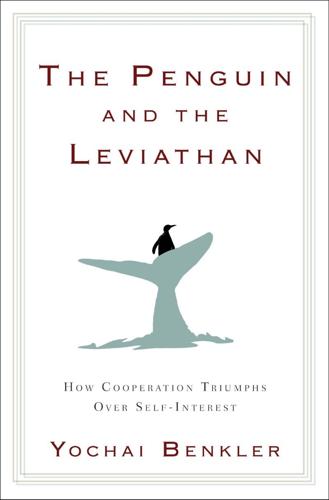
The Penguin and the Leviathan: How Cooperation Triumphs Over Self-Interest
by
Yochai Benkler
Published 8 Aug 2011
Though neuroscience hasn’t been able to isolate a single part of the brain involved in morality, and probably never will (the human mind is far too complex), these studies demonstrate that we do process moral decisions in physically distinct ways. How can these physical attributes translate into the bewildering array of commitments we hold to be moral, or the wide range of taboos we practice as human beings? One possible direction was raised in chapter 2, as I discussed the work of political scientists who used twin study to argue in support of a significant genetic component to voting practices. One way for this to happen is that while we are universally born with the capacity to act morally, we must fill that capacity with actual content, as children, largely by observing others. As with the possibility that conscientiousness generally takes the form of voting specifically, so too we can speculate more generally: The specific shape that our general capacity to form and adhere to moral commitments takes depends largely on our environment and our culture.
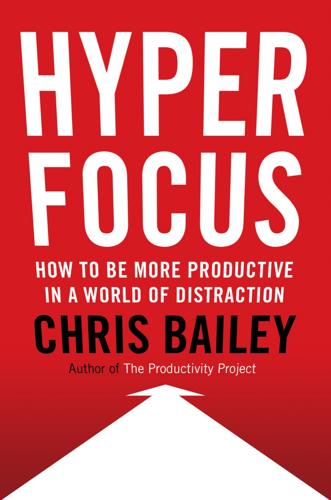
Hyperfocus: How to Be More Productive in a World of Distraction
by
Chris Bailey
Published 31 Jul 2018
yourself from distractions: Mark, Iqbal, and Czerwinski, “How Blocking Distractions Affects Workplace Focus.” correlated with procrastination: John C. Loehlin and Nicholas G. Martin, “The Genetic Correlation Between Procrastination and Impulsivity,” Twin Research and Human Genetics: The Official Journal of the International Society for Twin Studies 17, no. 6 (2014): 512–15. focus on your work: John Trougakos and Ivona Hideg, “Momentary Work Recovery: The Role of Within-Day Work Breaks,” in Current Perspectives on Job-Stress Recovery, vol. 7, Research in Occupational Stress and Well-being, ed. Sabine Sonnentag, Pamela L. Perrewé, and Daniel C.
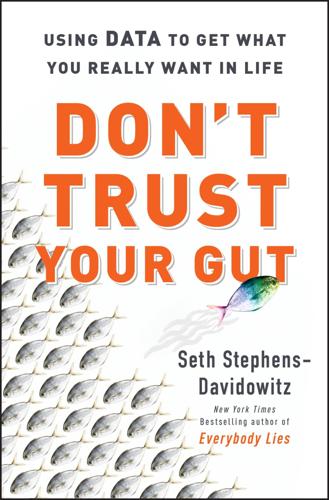
Don't Trust Your Gut: Using Data to Get What You Really Want in LIfe
by
Seth Stephens-Davidowitz
Published 9 May 2022
Twinsburg: The Twinsburg festival has been discussed in many places, including Brandon Griggs, “Seeing double for science,” CNN, August 2017. trusting behavior is 10 percent nature: David Cesarini et al., “Heritability of cooperative behavior in the trust came,” PNAS 105(10) (2008): 3721–26. ability to recognize sour tastes is 53 percent nature: Paul M. Wise et al., “Twin study of the heritability of recognition thresholds for sour and salty tastes,” Chemical Senses 32(8) (2007): 749–54. bullying is explained 61 percent by nature: Harriet A. Ball et al., “Genetic and environmental influences on victims, bullies and bully-victims in childhood,” Journal of Child Psychology and Psychiatry 49(1) (2008): 104–12.
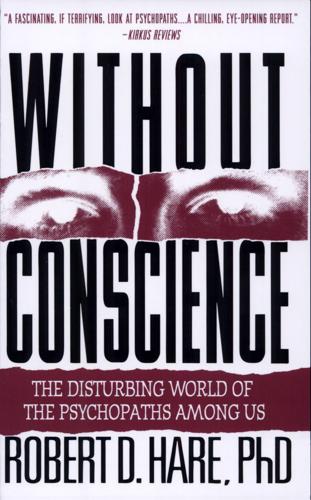
Without Conscience: The Disturbing World of the Psychopaths Among Us
by
Robert D. Hare
Published 1 Nov 1993
Cambridge, England: Cambridge University Press; F. Schulsinger (1974). Psychopathy, heredity, and environment. In S. A. Mednick, F. Schulsinger, J. Higgins, and B. Bell (eds.). Genetics, Environment, and Psychopathology [pp. 177–95]. Amsterdam: North Holland/Elsevier. Of particular importance is a recent twin study that found evidence for a strong genetic contribution to the cluster of personality traits (described in chapter 3) that define psychopathy (W. J. Livesley, K. L. Jang, D. N. Jackson, and P. A. Vernon. Genetic and Environmental Contributions to Dimensions of Personality Disorder. Paper presented at Meeting of the American Psychiatric Association, Washington, D.C., May 2–7, 1992; Adrian Raine (1988).
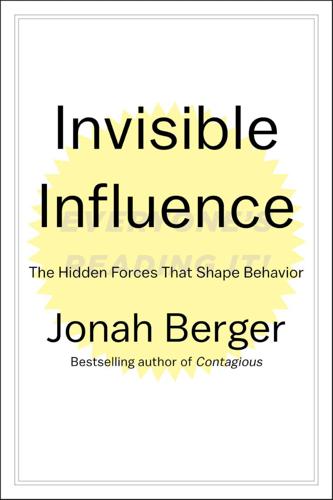
Invisible Influence: The Hidden Forces that Shape Behavior
by
Jonah Berger
Published 13 Jun 2016
See Polizzi, Nicole Soccer, 63–64, 65, 66, 205–7 Social class, 86–96 advertising and, 94–95 automobile preferences and, 86–87, 90–91 nouveau riche, 130–31 shopping habits and, 95 Social comparison, 196–220 energy conservation and, 196–204, 216n losing and, 204–19 practical applications of, 219–20 Social desirability, 5 Social facilitation, 189–96 defined, 189 practical applications of, 220–21 reasons for, 195–96 task complexity and, 193–95 two main areas of research on, 189n Social pressure, 29–30 Social psychology, 188 Social science, 14–15 Social Security Administration, U.S., 153 Soft drinks, regional terms for, 24–25 Sorrentino, Mike (“The Situation”), 101, 110 Soul mate concept, 6–8 South Africa, 121 Soyuz space shuttle (watches made from fragments of), 123 Spears, Britney Jean, 42–45, 53 Speed dating, 41 Sports/athletics, 63–67 birth order and, 16, 64–67 losing in, 17, 204–8, 211–18 Sports Illustrated, 94, 212 Stanford University, 111–14, 190 Starbucks, 97 STEM (science, technology, engineering, and math) fields, 120–21, 142 Stengel, Casey, 73 Stephens, Nicole, 86–91 Structured Liberal Education (SLE), 112–14 Sunglasses evaluation experiment, 132 Superordinate identity, 144–45 Symposium, The (Plato), 6–7 Tennis, 211–14, 216, 217, 218 Terrace (eating club), 174–76 Tiffany & Co., 101, 137 Timberlake, Justin, 44 Tips, increasing, 57 Titanic (watches made from steel of), 124 TiVo, 183–84 Tocqueville, Alexis de, 78 Toyota, 144 Trends, predicting, 149–62 in automobile preferences, 156–57 Chinese characters experiment, 157–60 in name choices (see Names) Triplett, Norman, 188 Trust, 39–41 T-shirts, logos on, 132–33n Twin studies, 68 Twitter, 81 Uncertainty, conformity and, 23 University of California, Berkeley, 220 University of Michigan, 191 University of Pennsylvania’s Wharton School. See Wharton School University of Pittsburgh, 9 Upper class, 90, 92n, 93, 95 Vacheron Constantin, 135 Van Boven, Leaf, 172 Vervets, imitation by, 25–27 Vogue, 94 Volkswagen, 156–57 Vouchers, housing, 224–25 Wansink, Brian, 140n Ward, Morgan, 132 Washington, George, 162 Watches, 16, 123–25, 128, 135 Welfare policy, attitudes toward, 15, 104–7 Wharton School, 15, 150 Williams College, 88–89 Wimbledon, 212–13 Women in STEM fields, 120–21, 142 Working class, 90–91, 92, 94, 95–96 Wristbands, geeks wearing, 110–14, 180 Yates, Dan, 198, 202 Zajonc, Bob, 190–95 Zhang, Yao, 150 Zone of possible agreement, 37–38 Simon & Schuster 1230 Avenue of the Americas New York, NY 10020 www.SimonandSchuster.com Copyright © 2016 by Social Dynamics Group, LLC All rights reserved, including the right to reproduce this book or portions thereof in any form whatsoever.
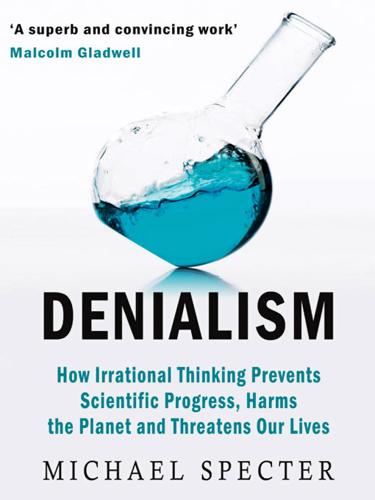
Denialism: How Irrational Thinking Hinders Scientific Progress, Harms the Planet, and Threatens Our Lives
by
Michael Specter
Published 14 Apr 2009
Lawrence Mulloy, manager of the Solid Rocket Booster Project at NASA’s Marshall Space Flight Center, complained to the manufacturer, Morton Thiokol, when engineers from the company warned him the temperature was too low to guarantee their product would function properly. SCIENTISTS HAVE NEVER BEEN good about explaining what they do or how they do it. Like all human beings, though, they make mistakes, and sometimes abuse their power. The most cited of those abuses are the twins studies and other atrocities carried out by Nazi doctors under the supervision of Josef Mengele. While not as purely evil (because almost nothing could be), the most notorious event in American medical history occurred not long ago: from 1932 to 1972, in what became known as the Tuskegee Experiment, U.S.
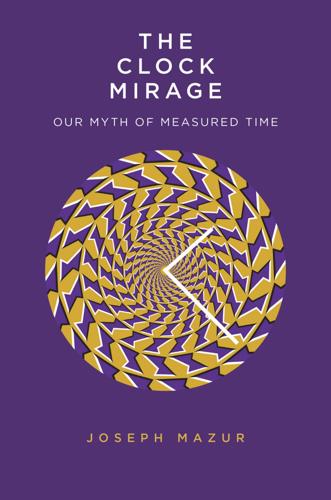
The Clock Mirage: Our Myth of Measured Time
by
Joseph Mazur
Published 20 Apr 2020
Perrett and G. B. Jeffery (London: Methuen, 1923; reprint ed., New York: Dover, 1952), 35–65. Originally published as Das Relativitätsprinzip, 4th ed. (Leipzig: Teubner, 1922). 3. Recent studies have assessed the dangers of long-term space flight. See Francine E. Garrett-Bakelman et al., “The NASA Twins Study: A Multidimensional Analysis of a Year-Long Human Spaceflight,” Science 364 (2019), doi: 10.1126/science.aau8650. 4. See Gerald James Whitrow, The Natural Philosophy of Time (Oxford: Clarendon Press, 1980), 265. 5. By frame of reference, we mean a coordinate system with reference points that uniquely locate all points within the system along with a way of measuring distances between points. 6.
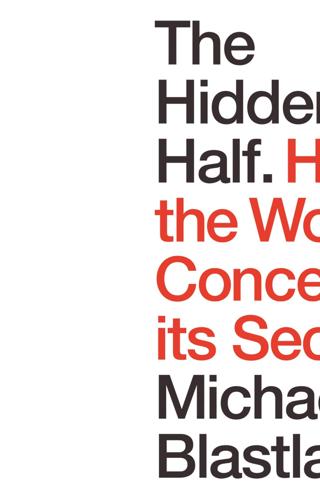
The Hidden Half: How the World Conceals Its Secrets
by
Michael Blastland
Published 3 Apr 2019
Index abstract formulas 141 Academy of Medical Sciences 133 adoption studies 41 aid, economic development 141 aid-effectiveness craze, the 153 alcohol consumption 180 AllTrials campaign 114–5 Altman, Doug 129–30 Amano, Yukiya 185 ambiguity 209–10 Amgen 111–2 Analysis (radio programme) 102 analytic validity 158, 263n18 anarchy 224 aphorisms 68–9, 149 apprenticeships 205–6 argument, beliefs and habits of 186 asthma 135 Attanasio, Orazio 225–9, 230 Autho, David 219–23 average knowledge 173 background influences 23–34 background norms, rejecting 24–5 bacon 161–3, 162–3 Banerjee, Abhijit 150–4, 157 Bangladesh 80–2, 82, 101–2, 158, 261n6 Bank of England 103, 216 Bank of Japan 103 Basbøll, Thomas 244–5 baseline data 165 base-rate neglect 176–7 basic laws 140 Bateson, William 245 BBC 88, 98 Beatles, the 52–3, 259n33 Begley, Glenn 111–7 behaviour context-specific 42–3 environmental cues 65–7 behavioural economics 157 Behavioural Insight Team 155, 156, 232 beliefs 60 contradictory 63–4 inconsistency of 60–6 justification 60–1, 63 manipulation 62–3 power of information on 66–8 self-contradiction 61–2 Berlin, Isaiah 199 betting, on knowledge 236–7 big causes, power of 35 big events causal intricacy 193–6 complexity 185–7 difficulty determining causality 188–96 power of circumstance 196–9 big picture, the 215–6 Bijani, Ladan 40–1 Bijani, Laleh 40–1 biographies 49 biological randomness 43–4 biomedical science, research standards 129–36 Bolsover 217–8 Boorstin, Daniel 17, 136, 138, 264n24 Booth, Charles 146–7 BP 211 brain, the 64 plasticity 56 self-justifying 83 breast cancer 45–6, 46 Brexit referendum 18–9, 20, 90, 214–8, 223–4, 241 Bunnings 77 Burckhardt, Jacob 255n20 Burke, Edmund 269n1 Burns, Terry 102–3 business decisions, failures 210–1 cancer 45–8 breast 45–6, 46 lung 174–5 risk 162–3, 166, 174–5 screening 132–3 Cancer Research UK 133 canned laughter 154–5 capitalism 118 Carillion 211 Carp, Joshua 123–4 Cartwright, Nancy 79, 79–82, 82, 193–4, 195, 202–3, 203–4, 263n18 causal instincts 123 causal interactions, complexity 239 causal intricacy 193–4 causal models 242–4, 243, 269–70n3 causal theorizing 212–4 causality assumption of 212–4 difficulty determining 188–96 existence of 276–7n12 hard 225–9 importance of 212 mechanical models 242–4, 243 in one person 48 cause and effect dependable 203–4 patterns of 23, 25–6, 26 supposed 248 unreliable 204 causes and causal influences 90, 94 competing 248 criminals 29 interaction 193–6 and luck 178 secret life of 8–11 simple 184–5 cells, biographical stories 47–8 certainty, desire for 235 Chadwick, Edwin 146–7 chance 14, 37–8, 247, 281n1 chaos theory 56–7, 276n10 Chater, Nick 59, 60, 63, 64–5, 66–7 Chernobyl disaster 185 child and adolescent development 23–6, 41–2 child mental health 206–7 childhood influences 23–5 delinquent boys 26–34 China, rise of 218–23, 279n19 choice, situated 31–3, 34 choice blindness 62 choices 60 Cialdini, Robert 154–5 Cifu, Adam 131–2 circumstances 70 power of 196–9 claims inflation 130 climate change 238–9 Clinton, Hillary 222 Cochrane Collaboration, the 189–90 cognition 64 cognitive biases 14 cognitive limitations 14, 214 Comaroff, John 107–8 common sense 69–70 comparative cost analysis 173 competence 236–7 complacency 237 complexity adding 244 big events 185–7 facing 15 hidden 184–201 of reality 245 complexity theory 276n10 complexity-avoidance 187 complications, hidden 187 Conan Doyle, Arthur 108 confidence 72 consistency 68–75, 202–4, 260n6, 260n8 constructive realism 17 consumer behaviour 77 context 41–2, 72, 101 context-specific behaviour 72 context-specific learning 42–3 control alternative to 248–9 elusiveness of 85–6 powers of 195 conviction 104 coping strategies 16–7, 225–46 adapting 230–3 betting 236–7 communicate uncertainty 237–9 embracing uncertainty 234–6 exceptions 244–5 experiment 230–3 governing for uncertainty 239–41 managing for uncertainty 241–2 metaphors 242–4 negative capability 234 relax 246 triangulation 233–4 use of probability 242 Corbyn, Jeremy 20 corporate power 241 cost/benefit analysis, cows 117–22 cows, cost/benefit analysis 117–22 Coyle, Diane 216, 262n12 Crabbe, John 85–7 credibility 238–9 credibility crisis 18 crime causes of 142–4 heroes and villains view 142 opportunist 144–5 reduced opportunity 144–5 theory of 142–6, 143 victims and survivors view 142–3 criminals causal influences 29 childhood influences 26–34 desisters 30 high rate chronics 30 life-course persistent offenders 28–9 life-courses 28, 236 variables 31 critical factors 83–5 crowds, wisdom of 149 cultural difference 79–82, 79–85 Daniels, Denise 43–4, 57 Darwin, Charles 50–1 data granularity 216–7 interpretation 98–100 Dawid, Philip 276–7n12 De Rond, Mark 198, 201 de Vries, Ymkje Anna 114 deadweight cost 205–6 debate 98 decision making 58–60 influences 32–3 situated choice 31–3 deep preferences 65 deeper rationale, construction of 60 Deepwater Horizon 211 defining characteristics 43 degrees of freedom 122–9 delinquent boys 26–34 dementia 176–7, 274n16 democracy 20 Deng Xiaoping 219 Denrell, Jerker 199, 201 desires 59 details importance of 49–54 neglecting 151–2 problem of 229 selective 26 determinism 28 development economics 150–3 developmental difference, sources of variation 9–11 developmental noise 10 difference 15 pockets of 214–24 Dilnot, Andrew 237, 275n3 disciplined pluralism 231 disorder 45 forces of 11–3 doubt 238 Down’s syndrome 166 drugs comparative cost analysis 173 impact 171–2 medical effect 167–9, 169, 170–4 non-responders 172 Numbers-Needed-to-Treat (NNTs) 168, 169, 170, 173–4 predictive weakness 170–3 duelling certainties 235 Duflo, Esther 83, 84, 141, 150–3, 157–8, 158–9, 230–1 ecological validity 263n18 economic development, aid 141 economic forecasting 92, 102–7 economic recovery 217–8 economics 233 economy, the 87–100, 91, 93, 94, 95 education 151–2, 206–7, 275– 6n7 Einstein, Albert 140–1 Emerson, Ralph Waldo 68 enigmatic variation 13–6, 48 environment context 72 non-shared 37 shared 35 environmental influences 43–4 epidemiology 181 epigenetics 6–7 erratic influences 60 essential you, the 59–60 estimates 89–91, 96 European Central Bank 103 evidence 21 balance of 114 conclusive 186, 187 the Janus effect 121, 122–9 limitations of 117–22 statistical significance 137 strength of 137 evidence-based medicine 133–4 exceptions 214–24, 244–5 expectations 35 big 196 frustration of 15 of regularity 47, 202–4 unrealistic 182 experience, influence of 33, 34, 55–7 experiment 230–3 expertise, crisis of 18–9 experts, credibility crisis 18–9 external validity 101, 158, 263n18, 264n19 extreme performance 199 failure 204–11 fairness 66–7 false negatives 113–4 false positives 113–4, 122 falsification 245 family, changes of 41 farmer and a chicken, the 202–4 fate 30 fears, exaggerated 46 Financial Times 77 First World War 108 Fitzroy, Robert 50 flat mind, the 60, 60–8 Flaubert, Gustave 139 forecasting 109 former Yugoslavia 108 foxes 199 France 186–7 Freedman, Sir Lawrence 108, 109 freedom 236 Fukushima nuclear power station meltdown 185–7 fundamentals 141 identifying 153 further education 208–9 Galbraith, John Kenneth 110 Gartner, Klaus 87 Gash, Tom 142–3 Gates, Bill 199 GDP data 262n12 growth estimation 88–100, 91, 93, 94, 95, 262–3n14 local 214–5, 216, 218 Gelman, Andrew 124–5, 244 gene–environment interaction 6–7 general principles 140 generalities 174 generalization 76–8, 146, 152, 263n18 genes and genetics influence of 34–7, 39–41, 44, 45–7 overclaiming 134–5 power of 33, 45 genetic risk 45–7 genius, dangerous 212–4 genotype 8 Germany 185, 186, 188 Gillam, John 77 global financial crisis, 2008–9 104, 106, 210, 235 globalization 213 Gove, Michael 18–9 granularity 216–7 ground truth 217 groupthink 149 guarantees, lack of 160 Guardian 207 Gupta, Rajeev 117, 118 Haldane, Andy 216–7, 218 Harford, Tim 156–7, 237 Harris, Judith Rich 40–2, 72 Hayek, Friedrich 105–6 health screening 177 heart disease 163–6 hedgehogs 199 Henry (ex-delinquent) 32 Hensall, Abigail 39–40, 41 Hensall, Brittany 39–40, 41 herd mentality 154–5 hidden causes 35–8 hidden half, the coping strategies 225–46 ignoring 202–24 mystery of 35 power of 44–5 hidden trivia 8–9 hindsight 78 hindsight bias 83 history 107–8 lessons of 109 Homebase 76–7 Honda, US motorcycle market penetration 196–9 hubris 77 human sameness irregularity 45–9 limits of 34–45 human understanding, fundamentals 213 Human Zoo, The (radio programme) 60–6 humility 224, 248–9 IBM 199 ibuprofen 163–5 ideological divide 240 ideologies 9–10 idiosyncratic influence 53–4 ignorance 21, 107 disguising 242 the shock of 7 imagination 138 impulsive judgement, value of 149 incarceration rates, United States of America 222, 240, 280n10 incidentals, effect of 51–2 incoherency problem, the 149 inconsistency beliefs 60–6 justifiable 70–1 incredible certitude 209 Indian Express 117 individual differences 56 individuality conjoined twins 39–42 neurological foundation of 56 industrial policy 208 inflation 102–7 influences background 23–34 childhood 26–34 criminals 26–34 decision making 32–3 environmental 43–4 erratic 60 hidden 204 microenvironmental 8–9, 253–4n12 information power of 66–8 selective 66–7 Institute for Fiscal Studies 205–6 Institute for Government 208–9 intangible differences 253n11 intangible variation 10, 229 interaction, problems of 193–6 internal validity 101–2, 158 International Journal of Epidemiology 43 intuition 54, 204 Ioannidis, John 121, 133–6 irrationality, human 14 irregularity 94 disruptive power of 224 frustration of 15 human 45–9 influence 12 problem of 229 underestimating 214–24 Islamic State 108 it’s-all-because problem 91, 96 James, Henry 29, 56 James, William 141 Janus effect, the 121, 122–9 Johansen, Petter 62 Johnson, Samuel 214 Johnson, Wendy 71–2 Jones, Susannah Mushatt 162–3, 165 journalism 237–8 Juno (film) 193 Kaelin, William 130 Kawashima, Kihachiro 197 Kay, John 16, 68, 197, 231, 232 Keats, John 138–9, 234 Kempermann, Gerd 56, 57 Keynes, John Maynard 107, 271n9 Keynesianism 103 King, Mervyn 103, 104, 106, 110 Kinnell, Galway 28 Knausgaard, Karl Ove 86–7 Knight, Frank 107 Knightian uncertainty 107 knowledge 12–3, 170 advance of 20–1 average 173 betting on 236–7 credibility crisis 18 critical factors 83–5 failures of 19, 76–8, 79–82 fallibility of 248 generalizable 234 generalization 76–8 illusion of 136, 138 lessons of the past 102–7, 107–10 in medicine 182 negative capability 138–9 as obstacle to progress 17 obvious 82 paths to 136–9 plausibility mistaken for 132 practical 30–1 pretence of 105–6 probabilistic 160, 161, 163–4, 172–3 and probability 180 problem of scale 177–80 provenance 116 relevant 82–5 replication crisis 111–7 subverting 76–110 and time variations 87–100, 91, 93, 94, 95 transfer 37, 76–8, 83, 101–2 unknowns 85–7 validity 100–2 validity across time 107–10 weakest-link principle 79–82 Krugman, Paul 210 Lancet 225–6 Langley, Winnie 51, 165, 178 Laub, John 26–34, 42 law-like effects, claims about 21 learning styles 207 Leicester City Football Club 199–201 Leon (ex-delinquent) 31–2 Leyser, Ottoline 114 life, mechanics of 51 life-course persistent offenders 28–9 limits and limitations 16–7, 44, 75 base-rate neglect 176–7 of cleverness 278n14 individual level 174–6, 178–9, 181–3 lack of guarantees 160 marginal probabilistic outcomes 176–7 medical effect 167–9, 169, 170–4 on prediction 165–6 on probability 160–83 problem of scale 161–6, 174– 6, 177–80, 181–3 Liskov Substitution Principle 261n3 Little Britain (TV comedy) 192 Liu, Chengwei 198, 201 lives, understanding 29 location shift 264n20 Loken, Erik 124–5 long-acting reversible contraceptives (LARCS) 190 luck 37–8, 48, 178, 198 lung cancer 174–5 Lyko, Frank 1, 2 machine mode thinking 151–2 Macron, Emmanuel 20 Manski, Charles 209, 235 Mao Zedong 218 marginal probabilistic outcomes 176–7 marmorkrebs 1–9, 4, 10, 12, 12–3, 22, 35, 81, 182, 252n2 Marteau, Theresa 65 Martin, George 52 May, Theresa 208 Mayne, Stephen 77 measurement 99–100 mechanical relationships 212, 242, 244 mechanical thinking 242–4, 243 media stigma 192–3 medical effect, drugs 167–9, 169, 170–4 medical reversal 131–3 medicine comparative cost analysis 173 knowledge in 182 non-responders 172 Numbers-Needed-to-Treat (NNTs) 168, 169, 170, 173–4 personalized 181–3 predictive weakness 170–3 probability and 167–9, 169, 170–4 memory 56, 102–7 Mendelian randomization 233 Menon, Anand 214–5 mental shortcuts 14–5 mere facts 202–3 meta-science 19, 20 methodological revisions 97–8, 120 mice 55 microenvironmental influences 8–9, 253–4n12 micro-irregularity 35–7 micro-particulars 128 Microsoft 147–50, 199 Miller, Helen 66–7, 67 mind, the flat 59–60, 60–8 shape 59 models and modelling 140, 242–4, 243, 269–70n3 moment when, the 52 morality, changing 108 More or Less (radio programme) 237 Munafò, Marcus 234 Nadella, Satya 147–8 National Survey of Family Growth 192 National Surveys of Sexual Attitudes and Lifestyles 191–2 nationalism 108 Nature 2, 112, 136, 168, 174 nature/nurture debate 3, 5–6, 9–10 negative capability 138–9, 234 neurology 58 New England Journal of Medicine 131–2 Newcastle upon Tyne 214 Newton, Isaac 140–1 noise 14 definition 10 developmental 10 as intellectual dross 11 re-appraisal of 11–3 non-shared environment 37 Nosek, Brian 129 noses 49–51 Nottingham 217 Numbers-Needed-to-Treat (NNTs) 168, 169 nurture, influence of 44 O’Connor, Sarah 217–8 Office for National Statistics 89, 92, 98, 99–100, 216 O’Neill, Onora 238 opinions 21, 59 order 11–2, 13 organ donation campaign 155–6 outside influence 44 overclaiming 134–5 overconfidence 21 overseas business expansion 76–8 Oxfam, sexual abuse scandal 210 Paphides, Pete 52–3 parental behaviour 41 parents, impact of 41 Parris, Matthew 63 parthenogenesis 1–2 particularism 271–2n15 particularity problem, the 93 past, the, lessons of 102–7, 107–10 pattern-making instinct 21 patterns 13 pendulums 57 perceptual systems 64 performance 72–5 personalized medicine 181–3 Peto, Richard 47–8 phenotypes 8 physiognomy, and character 50 plausibility 132 Plomin, Robert 43–4, 49, 57 pluralism 231–2 polarization 235 policy making 231–2 appraisal 277n4 chances of success 208 failures 204–9 governing for uncertainty 239–41 and probability 178–9 secret of 209 seminar 207–8 sequential changes 208 political assumptions, fall of 20 political beliefs 60–6 population validity 263n18 populism, rise of 20 poverty 240–1 Prasad, Vinayak 131–2 precision 183 predictability 28 predictive weakness 165–6, 170–3 preferences 59, 62 deep 65 priming 126–8 probabilistic knowledge 160, 161, 163–4, 170, 172–3 probability 54, 70, 107, 258n25, 272n2 advantages 177–80 base-rate neglect 176–7 difference in 30 fear of low probabilities 166 individual level 174–6, 178–9, 181–3 limits and limitations 160–83 marginal 176–7 medical effect 167–9, 169, 170–4 paradox 170 and policy making 178–9 predictive weakness 165–6 problem of scale 161–6, 174– 6, 177–80, 181–3 recognizing significance 161 risk evaluation 161–6 suggestion of knowledge 180 use of 242 usefulness 161 problems, conceptualizing 17 productivity growth 209–10 progress, knowledge as obstacle to 17 psychoanalysis 58 psychology 58 Pullinger, John 278n14 Pullman, Philip 37 quantification, risk and risk-taking 162–5 racism 125–6 radical uncertainty 106, 107 Radio, Andrew 102 rage to conclude, the 139 randomized controlled trials, value of 280n6 randomness, pure 9 Ranieri, Claudio 200–1 rationality 68, 260n6, 260n8 reality 230, 245, 254n14 reciprocity 155 reflection 65–6 regularity 73, 160 assumption of 212–4 expectations of 47, 202–4 search for 212, 230 statistical 240–1 replication crisis 18, 111–7, 117– 22, 129, 136, 138 Replication Project 129 research 111–39 balance of evidence 114 breadth 130 claims inflation 130 confidence in 115–6 credibility crisis 18 decision rules 136–9 depth 130 evidence-based medicine 133–4 false negatives 113–4 false positives 113–4, 122 fragility 128–9 freedom 122–9 half wrong 113, 115–6 the Janus effect 121, 122–9 limitations of 117–22 micro-particulars 128 multiple analyses 125–6 multiple conclusions 117–22 overclaiming 134–5 priming 126–8 redemption 20 replication crisis 111–7, 117– 22, 129, 136, 138 rigour 19 scepticism 115–6 standards 129–36 statistical significance 122 triangulation 138 validity 101–2 research-credibility crisis 18 rigour 19, 246 risk and risk-taking 70–1, 107, 186 alcohol consumption 180 cancer 162–3, 166, 174–5 communication of 133 evaluation 161–6 heart disease 163–6 quantification 162–5, 166 quantified 187 risk-perception 71 Rockhill, Beverly 181 Rolling Stone magazine 23 Rose, Geoffrey 175–6 Rowntree Joseph 146–7 Royal Bank of Scotland 211 Russell, Bertrand 202, 202–3 samples, validity 100–2 Sampson, Robert 26–34, 42, 236 sanitation 225–9 Santayana, George 109 scale, problem of 161–6, 174–6, 177–80, 181–3 scepticism 105, 115–6, 128, 206 schizophrenia 34–6, 256n10 Science 56 Scientific American 55 Scotland, Triple-P parenting programme 206 screening 132–3, 177 searing memory, doctrine of the 102–7 selection bias 244 self-understanding 67 Sense about 115 serendipitous events 43, 52–3 sex education, role of 189–90 short-term gene–environment interaction 7 significance, recognizing 161 Silberzahn, Raphael 125–6 Simmons, Joseph 122–3 situated choice 31–3, 34, 42 situations, appraisal of 72 sliding-doors moments 50 small differences, power of 56–7 small effects, influence of 49–54 small experiences, influence of 35–7 smartphones 97, 191 Smith, George Davey 50, 51, 234, 281n1 social contexts 31, 195 social media 191 social mobility 240–1 social policy 195 social proof 154–6 social reformers 146–7 social science, utility of 146–50 special theory of relativity 140–1 Spiegelhalter, David 180, 244–5 spontaneous interaction 9 stagflation 103 statins 171 statistical regularities 240–1 statistical significance 122, 137 stents, use of 131 stories and storytelling 25–6, 53–4, 244–5, 247, 248, 258n25, 258n27 structural forces 54 Sun, the 51 support factors 194 Surfers Against Sewage 70–1 surgeons, skills 73–4 system 1 thinking 149 systematic forces 54 systems-level thinking 153 Tamil Nadu 79–82, 101–2 Tangiers, Morocco 84 technology, changing 108 Teen Mom (TV show) 193 teenage pregnancy rate decline in 184, 188–96 estimates 275n3 terrible simplifiers 255n20 Tesco 77, 211 Thaler, Richard 157 theories 140–59 analytic validity 158 arguments about 150–4 of crime 142–6, 143 development economics 150–3 fitness 157 implementation 152 limitations 157 and practice 141 refining 156–7 relevance 157–8 social science 146–50 tension in 154–9 using 156–7 ‘thick’ description 86 time, validity across 107–10 Time magazine 193 time variations, and knowledge 87–100, 91, 93, 94, 95 The Times 63 toilets 225–9 Toshiba 211 trade-offs 190–1 trends 54 trials 156 triangulation 138, 233–4 Triple-P parenting programme 206–7 trivia, importance of 84–5 true uncertainty 107 Trump, Donald 20, 218, 222, 223–4 trust 238 trust deficit 218 trustworthiness 238 Tufte, Edward 139 turning points, variety 49–54 TV crime shows 143, 143 twins and twin studies conjoined 39–42 identical 34–7, 39, 256n10 Tyson, Mike 23, 23–6 Tyson, Rodney 24–5, 255n3 Uhlmann, Eric 125–6 uncertainty 89–90, 100, 209– 12, 254n14 admitting 238 communicating 237–9 data 89–91 embracing 234–6 erratic 93 governing for 239–41 Knightian 107 language of 238 managing for 241–2 in medicine 167–9, 169, 170–4 perpetual 230 radical 106, 107 true 107 uncertainty laundering 268n33 understanding hidden half of 13 limiting effects on 14 limits of 54 unemployment 221–2, 263n17 unintended consequences 105, 229 United States of America China trade 220–3 incarceration rates 222, 240, 280n10 labour market 221 minimum wage 266–7n10 unemployment 221–2 universal gravitational attraction, theory of 140–1 unknowns 85–7, 206 unusual, the 195 upbringing 23–5 Uyeno, Lori 47 validity across time 107–10 analytic 158, 263n18 ecological 263n18 external 101, 158, 263n18, 264n19 internal 101–2, 158 knowledge 100–2, 107–10 population 263n18 research 101–2 samples 100–2 values 59, 232 variation, sources of 5–8 Volkswagen, diesel emissions scandal 211 Wall Street Journal 219 Wallace, Alfred Russel 259n33 Walmart 77 Watts, Duncan 68, 69, 147–50 weakest-link principle 79–82 Wedgwood, Josiah 50–1 Wellington, Duke of 51 Wesfarmers 76–7 West Germany, motorcycle thefts 142–4 Western, Bruce 54 Wilson, Harold 99 World Bank Independent Evaluation Group 79 World Health Organization 162 world picture 63–4 Wright, Sewall 253n11

Power
by
Shahida Arabi
Published 11 Jan 2017
Since this parental overvaluation is not balanced with the acknowledgment of the child’s imperfect humanity, it causes that child to develop a sense of grandiosity that vacillates between feelings of worthlessness and a hyperinflated ego—in other words, narcissism in the place of a healthy self-image (De Lisle, 2015). It can also cause the child to highly emphasize one attribute over others—such as looks, intellectual ability or another talent—in place of healthy self-esteem and self-acceptance. That’s where we have to consider biological predisposition being passed down in families. Twin studies have shown that narcissism is a common, heritable trait (Livesley et. al, 1993). That being said, parents alone may not be responsible for producing narcissism in their children, and there are many parents with narcissistic children who do provide their children a loving, validating home. There is also a biological and neurological standpoint that redirects us to consider how the brain of someone with NPD differs from someone who does not have NPD.
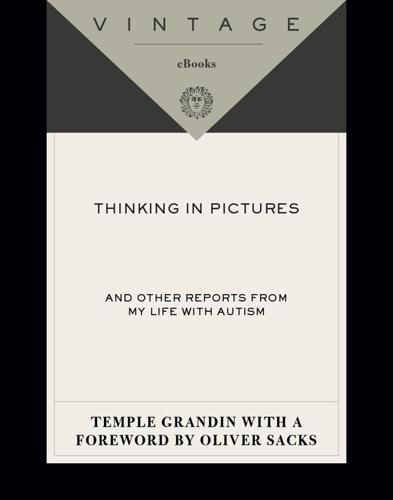
Thinking in Pictures: And Other Reports From My Life With Autism
by
Temple Grandin
Published 10 Jan 2006
The factors that all interact with each other to cause a developmental disability are: 1. Genetic susceptibility 2. Exposure to a toxic agent 3. The timing during development that exposure to a toxic agent occurs. A toxic agent may have no effect at one stage of development and bad effects at another stage. Twin studies show further evidence of an interaction between environment and genetics. Mady Horning states that the concordance rate for autism in genetically identical twins is 90 percent. This means that 90 percent of the time both twins are autistic. In genetically different nonidentical twins the concordance rate is 35 percent and the autism rate in siblings is 4 percent.

The Narcissist Next Door
by
Jeffrey Kluger
Published 25 Aug 2014
There’s no scientific paper worth reading showing that people who are considered narcissists share some brain profile or set of genes.” Kagan bases his beliefs on a range of problems that beset a lot of behavioral research, no matter how well designed the experiments are. For starters, the twin studies gather their raw data via questionnaires, which rely on the subjects to rate themselves and, harder still, to do so honestly—which is about the most subjective research strategy imaginable. This is true no matter who the subjects are, but when they’re twins things can get skewed further, since fraternal siblings, as a rule, try harder to distinguish themselves from each other than identical twins do, and that response bias may show up in their answers.
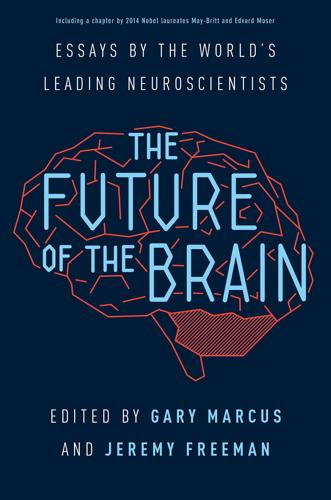
The Future of the Brain: Essays by the World's Leading Neuroscientists
by
Gary Marcus
and
Jeremy Freeman
Published 1 Nov 2014
Real differences underlying illness in particular subsets of patients will be swamped out if the causes of these conditions are actually heterogeneous. Genetics Where neuroscience has so far failed to distinguish psychiatric patients by cause, genetics is proving more incisive. From the time that conditions like schizophrenia and autism were first described it has been clear that they “run in families.” Twin studies clearly show that this effect is largely due to shared genes, not shared environment. In neurodevelopmental disorders like autism and schizophrenia, genetic differences account for the vast majority of variance across the population in who develops these conditions. The big news is that it is now finally possible to find those genes.
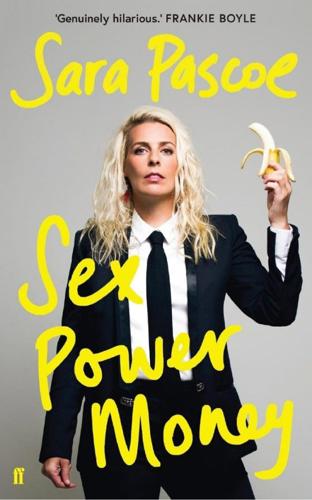
Sex Power Money
by
Sara Pascoe
Published 26 Aug 2019
There is a multitude of studies examining how watching hardcore porn might change how the viewer interacts with the real world, but unfortunately there are so many other factors in somebody’s life, it’s impossible to say definitively what causes an opinion or a behaviour. Until I get my porn-island twin study off the ground, that is. I have been seeking a study about empathy and sexual arousal. I want a clear answer to my question from right at the beginning: does being turned on make someone care a bit less? Something I have experienced personally from sex with men is that when they are very aroused, they are also very motivated to orgasm.

How to Spend a Trillion Dollars
by
Rowan Hooper
Published 15 Jan 2020
DOI: 10.1111/mve.12327 18 See Max Roser et al. (2019) ‘Life expectancy’. ourworldindata.org/life-expectancy 19 Vasilis Kontis et al. (2017) ‘Future life expectancy in 35 industrialised countries: projections with a Bayesian model ensemble’. Lancet 389(10076), 1323–1335. DOI: 10.1016/S0140-6736(16)32381-9 20 Francine E. Garrett-Bakelman et al. (2019) ‘The NASA Twins Study: a multidimensional analysis of a year-long human spaceflight’. Science 364(6436). DOI: 10.1126/science.aau8650 21 Chelsea Gohd (2019) ‘Can we genetically engineer humans to survive missions to Mars?’ www.space.com/genetically-engineer-astronauts-missions-mars-protect-radiation.html 22 David Cyranoski (2019) ‘Russian “CRISPR-baby” scientist has started editing genes in human eggs with goal of altering deaf gene’. www.nature.com/articles/d41586-019-03018-0 23 Giorgio Sirugo et al. (2019) ‘The missing diversity in human genetic studies’.
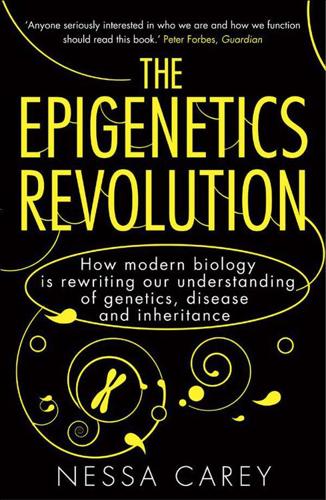
Epigenetics Revolution: How Modern Biology Is Rewriting Our Understanding of Genetics, Disease and Inheritance
by
Nessa Carey
Published 31 Aug 2011
Assuming that the mutation was present in either the egg or the sperm that fused to form the zygote, all the daughter cells that form the inner cell mass and ultimately the two embryos will also carry the mutation. However, relatively few conditions show 100 per cent concordance, as the majority of illnesses are not caused by one overwhelming mutation in a key gene. This creates the problem of how to determine if genetics plays a role, and if so, how great this role is. This is where twin studies have become so valuable. If we study large groups of MZ twins we can determine what percentage of them is concordant or discordant for a particular condition. If one twin has a disease, does the other twin also tend to develop it as well? Figure 5.1 is a graph showing concordance rates for schizophrenia.
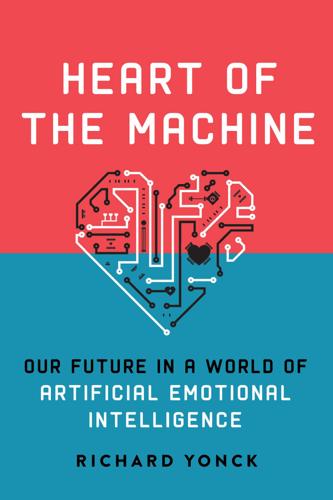
Heart of the Machine: Our Future in a World of Artificial Emotional Intelligence
by
Richard Yonck
Published 7 Mar 2017
“NMDA receptors and fear extinction: implications for cognitive behavioral therapy.” Dialogues in Clinical Neuroscience. 13(4):463–474. 2011. 9. Stein, M.B., Lang, L. Taylor, S., Vernon, P.A., Livesley, J.W. “Genetic and Environmental Influences on Trauma Exposure and Posttraumatic Stress Disorder Symptoms: A Twin Study.” American Journal of Psychiatry. 150(10):1675–1681. 2002. 10. Wallach, W. “From Robots to Techno Sapiens: Ethics, Law and Public Policy in the Development of Robotics and Neurotechnologies.” Law, Innovation and Technology 185–207 3(2). 2011. 11. Match.com. / U.S. News & World Report.; Pew Research Center. “15% of American Adults Have Used Online Dating Sites or Mobile Dating Apps.”

Freakonomics: A Rogue Economist Explores the Hidden Side of Everything
by
Steven D. Levitt
and
Stephen J. Dubner
Published 11 Apr 2005
SUVs swimming pools, drowning in Switzerland Szilagyi, John taxes cheating on evasion of “sin” withholding of tax gap teachers bonuses for cheating to meet testing standards by firing of incentives of male vs. female proficiency of television Temple, Shirley terrorism deterrence of fear of money raising for threats of see also Ku Klux Klan; September 11 terrorist attacks testing: of adopted children of black vs. white children data of family factors and of girls vs. boys high-stakes multiple-choice repeat teacher cheating to meet high standards of Texas, University of Texas, University of, at Arlington Southwestern Medical Center at Thaler, Richard Theory of Moral Sentiments, The (Smith) Thomas, Clarence Thurmond, Strom Time tipping point tips, pooling of Tokhtakhounov, Alimzhan Tour de France tragedy of the commons Trilby (Levitt’s friend) Tuskegee Institute twin studies Twitchell, James B. “Understanding the Black-White Test Score Gap in the First Two Years of School” (Fryer) “Understanding Why Crime Fell in the 1990’s: Four Factors That Explain the Decline and Seven That Do Not” (Levitt) Undis, David union busting United Network for Organ Sharing University Press of Florida utility maximization Venkatesh, Sudhir Vienna voting Wade, Henry Waksal, Sam Walk, Hunter Wall Street Journal Wal-Mart Washington Merry-Go-Round Weakest Link, The weapons of mass destruction weather weight loss West Palm Beach airport When Bad Things Happen to Good People Wikipedia William Morris Agency William Morrow/HarperCollins Wilson, James Q.

Time Paradox
by
Philip G. Zimbardo
and
John Boyd
Published 1 Jan 2008
Segal, Entwined Lives: Twins and What They Tell Us About Human Behavior (New York: Dutton, 1999). 2. N. Angier, “Joined for Life, and Living Life to the Full,” New York Times, 23 December 1997, F1. 3. A. D. Dreger, “The Limits of Individuality: Ritual and Sacrifice in the Lives and Medical Treatment of Conjoined Twins,” Studies in History and Philosophy of Biological and Biomedical Sciences 29: 1–29 (1998). 4. Ibid. Since this paper was published, at least one pair of adult conjoined twins sought separation and died during surgery. “A Lost Surgical Gamble,” New York Times, 9 July 2003, 20. 5. J. R. Searle, Mind, Language, and Society: Philosophy in the Real World (New York: Basic Books, 1998). 6.
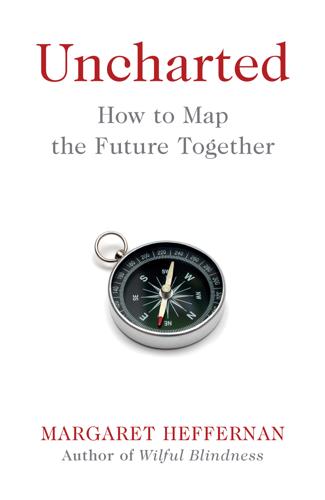
Uncharted: How to Map the Future
by
Margaret Heffernan
Published 20 Feb 2020
Epigenetics, the study of all the factors beyond genes that determine life, is revealing how much more complex inheritance is.24 So when you get into the genetic determination of personality, prediction becomes highly problematic. Some of the loudest claims come from Robert Plomin, best known for his twin studies. In his book Blueprint: How DNA Makes Us Who We Are, he makes what he himself describes as a ‘sales pitch’ for the power of genetics to predict personality. It can, he writes, ‘tell your fortune from the moment of your birth, it is completely reliable and unbiased – and it costs only £100 . . .

The Nocturnal Brain: Nightmares, Neuroscience, and the Secret World of Sleep
by
Dr. Guy Leschziner
Published 22 Jul 2019
It is certainly not rare. Many people experience it at some point in their lives. Research in this field is limited, but it appears that certain factors predispose to sleep paralysis and the associated hallucinations. Age, gender and race do not seem to be particularly relevant, but from looking at family history and twin studies, there does appear to be a genetic element. More importantly, however, sleep disruption is a common association. Shift work, night cramps, sleep apnoea and sleep quality in general all appear to increase the likelihood, as do certain psychiatric conditions like post-traumatic stress disorder (PTSD) and anxiety.
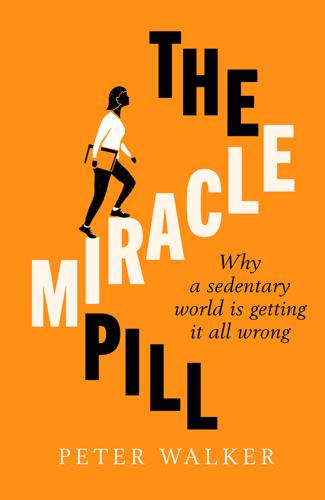
The Miracle Pill
by
Peter Walker
Published 21 Jan 2021
Tucker, ‘Physical activity and telomere length in US men and women: An NHANES investigation’, Preventative Medicine, Vol. 100 (2017): 145–51. 5 Natassa V. Tsetsonis, Adrienne E. Hardman, Sarabjit S. Mastana, ‘Acute effects of exercise on postprandial lipemia: a comparative study in trained and untrained middle-aged women’, American Journal of Clinical Nutrition, Vol. 65, No. 2 (1997): 525–33. 6 Francine E. Garrett-Bakelman et al., ‘The NASA Twins Study: A multidimensional analysis of a year-long human spaceflight’, Science, Vol. 364, No. 6436 (2019): 127–8. 7 Interview with the author. 8 Updated edition: 2018 Physical Activity Guidelines Advisory Committee Scientific Report. Co-chairs of committee: Abby C. King and Kenneth E. Powell https://health.gov/sites/default/files/2019-09/PAG_Advisory_Committee_Report.pdf 9 Michael F.

Test Gods: Virgin Galactic and the Making of a Modern Astronaut
by
Nicholas Schmidle
Published 3 May 2021
Before Branson went up he drank a cup: Branson, Finding My Virginity. elevated intracranial pressure, swollen: Justin S. Lawley et al., “Effect of Gravity and Microgravity on Intracranial Pressure,” Journal of Physiology 595, no. 6 (March 15, 2017): 2115–27. chromosomal changes: Francine E. Garrett-Bakelman et al., “The NASA Twins Study: A Multidimensional Analysis of a Year-Long Human Spaceflight,” Science 364, no. 6436, DOI:10.1126/science.aau8650, (April 12, 2019). blood clots in the jugular vein: Karina Marshall-Goebel et al., “Assessment of Jugular Venous Blood Flow Stasis and Thrombosis During Spaceflight,” JAMA Network Open 2, no. 11 (2019): e1915011.

Global Catastrophic Risks
by
Nick Bostrom
and
Milan M. Cirkovic
Published 2 Jul 2008
Reproduction also applies psychological pressures. The introduction of effective means of birth control has provided personal choice in reproduction for more people than at any time in the past. We can only surmise how selection for genes that influence reproductive decision-making will affect our future evolution. There is some evidence from twin studies, however, that heritability for reproductive traits, especially for age at first reproduction, is substantial (Kirk et al., 2001). Thus, rapid changes in population growth rates such as those being experienced in Europe and the former Soviet Union are likely to have evolutionary consequences. Concerns over dysgenic pressures on the human population resulting from the build-up of harmful genes (Muller, 1950) have abated.
…
Kasting, J . F. (2001). Peter Ward and Donald Brownlee's ' Rare Earth'. Persp. Biol. Med., 44, 1 1 7-1 3 1 . Kirk, K.M., Blomberg, S . P . , Duffy, D.L., Heath, A.C., Owens, I . P. F . , and Martin, N.C. (200 1 ) . Natural selection and quantitative genetics of life-history traits in Western women: a twin study. Evolution, 55, 423-435. Lamason, R.L., Mohideen, M .-A. P . K., Mest, J . R. , Wong, A. C., Norton, H . L. , Aros, M . C . , Jurynec, M . J . , Mao, X., Humphreville, V.R., Humbert, J . E . , Sinha, S . , Moore, J . L. , Jagadeeswaran, P . , Zhao, W., Ning, G . , Makalowska, I., McKeigue, P . M . , O'Donnell, D., Kittles, R., Parra, J . , Mangini, N .
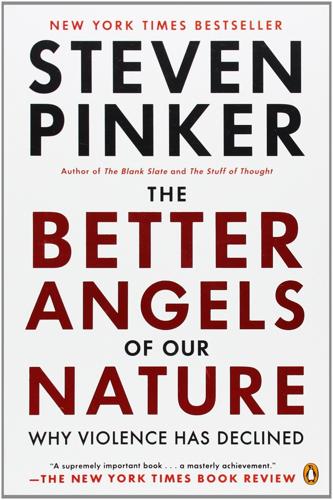
The Better Angels of Our Nature: Why Violence Has Declined
by
Steven Pinker
Published 24 Sep 2012
They estimated the heritability of aggressive behavior at around 0.44, and the heritability of criminality at around 0.75 (of which 0.33 consists of additive heritability, that is, variation that breeds true, and 0.42 consists of nonadditive heritability, variation caused by interactions among genes). Though their dataset on criminality did not distinguish violent from nonviolent crimes, they cited a Danish twin study that separated the two and that yielded a heritability estimate of 0.50 for the violent ones.145 As in most studies in behavioral genetics, the effects of being brought up in a given family were tiny to nonexistent, though other aspects of the environment that are not easily measurable by these techniques, such as effects of the neighborhood, subculture, or idiosyncratic personal experiences, undoubtedly do have effects.
…
International Journal of Conflict & Violence, 3, 40–59. Eisner, M. 2011. Killing kings: Patterns of regicide in Europe, 600–1800. British Journal of Criminology, 51, 556–77. Eley, T. C., Lichtenstein, P., & Stevenson, J. 1999. Sex differences in the etiology of aggressive and nonaggressive antisocial behavior: Results from two twin studies. Child Development, 70, 155–68. Elias, N. 1939/2000. The civilizing process: Sociogenetic and psychogenetic investigations, rev. ed. Cambridge, Mass.: Blackwell. Ellickson, R. C. 1991. Order without law: How neighbors settle disputes. Cambridge, Mass.: Harvard University Press. Ellis, B. J. 1992.
…
and commerce and cosmopolitanism Global Village government as and information killing at a distance and moral progress robots and drones weaponry temperance movement temporal discounting; see also interest, and self-control Ten Commandments Tennyson, Alfred, Lord territory: expansion of fighting for terrorism Age of Terror as asymmetrical warfare and ethnic riots failure of and fear in history and Islam nuclear power-law distribution of segregationist September statistics of suicide testosterone Tetlock, Philip Thaler, Richard That Obscure Object of Desire (film) Theisen, Ole theoconservatism theocracy theory of mind; see also empathy; mentalizing third nature third world, see developing world Thirty Years’ War Thomas, Clarence Thöni, Christian Three Mile Island Thucydides Thurmond, Strom Thyne, Clayton Till, Emmett Tilly, Charles Titchener, Edward Tit for Tat game tit-for-tat retaliation Tocqueville, Alexis de Tolstoy, Leo Tooby, John torture: abolition of death by a thousand cuts as entertainment and human sacrifice of Inquisition instruments of of martyrs in modern democracies moral rationale of museums of as punishment in Roman Empire and Roman law and sadism salvation attained by ticking-bomb scenario and witch executions totalitarianism and genocide see also autocracy; dictatorships; theocracy total war Townshend, Pete Toynbee, Arnold, A Study of History trade, international trafficking, see human trafficking Tragedy of the Commons Tremblay, Richard tribalism tribes: archaeological sites and community elders group dominance horse tribes kinship in and sorcery violence between and witchcraft see also hunter-gatherers; specific tribes Trietschke, Heinrich von Trivers, Robert Trivers-Willard theory of sex ratios Trojan War Trolley Problem Truman, Harry S. Trust game Tuchman, Barbara Tucker, G. Richard Tunisia Turing, Alan Turkey Turner, Henry Tutu, Desmond Tversky, Amos Twain, Mark Huckleberry Finn Twenge, Jean 20th century, violence in twin studies: and behavioral genetics of criminals of intelligence of personality Tylor, Edward Tyndale, William tyranny, see despotism; totalitarianism UCDP (Uppsala Conflict Data Project) Uganda Ukraine Ultimatum game Umberto I, king of Italy unemployment United Kingdom, see Britain/United Kingdom; England; Ireland; Scotland; Wales United Nations Arab Human Development Report on capital punishment Committee on Rights of the Child General Assembly on genocide and homosexuality and Iraqi invasion of Kuwait and national borders Office on Drugs and Crime and peacekeeping Security Council UNESCO motto UNESCO Trafficking Statistics Project UNICEF Child Survival Revolution and violence against women United States: American Revolution armed forces of capital punishment in closing of the frontier and Cold War, see Cold War culture war in deaths in decivilization in 1960s, demographics of geographical distribution of homicides in as great power homicide rates in immigrants to migration routes in nuclear monopoly of presidential debates presidents racism in recivilization in 1990s, violence in war deaths in Universal Declaration of Human Rights Uruguay USSR: Afghanistan invaded by before and after Cold War, see Russia collapse of collectivization in Cuban Missile Crisis expansionism genocide in as great power and nuclear weapons Stalin’s purges and World War II, see also Cold War utilitarianism utopianism uxoricide vaccination Valdesolo, Piercarlo Valentino, Benjamin Valero, Helena Valéry, Paul van der Dennen, Johan van Gogh, Theo Vasquez, John vegetarianism vengeance, see revenge Venice, democracy in Verkko’s Laws Versailles, Treaty of Vidor, King Vienna, Congress of Vietnam “Vietnam Syndrome,” Vietnam War antiwar protests atrocities in deaths in Tungsten Theory of as war of attrition vigilantism Violence Against Women Act (1994) violence triangle Virginia, homicides in vivisection Vlad the Impaler Voltaire Vonnegut, Kurt Voting Rights Act (1965) Waal, Frans de Waldman, Irwin Wales Walker, Alice Wallis, John Walsh, John Waltz, Kenneth war: alternatives to antiwar views of attrition avoidance of battle deaths, use of term categories of causes of changing attitudes toward colonial datasets Conflict Catalog Correlates of War Project Human Security Report Project Levy on great power wars Luard on PRIO L.

This Will Make You Smarter: 150 New Scientific Concepts to Improve Your Thinking
by
John Brockman
Published 14 Feb 2012
Low emotional stability predicts depression, anxiety, bipolar, borderline, and histrionic disorders. Low extroversion predicts avoidant and schizoid personality disorders. Low agreeableness predicts psychopathy and paranoid personality disorder. High openness is on a continuum with schizotypy and schizophrenia. Twin studies show that these links between personality traits and mental illnesses exist not just at the behavioral level but also at the genetic level. And parents who are somewhat extreme on a personality trait are much more likely to have a child with the associated mental illness. One implication is that the “insane” are often just a bit more extreme in their personalities than whatever promotes success or contentment in modern societies—or more extreme than we’re comfortable with.
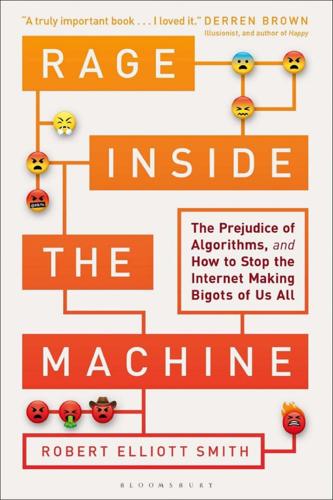
Rage Inside the Machine: The Prejudice of Algorithms, and How to Stop the Internet Making Bigots of Us All
by
Robert Elliott Smith
Published 26 Jun 2019
Having been a child prodigy himself, he had always been interested in intelligence and how this and other behavioural and character traits were transmitted from parents to child. And following the publication of Origin, he was the first person to attempt to systematically measure intelligence, inventing questionnaires, twin studies, the lexical approach, psychometrics (the science of measuring mental faculties) and differential psychology. At the same time, he was hugely influential in the fields of statistics and mathematical biology, having established the principles of correlation and regression to the mean. In 1884, he founded the Anthropometric Laboratory, first at the International Health Exhibition and then at the South Kensington Museum.
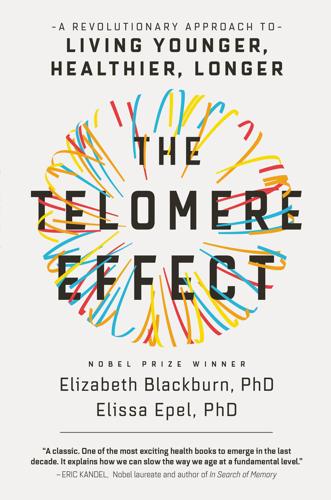
The Telomere Effect: A Revolutionary Approach to Living Younger, Healthier, Longer
by
Dr. Elizabeth Blackburn
and
Dr. Elissa Epel
Published 3 Jan 2017
Zota, “Cross-Sectional Associations Between Exposure to Persistent Organic Pollutants and Leukocyte Telomere Length Among U.S. Adults in NHANES, 2001–2002,” Environmental Health Perspectives 124, no. 5 (May 2016): 651–58, doi:10.1289/ehp.1510187. 28. Bijnens, E., et al., “Lower Placental Telomere Length May Be Attributed to Maternal Residental Traffic Exposure; A Twin Study,” Environment International 79 (June 2015): 1–7, doi:0.1016/j.envint.2015.02.008. 29. Ferrario, D., et al., “Arsenic Induces Telomerase Expression and Maintains Telomere Length in Human Cord Blood Cells,” Toxicology 260, nos. 1–3 (June 16, 2009): 132–41, doi:10.1016/j.tox.2009.03.019; Hou, L., et al., “Air Pollution Exposure and Telomere Length in Highly Exposed Subjects in Beijing, China: A Repeated-Measure Study,” Environment International 48 (November 1, 2012): 71–77, doi:10.1016/j.envint.2012.06.020; Zhang et al., “Environmental and Occupational Exposure to Chemicals and Telomere Length in Human Studies”; Bassig, B.
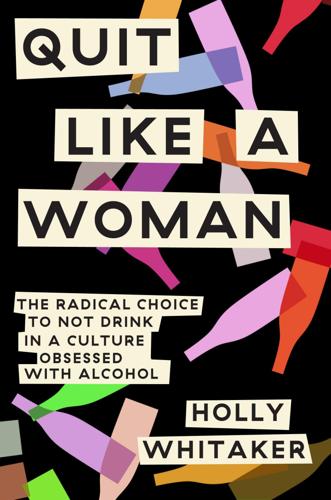
Quit Like a Woman: The Radical Choice to Not Drink in a Culture Obsessed With Alcohol
by
Holly Glenn Whitaker
Published 9 Jan 2020
I once heard a man explain his decade-old tumor as something that was always there; there in a picture of him standing in front of the Colosseum, there at his daughter’s birth, there at every Christmas. I wondered, was my addiction like that, too? Could I just not see it like he couldn’t see the tumor? Was it inevitable like that? I couldn’t decide if it was just the way I was born or the way I was raised, or the people who raised me. I was fascinated by twin studies where one twin became addicted and the other didn’t, and I was equally fascinated by some accounts asserting that only “10 percent of humans have the constellation of genes that predisposes them to addiction,” a statistic that can be rendered meaningless by observing any two-year-old with a smart-phone.

Inside the Nudge Unit: How Small Changes Can Make a Big Difference
by
David Halpern
Published 26 Aug 2015
In contrast, others seem prone to darker outlooks, or to seeing the negative side of life. It turns out that most of us seem to have a sort of set point or anchor for our well-being, and this helps to explain why we tend to give a similar answer to how satisfied we are with life when asked the same question a decade or more later. Evidence from twin studies suggests that there is at least some genetic basis for this difference. Identical twins, even when adopted and raised apart, have more similar levels of reported life satisfaction than non-identical twins. Part of these individual differences are thought to lie in cognitive style, whether rooted in genes or upbringing.
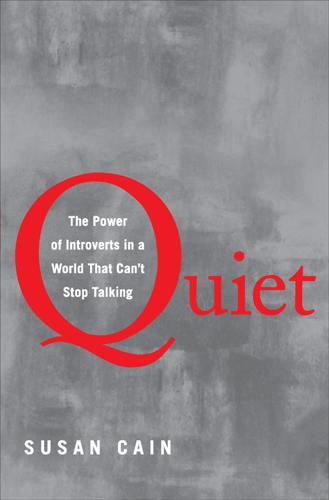
Quiet: The Power of Introverts in a World That Can't Stop Talking
by
Susan Cain
Published 24 Jan 2012
Reading Kagan’s work had had a big impact on him, however. “You changed my life,” he told Kagan. “All this time I’ve been blaming my mother, but now I think I’m a high-reactive.” So am I introverted because I inherited my parents’ high reactivity, copied their behaviors, or both? Remember that the heritability statistics derived from twin studies show that introversion-extroversion is only 40 to 50 percent heritable. This means that, in a group of people, on average half of the variability in introversion-extroversion is caused by genetic factors. To make things even more complex, there are probably many genes at work, and Kagan’s framework of high reactivity is likely one of many physiological routes to introversion.
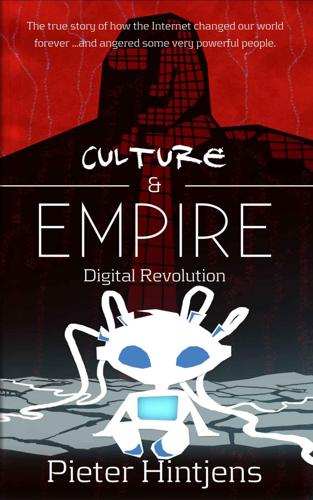
Culture & Empire: Digital Revolution
by
Pieter Hintjens
Published 11 Mar 2013
It is still a controversial notion, absent from DSM-5, which was authored by the pharmaceutical and mental health care industries. A biological basis means that personality disorders are strongly inherited, and triggered or exacerbated by environmental factors to a degree that we can actually measure, from twin studies. Yet within this exists a paradox: How can genes that make us so dysfunctional, self-destructive, and even suicidal be the result of natural selection? The same paradox applies to groups: How can collective violence and stupidity be based on inheritable instincts when they clearly seem counterproductive?

Together
by
Vivek H. Murthy, M.D.
Published 5 Mar 2020
After studying data from more than ten thousand people aged fifty or older, they concluded that the tendency to feel lonely over a lifetime, rather than just occasionally due to circumstance, is between 14 and 27 percent heritable based on an analysis of common gene variants. Other studies, including twin studies, looking at the total heritability of loneliness have pegged that number as high as 55 percent.21 But it’s important to note that loneliness is not a discrete condition but an emotional response. “What’s being inherited is not loneliness,” Cacioppo said, “it’s the painfulness of the disconnection.”22 What he meant is that the overall experience of loneliness is a complex product of our genes, past experiences, current circumstances, the culture in which we live, and our personalities.
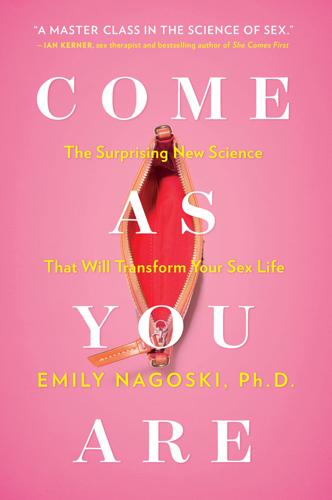
Come as You Are: The Surprising New Science That Will Transform Your Sex Life
by
Emily Nagoski Ph.d.
Published 3 Mar 2015
Drysdale, Kirsten, Ali Russell, and Andrew Glover. “Labiaplasty: Hungry Beast.” ABC TV Australia, 2010. http://vimeo.com/10883108. Duffey, Eliza Bisbee. The Relations of the Sexes. 1876. New York: Arno Press, 1974. Dunn, Kate M., Lynn F. Cherkas, and Tim D. Spector. “Genetic Influences on Variation in Female Orgasmic Function: A Twin Study.” Biology Letters 1, no. 3 (2005): 260–63. doi: 10.1098/rsbl.2005.0308. Eichelberger, Erika. “Todd Akin Not Sorry for His Insane Rape Comments.” Mother Jones, July 10, 2014, accessed July 27, 2014, http://www.motherjones.com/mojo/2014/07/todd-akin-book-legitimate-rape. Ekman, Paul. Emotions Revealed: Recognizing Faces and Feelings to Improve Communication and Emotional Life. 2nd ed.
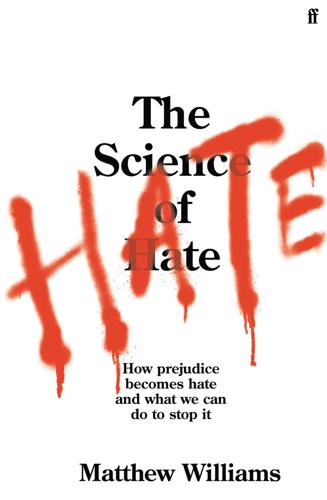
The Science of Hate: How Prejudice Becomes Hate and What We Can Do to Stop It
by
Matthew Williams
Published 23 Mar 2021
Lowes, Killer on the Streets, London: John Blake Publishing, 2003. 22. B. O’Mahoney, Hateland, London: Mainstream Publishing, 2005. 23. N. Hopkins and S. Hall, ‘Festering Hate That Turned Quiet Son into a Murderer’, Guardian, 1 July 2000. 24. K. Jang et al., ‘Heritability of the Big Five Personality Dimensions and Their Facets: A Twin Study’, Journal of Personality 64 (1999), 577–92; R. K. Krueger et al., ‘The Heritability of Personality Is Not Always 50%: Gene-Environment Interactions and Correlations between Personality and Parenting’, Journal of Personality 76 (2008), 1485–521. 25. C. G. Sibley and J. Duckitt, ‘Personality and Prejudice: A Meta-Analysis and Theoretical Review’, Personality and Social Psychology Review 12 (2008), 248–79. 26.

Lost Connections: Uncovering the Real Causes of Depression – and the Unexpected Solutions
by
Johann Hari
Published 1 Jan 2018
See Selective Serotonin Reuptake Inhibitors Star-D Trials, of SSRIs, here starvation, effects on body, here status and respect current large differences in, here disconnection from, as cause of depression, here and depression as type of submission response, here and status hierarchy in baboon troops, here and low/threatened status as source of stress, here, here, here reconnection to cooperatives and, here universal basic income and, here Stein, Richard, here, here, here stigmatization of depressed persons research on, here undermining of, as motive for chemical imbalance theory of depression, here stress long-term, as cause of depression, here impact of research on, here, here research on, here low/threatened status as source of, here, here, here Sudblock (Berlin gay club) and bonding of Kotti residents, here and Kotti neighborhood protest, here and Tuncai (homeless man), adoption of, here, here, here suicide rates, among Native American/First Nations groups, here Sullivan, Andrew, here Summerfield, Derek, here symptoms, painful of depression, as message about needed changes in society, here as key to discovering underlying problem, here, here, here, here Tamir, Maya, here taxi drivers in London, and neuroplasticity, here teenagers, ineffectiveness of antidepressants for, drug companies’ hiding of, here television, and advertising power to create materialistic desires, here sense of inadequacy generated in viewers, here Thatcher, Margaret, here Ticu, Alex, here, here tribe, human need for connection to cooperatives and, here, here and disconnection from other people as cause of depression, here, here, here, here Internet gaming and, here Tuncai (homeless man) freeing of, by Kotti protesters, here and involvement with others as treatment for depression, here and Kotti neighborhood protest, here return to psychiatric institution, here Tuncer, Neriman, here Twenge, Jean, here twins studies, and genetic factors in depression, here unhappiness, and depression, continuum between, here unions, difficulty of establishing, here United Nations, on social causes of mental illness, here universal basic income cost of implementing, here experiments with, here experiment with, in Dauphin, Canada, here effects on residents, here ending of, here Forget’s analysis of data from, here and improvements in working conditions, here, here mental health effects of, here as realizable dream, here as remedy for economic insecurity created by globalization, here, here Utopia for Realists (Bregman), here values, meaningful, disconnection from as cause of depression, here advertising’s encouragement of materialistic values and, here, here and chemical imbalance model of depression, here link between materialism and depression, here and materialism, destructive effects of, here, here values, meaningful, reconnecting to, here alternative lifestyle designed for, here banning of advertising and, here and consumer values, experiment in changing, here difficulty of, here meditation and, here psychedelic drugs and, here Vietnam, author’s food poisoning in, here, here Virno, Paul, here Virtually Normal (Sullivan), here wand, healing.

Rationality: What It Is, Why It Seems Scarce, Why It Matters
by
Steven Pinker
Published 14 Oct 2021
In J. M. Cooper, ed., Plato: Five dialogues—Euthyphro, Apology, Crito, Meno, Phaedo (2nd ed.). Indianapolis: Hackett. Polderman, T. J. C., Benyamin, B., de Leeuw, C. A., Sullivan, P. F., van Bochoven, A., et al. 2015. Meta-analysis of the heritability of human traits based on fifty years of twin studies. Nature Genetics, 47, 702–9. https://doi.org/10.1038/ng.3285. Popper, K. R. 1983. Realism and the aim of science. London: Routledge. Poundstone, W. 1992. Prisoner’s dilemma: John von Neumann, game theory, and the puzzle of the bomb. New York: Anchor. President’s Council of Advisors on Science and Technology. 2016.

The Red Queen: Sex and the Evolution of Human Nature
by
Matt Ridley
Published 14 Aug 1993
F., 308, 322, 339 Slime-mould, 98 Small, Meredith, 205 Smith, Adam, 89 Smith, Holly, 317 Smith, Robert, 223 Smolker, Rachel, 189 Smuts, Robert, 280 Snails, 78–9 Social contracts, 324 Social Darwinism, 307 Social skills, 243, 244 Social status, see Dominance Society, individual in, 11–13 Sociobiology (Wilson), 21 Socioecology, 180–81, 183–6 Sociology, 307–8 Sparrows, 225–7 Spatial skills, 239, 242–3, 249 Species, survival of, 32 Sperm competition theory, 205–18, 222, 223 Status, see Dominance Strawberries, 55–6 Suetonius, 193 Sumeria, 192 Sunquist, Mel, 111 Survival of the fittest, 33 Swallows, 148–9, 203, 215–16, 219 Swift, Jonathan, 202 Symington, Meg, 112, 113, 115 Symmetry, 147–9 Symons, Donald, 176, 184, 224, 245, 261, 263, 265, 287, 322, 328 Syntactic Structures (Chomsky), 311 Tacitus, 193, 195 Talmud, 115 Tang Dynasty, 192 Tangled bank theory, 58–61, 63, 78–9, 83 Tannen, Deborah, 245 Tardigrades, 82, 83 Taxonomic assumption, 303–4 ‘Temple of Nature, The’ (Darwin), 24 Terns, 135–6, 139 Territoriality, 171, 180, 196 inheritance and, 230 Tess of the D’Urbervilles (Hardy), 230 Testicular size, 211–14 Testosterone, 20, 118, 151–2, 246–50, 255–7 Thai people, 235 Thinness, 278–82 Thornhill, Nancy Wilmsen, 234, 235, 259, 276 Thornhill, Randy, 224 Thorpe, William, 278 Through the Looking-Glass (Carroll), 2, 17, 62 Tiberius, 193 Tierra, 67 Tiger, Lionel, 17 Tinbergen, Nikolaas, 277 Tooby, John, 74, 80, 96, 106, 267, 303, 311, 321, 329 Toolmaking, 313–14 Topminnows, 79–80 Tragedy of the commons, 87, 122 Transposons, 91–2 Trivers, Robert, 110–15, 118–22, 129, 172, 205, 325 Trobriand Islanders, 229 Trojan War, 197–8 Trollope, Anthony, 322 Trumai people, 234 Trypanosomes, 72–3 Turkeys, 104 brush, 127–8 coalition of males among, 189 Turner’s syndrome, 247, 249 Twin studies of homosexuality, 271 Udayama, 191–2 United States Department of Agriculture, 116 University of Michigan, 291 Vaccination, 71 Van Valen, Leigh, 61–2 Veiga, José, 225–6 Verbal tasks, 242, 243, 249 Vermelin, H., 105 Vicar of Bray hypothesis, 30–31, 36, 47, 50, 61, 78, 83 Violence, 195–8 gender differences in, 241 jealousy and, 228 Virgin greenflies, 28, 29 Viruses, 69, 90 AIDS, see HIV artificial, 66–7 fusion and, 99 Voles, 239 Volterra, Vito, 81 Vrijenhoek, Robert, 79–80 Waist-to-hip ratio, 282–4 Wallace, Alfred Russel, 27, 131, 138 War, 195–8 Wason test, 323–4 Wasps, 103, 104 Water fleas, 39, 47, 48 Way Men Think, The (Hudson and Jacot), 245 Wealth, 187–95, 198, 236 beauty and, 280–282 incest taboos and, 276 inheritance of, 230–35 ornamentation as sign of, 291 sexual mentality and, 258–60 Weill, Kurt, 238 Weismann, August, 8, 28, 30–31, 83 Welch, David, 54 Westermarck, Edward, 274–7 Whales, 212 White cells, 72 Whiten, Andrew, 324–5 Whole object assumption, 303 Willard, Dan, 110–15, 118, 120–22 Williams George, 35–40, 54–7, 58, 60–61, 83, 88, 110 Wilmot, John, 298 Wilson, Edward, 21, 266, 339 Wilson, Margo, 227–8 Windsor, Duchess of, 279, 281 Wolfe, Tom, 225, 279, 291, 322 Woodpeckers, 189, 222 World War II, 256 Wrangham, Richard, 206, 221 Wright, Sewall, 35 Wynne Edwards, V.
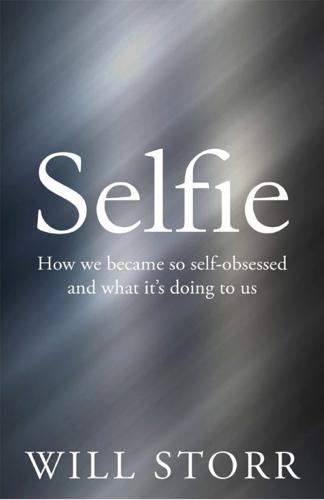
Selfie: How We Became So Self-Obsessed and What It's Doing to Us
by
Will Storr
Published 14 Jun 2017
They’re also thought to experience synaesthesia: ‘Synesthesia: A new approach to understanding the development of perception’, Ferrinne Spector, Daphne Maurer, Developmental Psychology (January 2009), 45(1), pp. 175–89. These connections start dying off at a rate of up to 100,000 per second: The Self Illusion, Bruce Hood (Constable, 2011), p. 15. In a major study, researchers in Queensland collated the results of 2,748 papers: ‘Meta-analysis of the heritability of human traits based on fifty years of twin studies’, Tinca J. C. Polderman et al., Nature Genetics (May 2015), 47, pp. 702–9. Co-author Beben Benyamin added: ‘Are we products of nature or nurture? Science answers age-old question’, 19 May 2015, https://www.theguardian.com/science/2015/may/19/are-we-products-of-nature-or-nuture-science-answers-age-old-question.
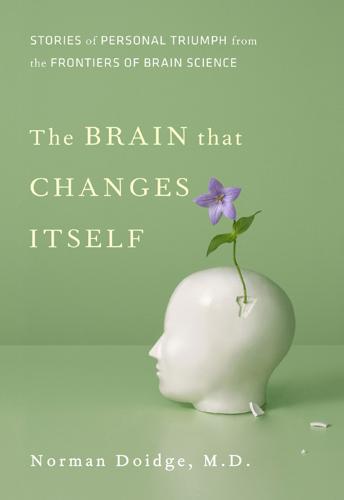
The Brain That Changes Itself: Stories of Personal Triumph From the Frontiers of Brain Science
by
Norman Doidge
Published 15 Mar 2007
Sur, Mriganka surgery cochlear implants in for epilepsy for infant cataracts plastic postoperative phantom pain and see also deafferentation symbols, relationships of synaptic connections new formation of possible number of strengthening of syndactyly (webbed-finger syndrome) synesthesia tactile-vision device tai chi Tallal, Paula Taub, Edward animal rights campaign against background of behaviorism and current collaborative experiments of deafferentation experiments of lab monkeys of learned-nonuse theory of personality of Silver Spring laboratory of Taub, Mildred Taub Therapy Clinic aphasia patients at brain tumor patient with radiation damage at cerebral palsy patients at constraint-induced (CI) movement therapy of improvements achieved by length of training at massed practice technique of reduced brain maps restored by shaping technique of training principles of television watching orienting responses triggered by temporal lobes temporal processing theme extraction Thomas, Sean thought abstract vs. concrete speed of see also imagination thought translation machines tinnitus TMS (transcranial magnetic stimulation) repetitive (rTMS) Tocqueville Alexis de tongue display tongue nerves totalitarian regimes touch, sense of transcutaneous electrical nerve stimulation (TENS) transference positive tsunami of Turnbull, Oliver twin studies underwater vision unlearning of bad habits blocked in inveterate bachelor and falling in love grief in long-term depression (LTD) in oxytocin in parenting and unmasking use it or lose it, principle of adolescent pruning back as in age-related cognitive decline brain sectors and in OCD treatment pain and sensory deprivation and Vaillant, George van Praag, Henriette Vasari, Giorgio vasopressin Vaughn, Susan vestibular apparatus vestibular nuclei video games Vietnam Head Injury Study vision, visual system balance system linked to cultural effect on in dreams field of narrowed span of peripheral prism inversion glasses and pupil adjustment in underwater vestibular apparatus linked to visual cortex of Braille readers brain maps of of deaf people sensory reassignment in switching to processing touch and sound in blindfold experiment visualization von Ruden, Nicole Wall, Patrick Watson, John B.
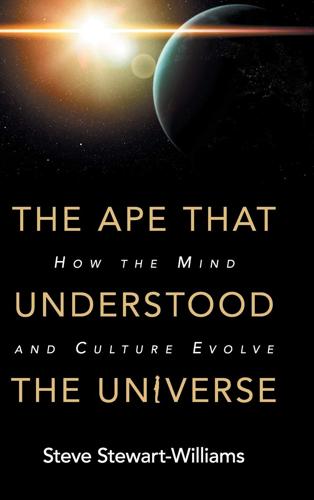
The Ape That Understood the Universe: How the Mind and Culture Evolve
by
Steve Stewart-Williams
Published 12 Sep 2018
Oxford University Press. Pinker, Susan. (2008). The sexual paradox: Troubled boys, gifted girls, and the real difference between the sexes. New York: Scribner. Polderman, T. J. C., Benyamin, B., de Leeuw, C. A., et al. (2015). Meta-analysis of the heritability of human traits based on fifty years of twin studies. Nature Genetics, 47, 702–709. Pollan, M. (1990). The botany of desire: A plant’s-eye view of the world. New York: Random House. Popper, K. R. (1979). Objective knowledge: An evolutionary approach. Oxford, UK: Clarendon. Pound, N., Lawson, D. W., Toma, A. M., et al. (2014). Facial fluctuating asymmetry is not associated with childhood ill-health in a large British cohort study.

The Language Instinct: How the Mind Creates Language
by
Steven Pinker
Published 1 Jan 1994
Shields (Eds.), Proceedings of the 17th Annual Meeting of the Berkeley Linguistics Society: General Session and Parasession on the Grammar of Event Structure. Berkeley, Calif.: Berkeley Linguistics Society. Birdsong, D. 1989. Metalinguistic performance and interlinguistic competence. New York: Springer-Verlag. Bishop, D., V. M., North, T., & Conlan, D. 1993. Genetic basis for Specific Language Impairment: Evidence from a twin study. Unpublished manuscript, Medical Research Council Applied Psychology Unit, Cambridge, U.K. Bley-Vroman, R. 1990. The logical problem of foreign language learning. Linguistic Analysis, 20, 3–49. Bloom, A. H. 1981. The linguistic shaping of thought: A study in the impact of language on thinking in China and the west.

Deep Nutrition: Why Your Genes Need Traditional Food
by
Catherine Shanahan M. D.
Published 2 Jan 2017
If one twin sister drinks a lot of milk and moves to Hawaii (where her skin can make vitamin D in response to the sun) while the other avoids dairy and moves to Minnesota, then one will predictably develop weaker bones than the other and will likely suffer from more hip, spine, and other osteoporosis-related fractures.26 The epigenetic twin study tells us that it’s not only their X-rays that will look different, their genes will, too. Scientists are becoming convinced that failure to attend to the proper care and feeding of our bodies doesn’t just affect us, it affects our genes—and that means it may affect our offspring. Research shows that when one sibling has osteoporosis and the other doesn’t, you’ll find the genes encoding for bone growth in the osteoporotic member have gone to sleep, having been tagged, temporarily, to stay unexposed and dormant.27 Fortunately, they’ll wake up from their slumber if we change our habits.

NeuroTribes: The Legacy of Autism and the Future of Neurodiversity
by
Steve Silberman
Published 24 Aug 2015
She was also free of the heavy load of guilt that Kanner, Eisenberg, and Bettelheim laid on American parents. “When I read Kanner’s later papers,” Lorna told me, “I thought they were bloody stupid. I knew I wasn’t a refrigerator mother.” One of the leading lights of the London group was Michael Rutter, also at the Institute of Psychiatry. He conducted the first twin study of autism with a research fellow named Susan Folstein, which provided proof of the genetic basis of the condition for the first time. Rutter’s early work also decisively untangled autism from schizophrenia, showing that they were separate conditions that only rarely occur together. Despite all the anecdotal evidence to the contrary accumulated by parents, the biggest empirical question that remained unanswered into the 1960s was whether autism was as rare as Kanner continued to insist that it was.
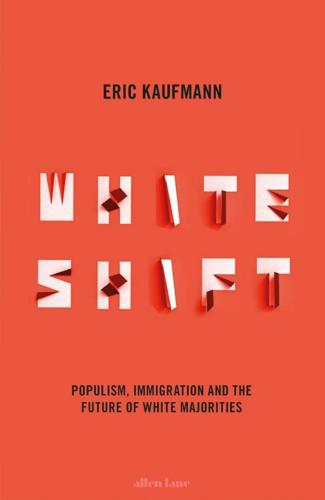
Whiteshift: Populism, Immigration and the Future of White Majorities
by
Eric Kaufmann
Published 24 Oct 2018
A significant minority of people who lead highly mobile urban lives are what Stanley Feldman or Karen Stenner would call ‘authoritarian’ in outlook – preferring order and consensus to diversity and dissent. Others are conservative, favouring the status quo over change.99 Meanwhile, an important tranche of people who have never moved from the town they were born in are liberal. These differences may begin in the womb – twin studies suggest a third to a half of political behaviour is inherited – and continue with early childhood socialization related to strict or permissive parenting.100 This induces a baseline receptivity to certain ideas which tends to be self-fulfilling. Someone with a mildly authoritarian predisposition is somewhat more likely to favour capital punishment.
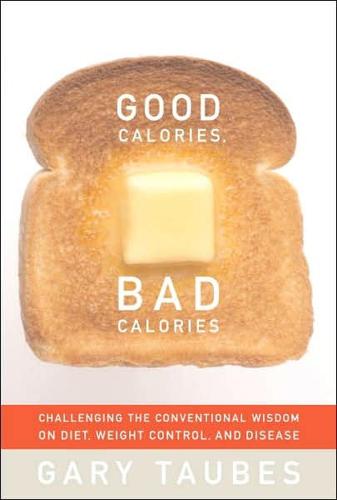
Good Calories, Bad Calories: Challenging the Conventional Wisdom on Diet, Weight Control, and Disease
by
Gary Taubes
Published 25 Sep 2007
Sims’s studies: Data and observations from these are scattered over numerous publications; the account given here is taken mostly from Sims 1976; Sims et al. 1973; Goldman et al. 1976; Sims et al. 1968. “marked differences…”: Sims et al. 1973. “lost weight readily…”: Quoted in Bennett and Gurin 1982:19. “in response to both…”: Sims 1976:393. Bouchard’s twin study: Bouchard et al. 1990. Levine reported: Levine et al. 1999. “Genetic factors…”: Bouchard et al. 1990. Animal husbandry: See Mayer 1968:45–46. “Up until that moment…”: Interview, Ingrid Schmidt. Mayer studied obese mice: Mayer 1968:49. Tanner and Chambers: Tanner 1869b:220–21. Footnote. Ibid.:222–23.

Capital in the Twenty-First Century
by
Thomas Piketty
Published 10 Mar 2014
The correlation coefficient ranges from 0.2–0.3 in Sweden and Finland to 0.5–0.6 in the United States. Britain (0.4–0.5) is closer to the United States but not so far from Germany or France (0.4). Concerning international comparisons of intergenerational correlation coefficients of earned income (which are also confirmed by twin studies), see the work of Markus Jantti. See the online technical appendix. 29. The cost of an undergraduate year at Harvard in 2012–2013 was $54,000, including room and board and various other fees (tuition in the strict sense was $38,000). Some other universities are even more expensive than Harvard, which enjoys a high income on its endowment (see Chapter 12). 30.